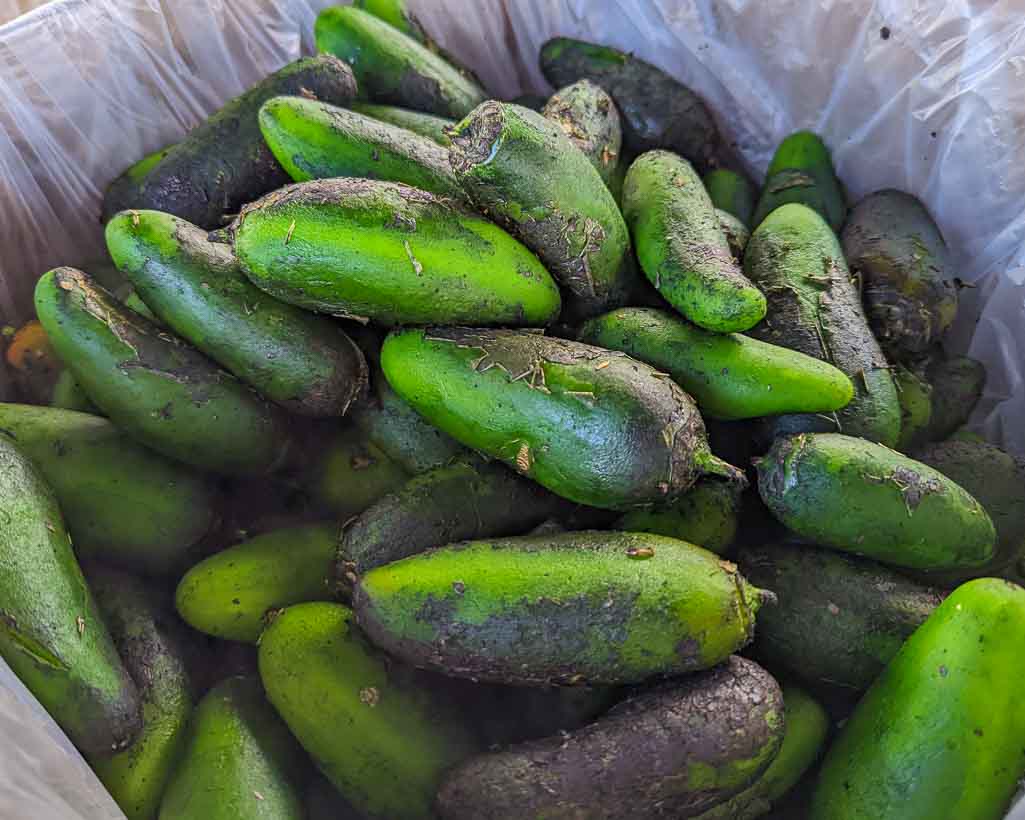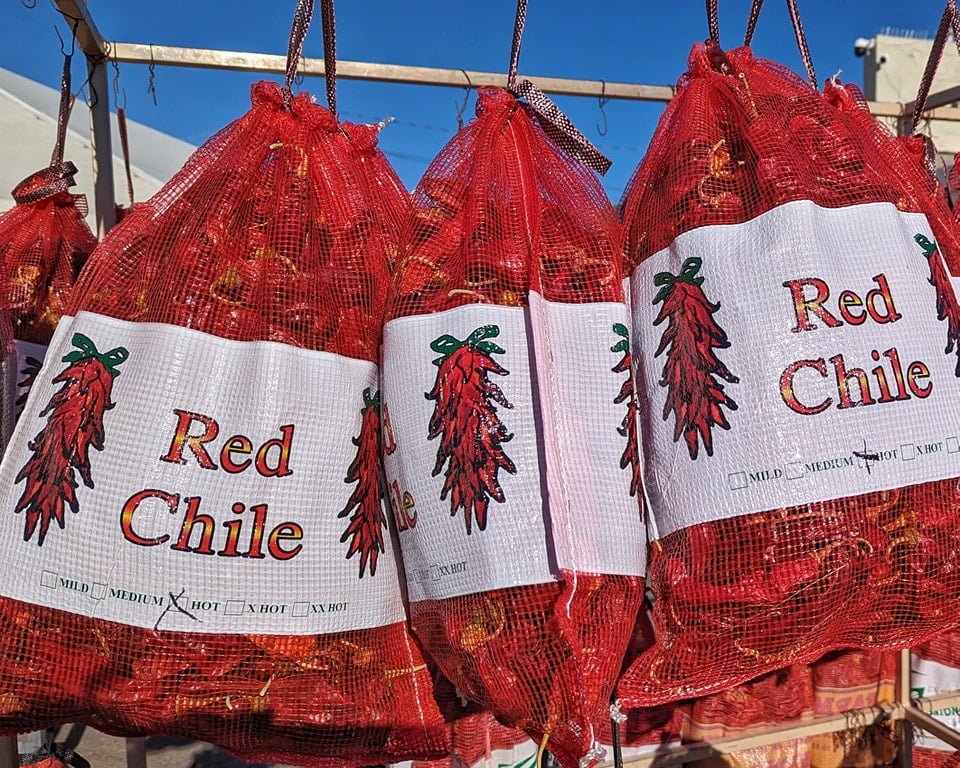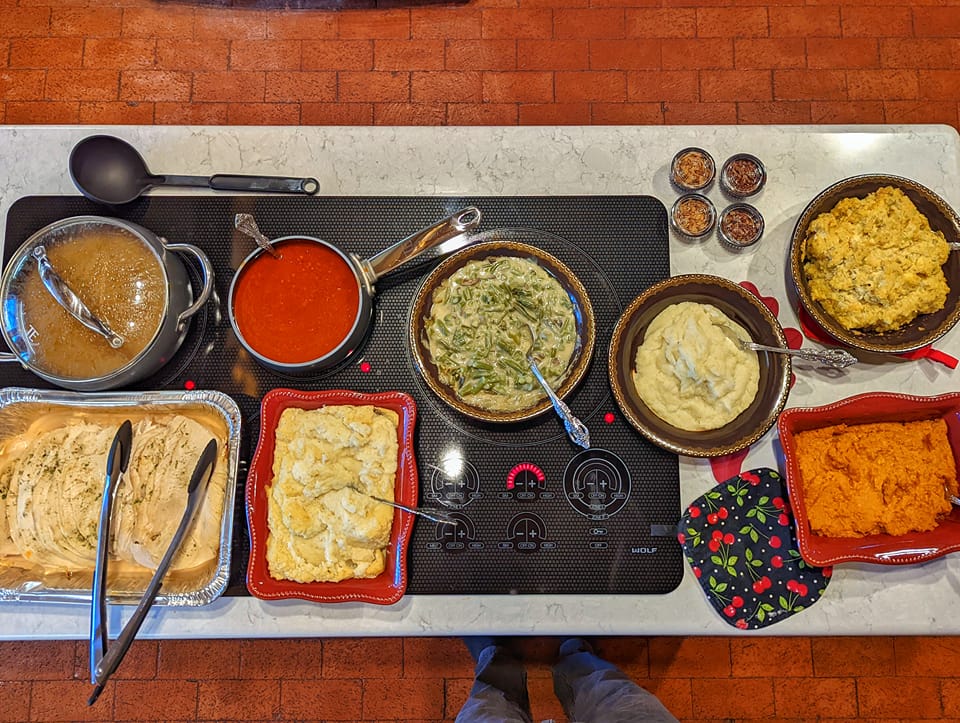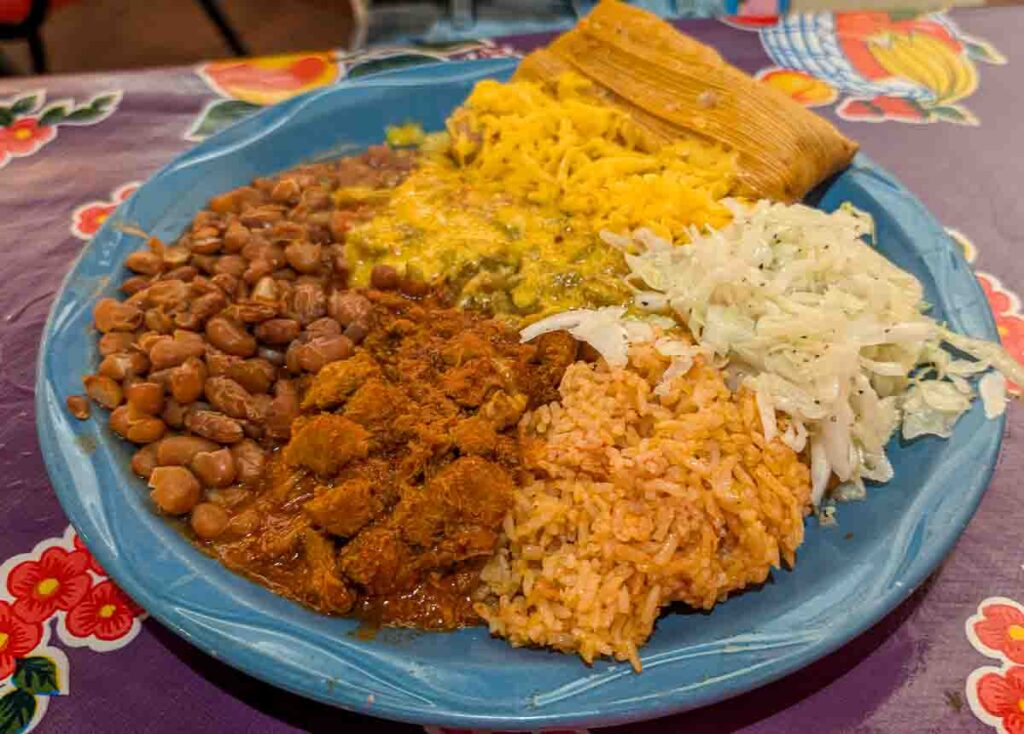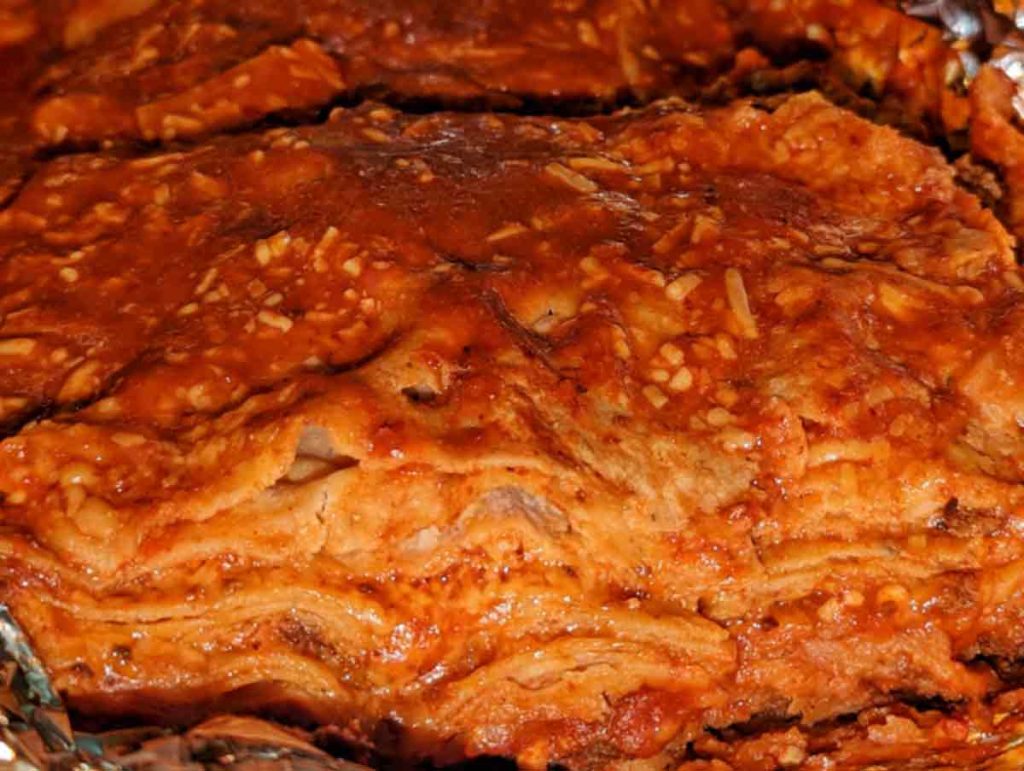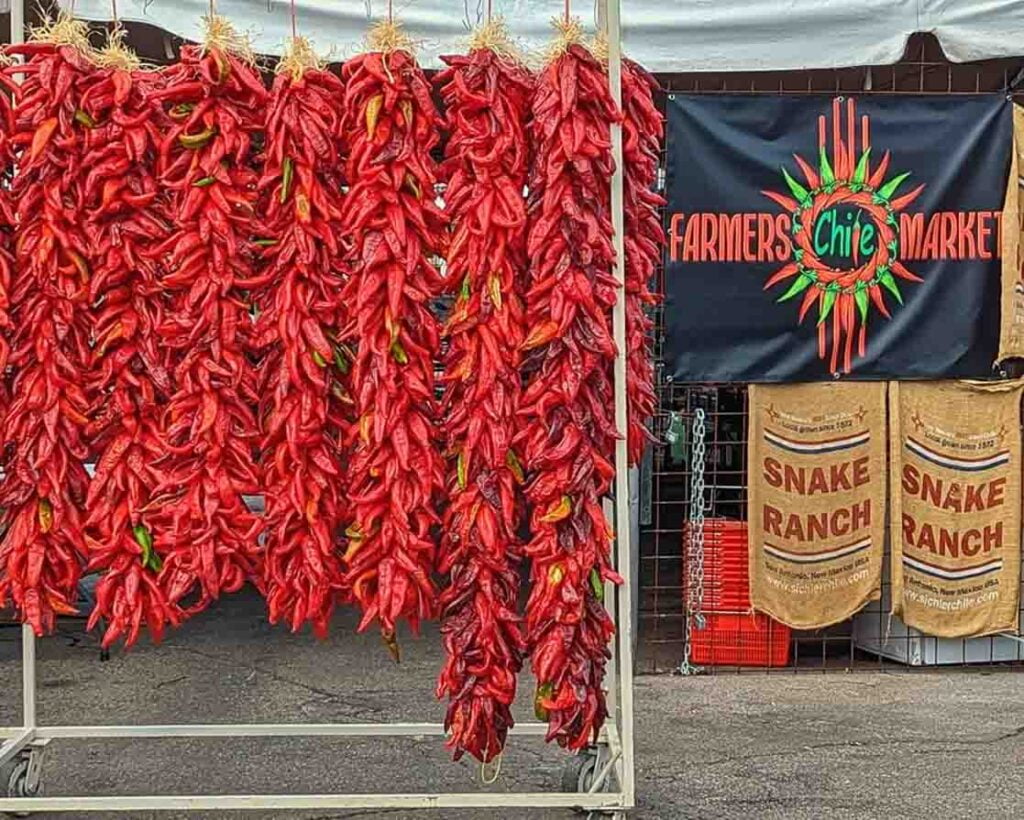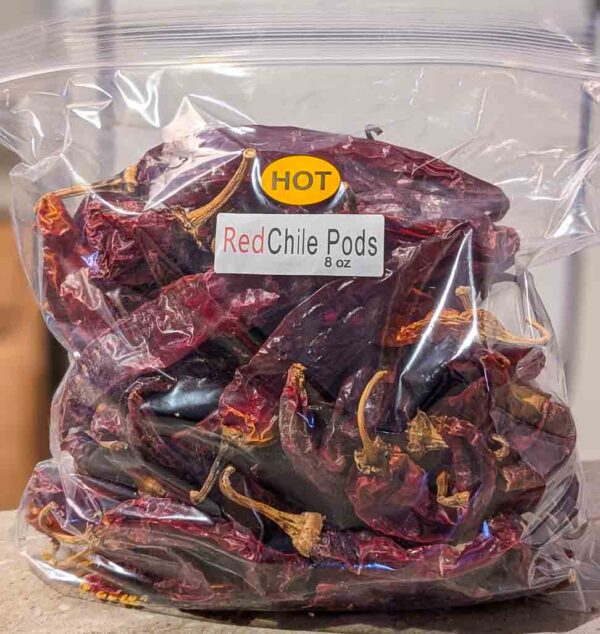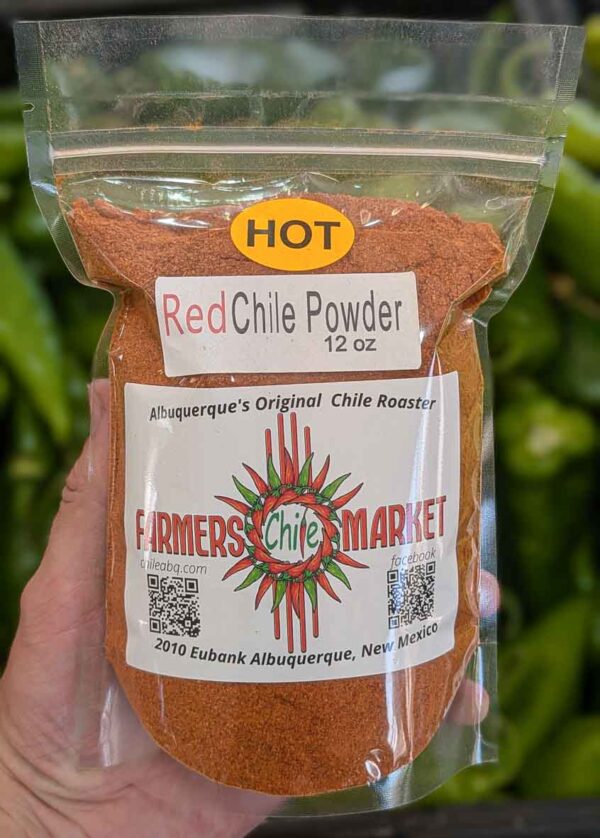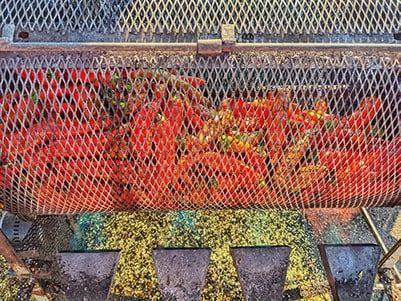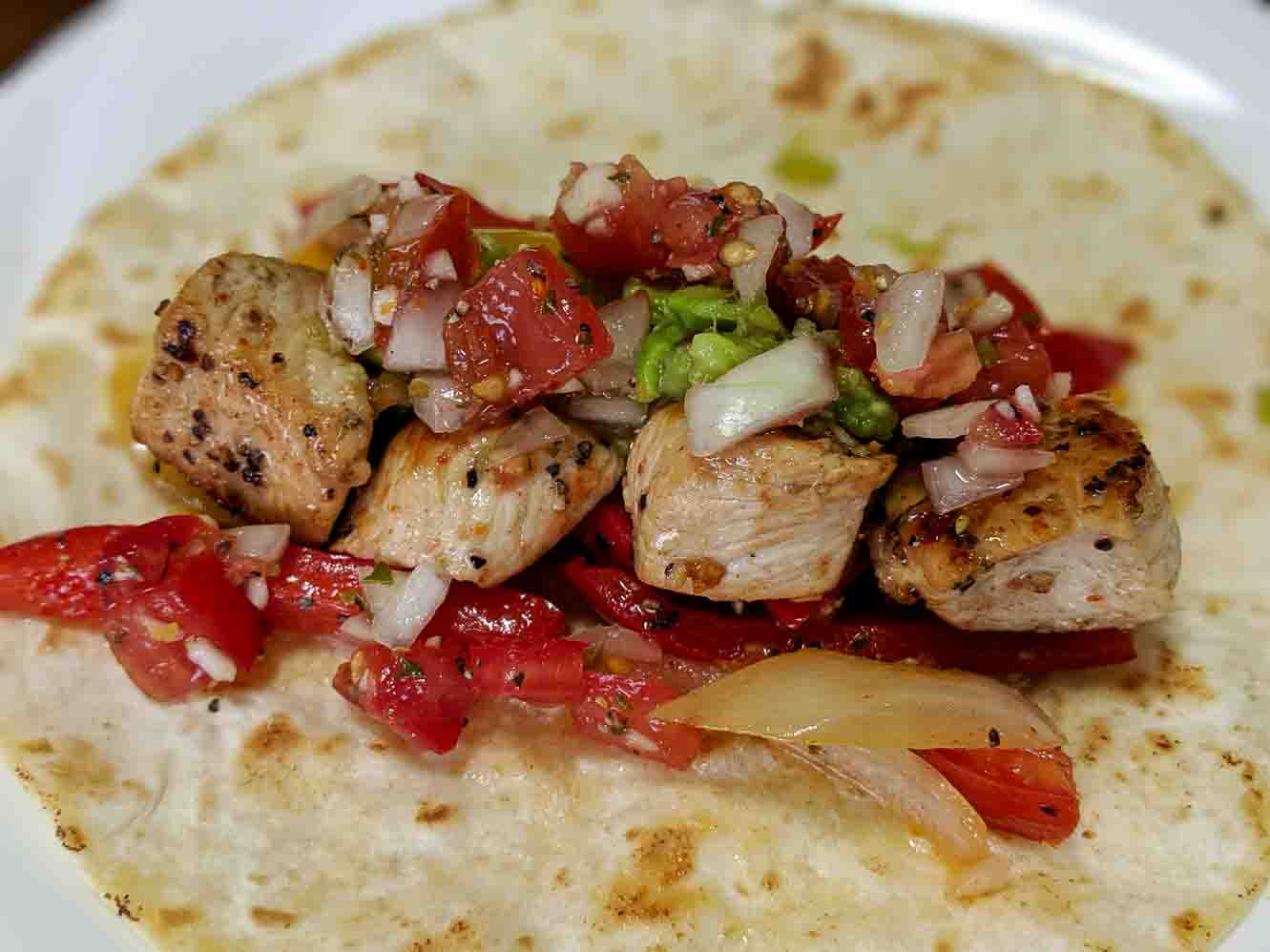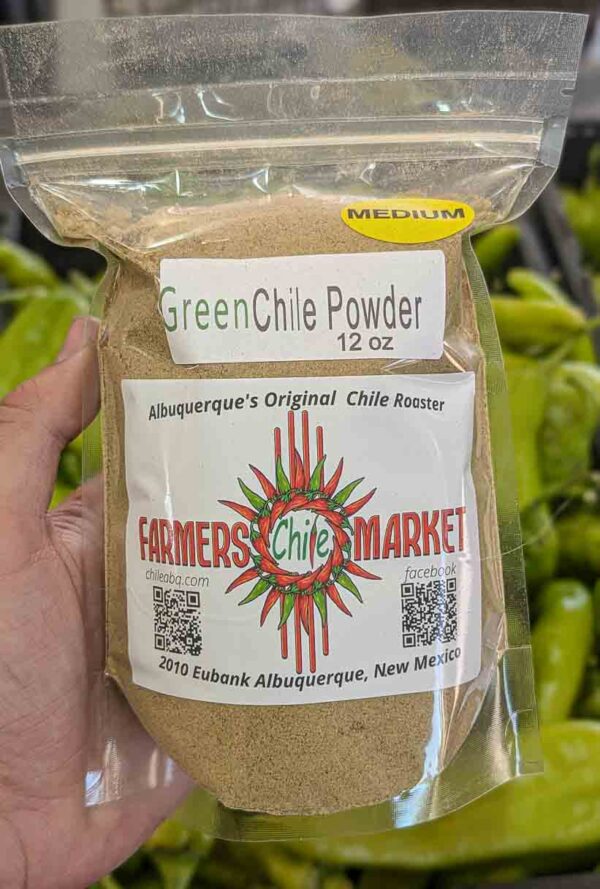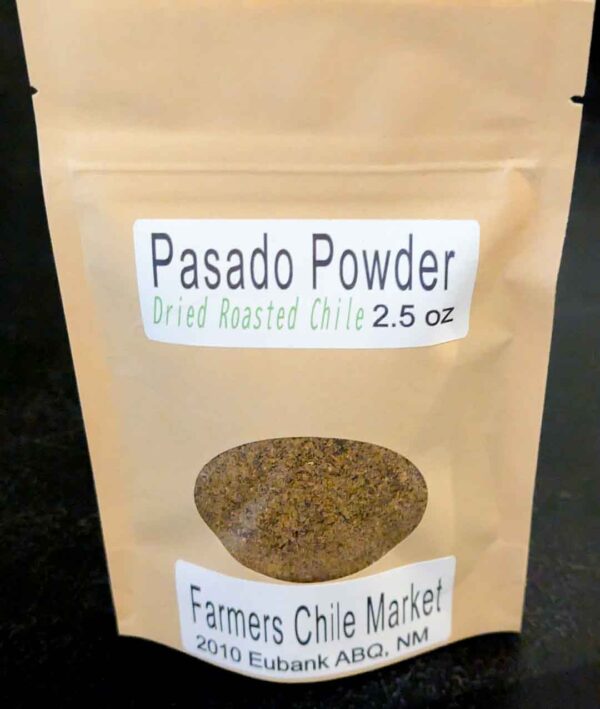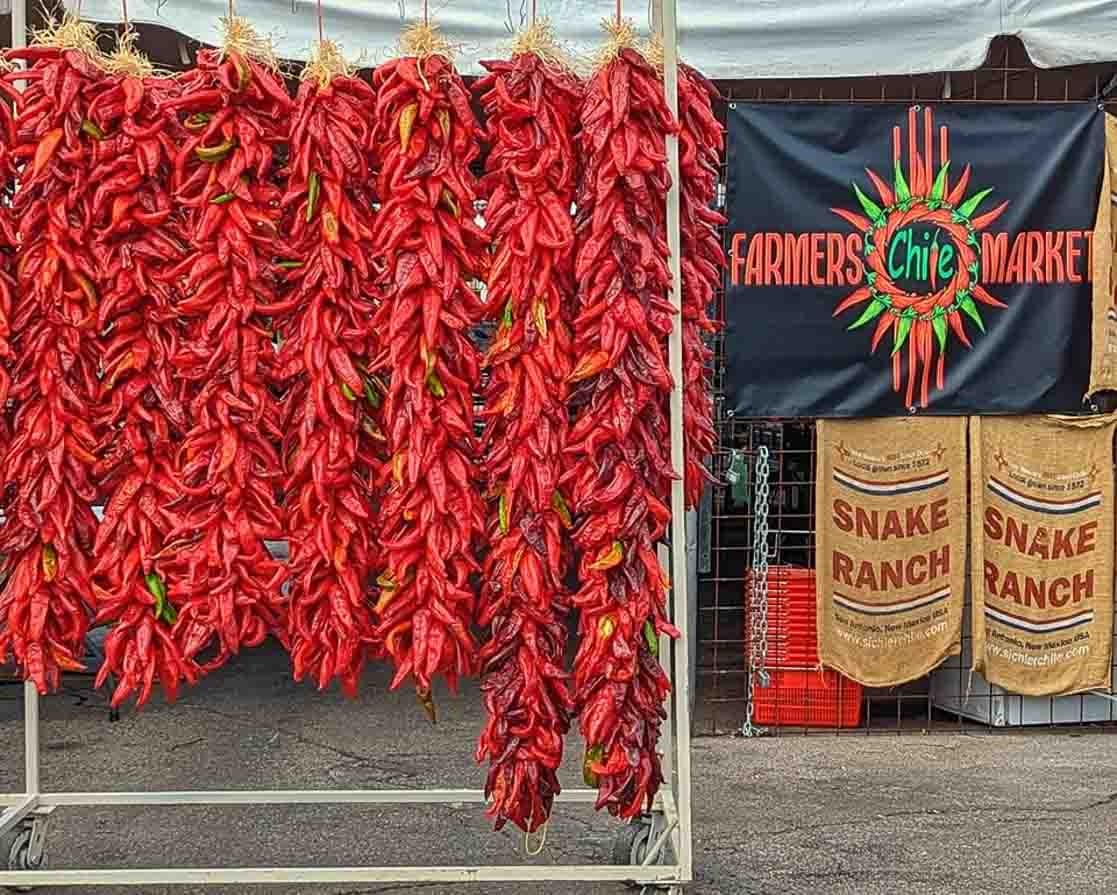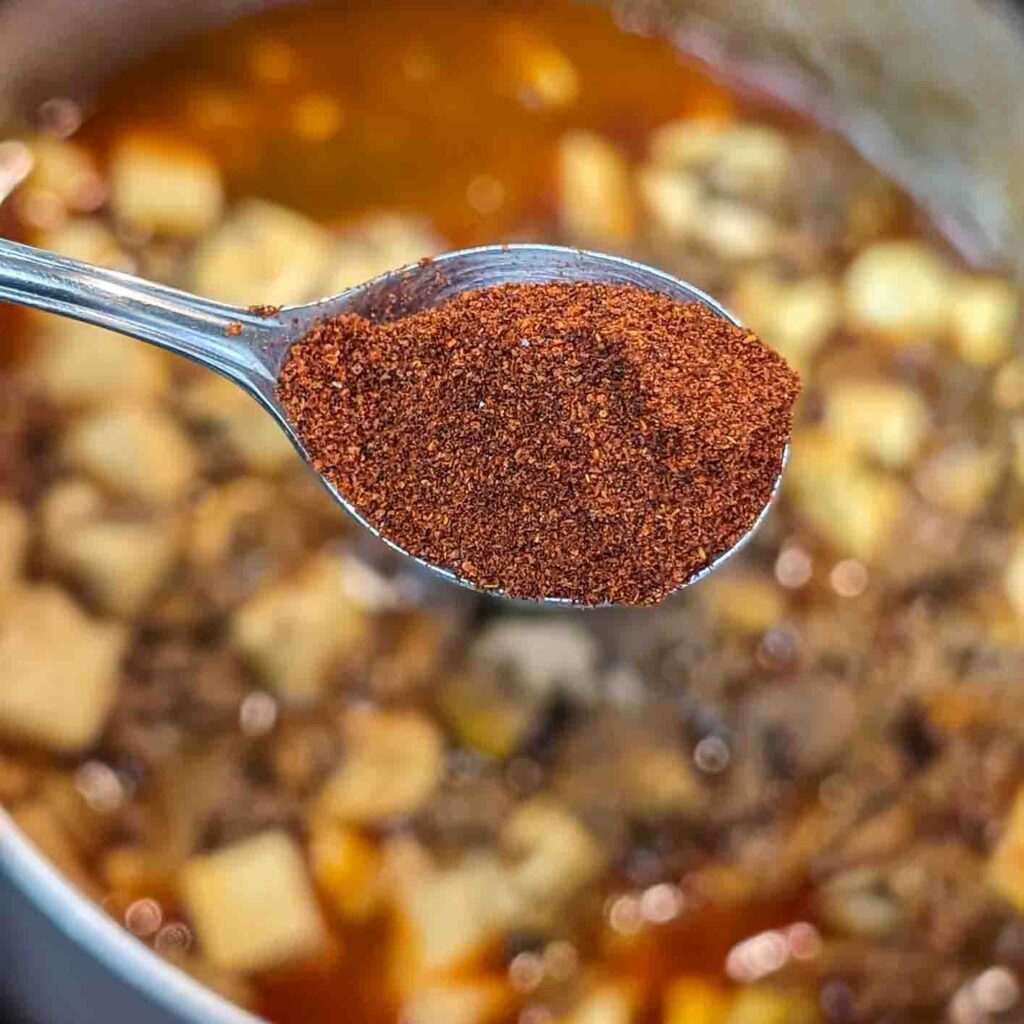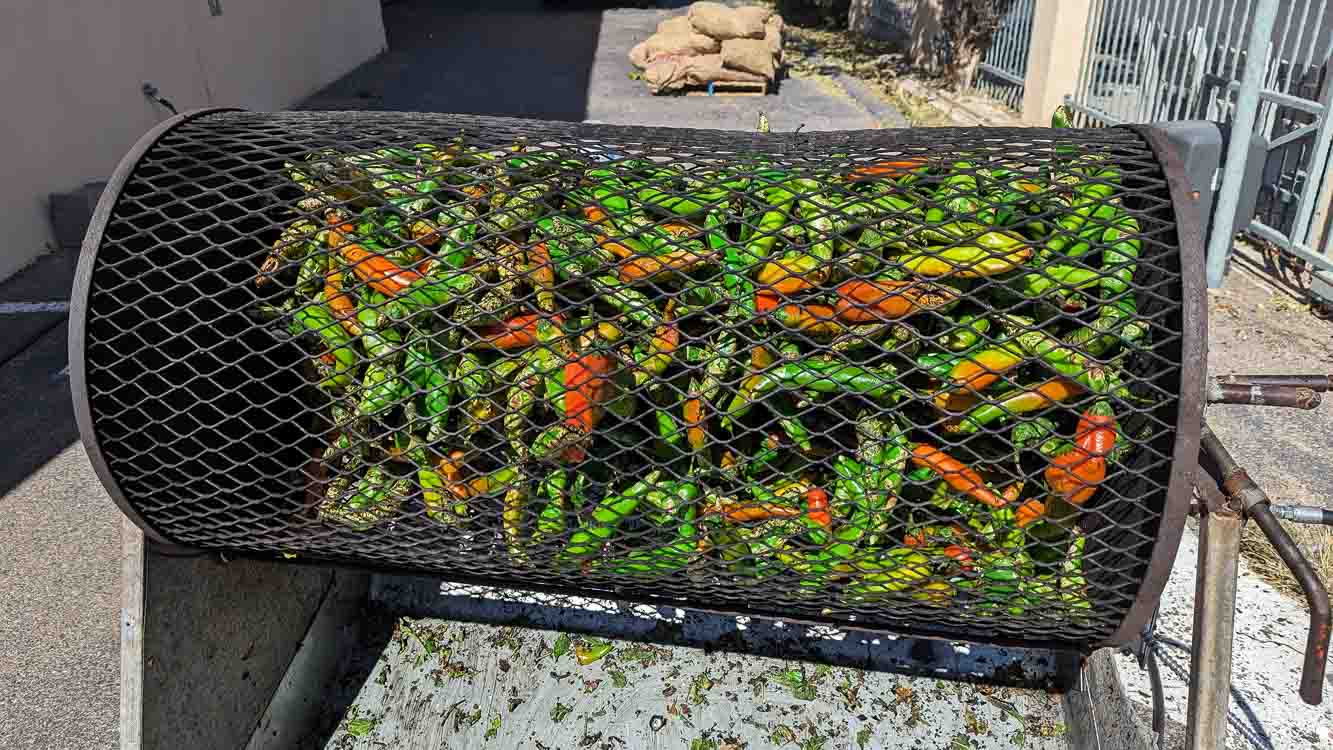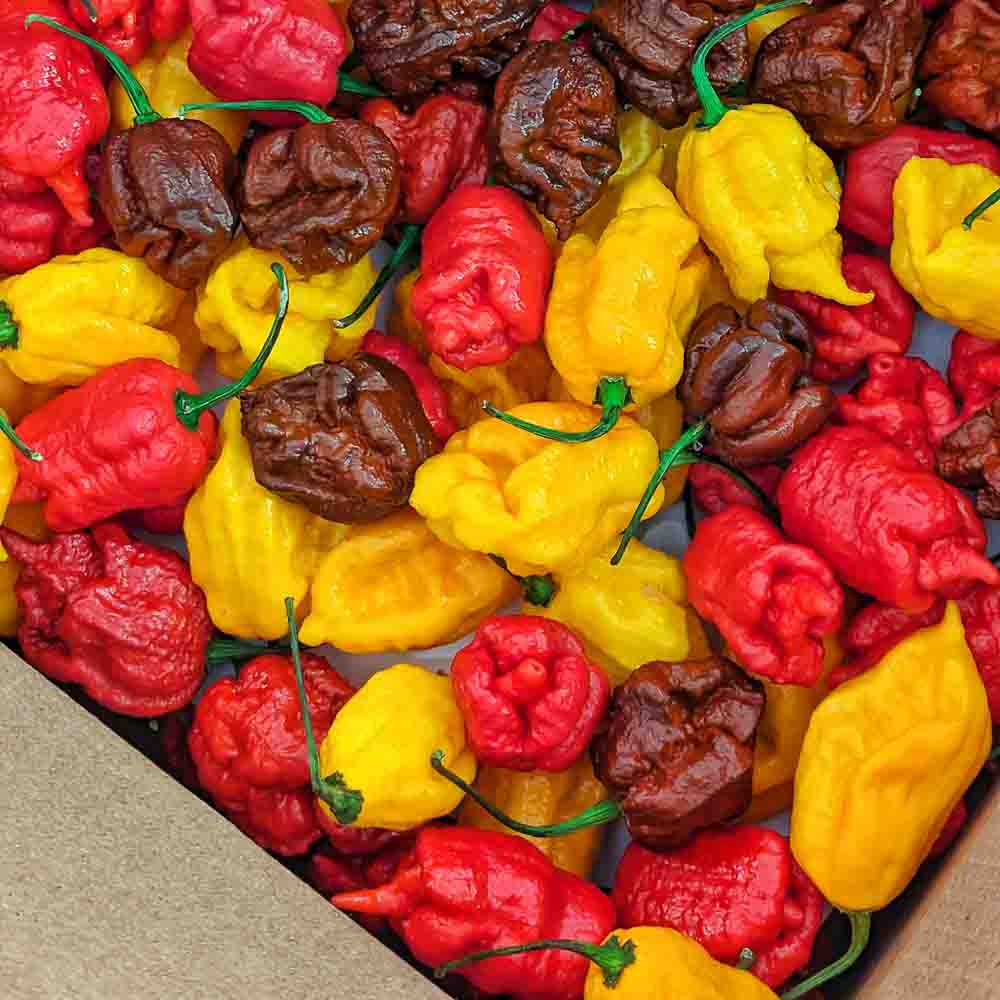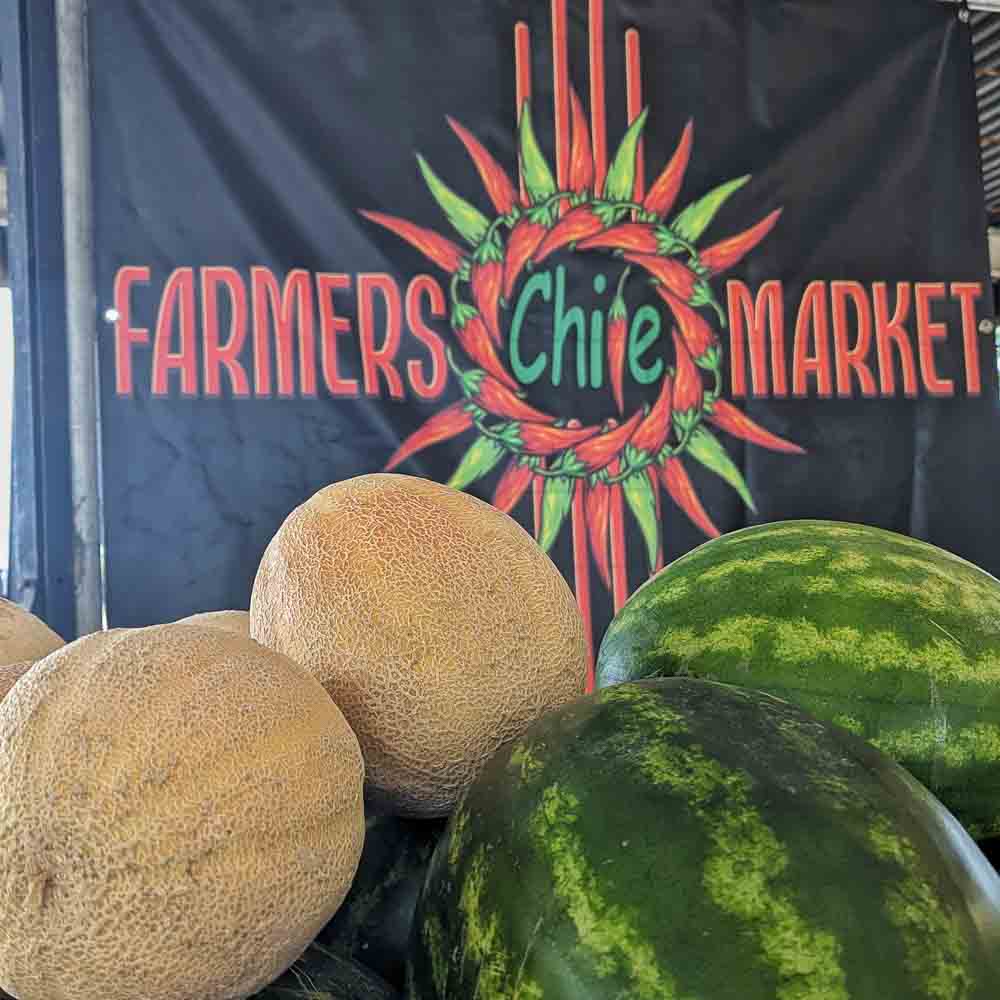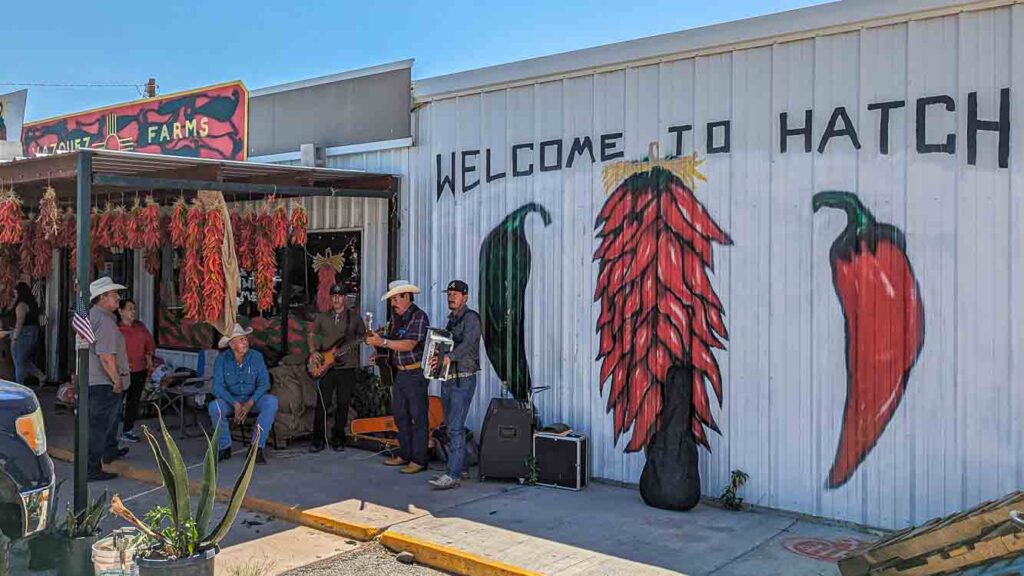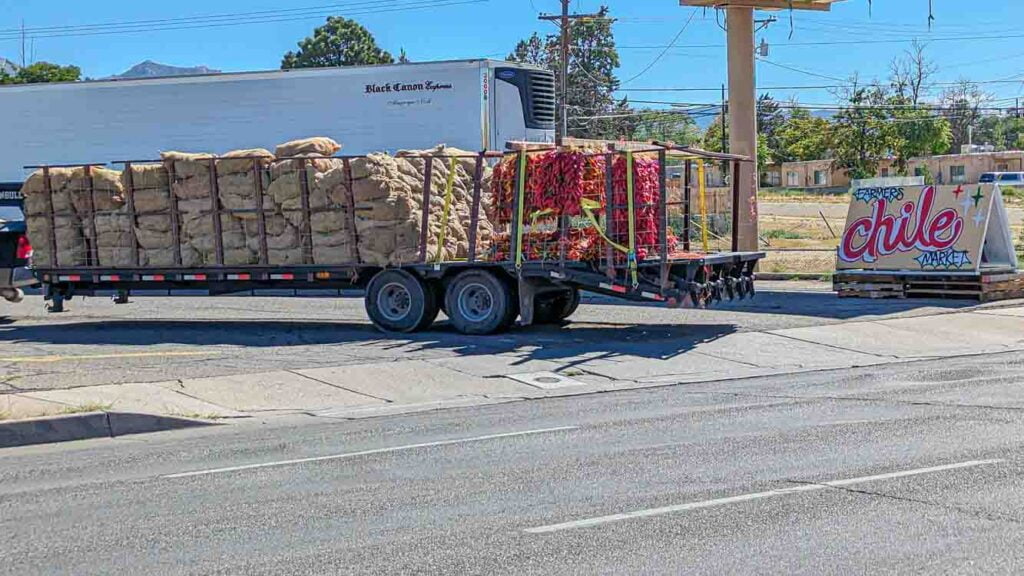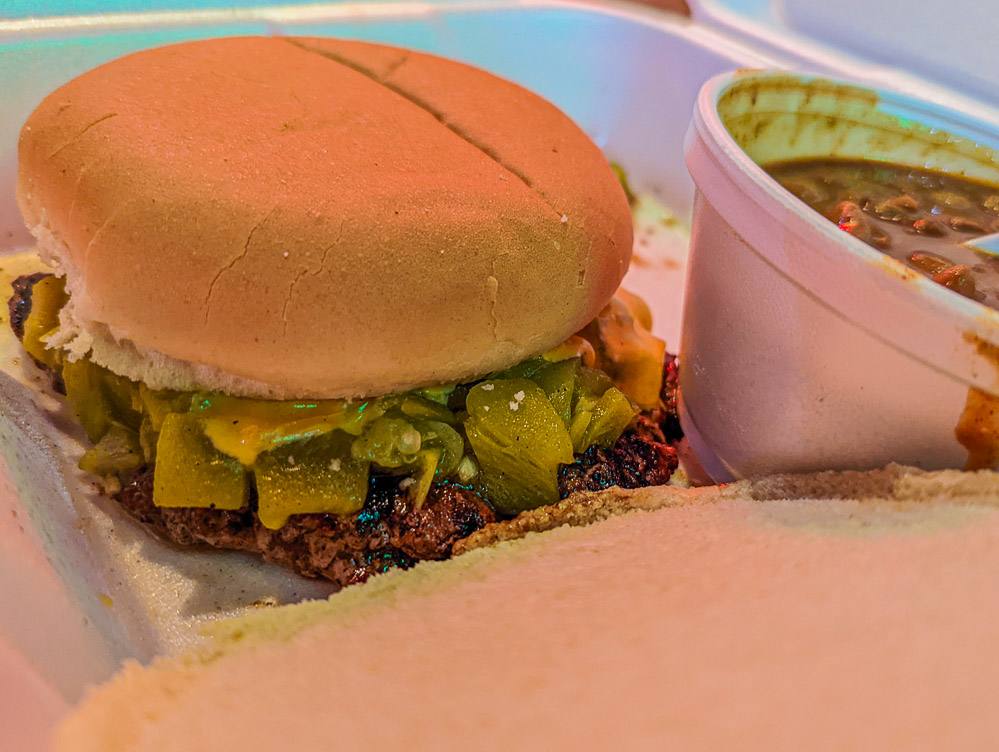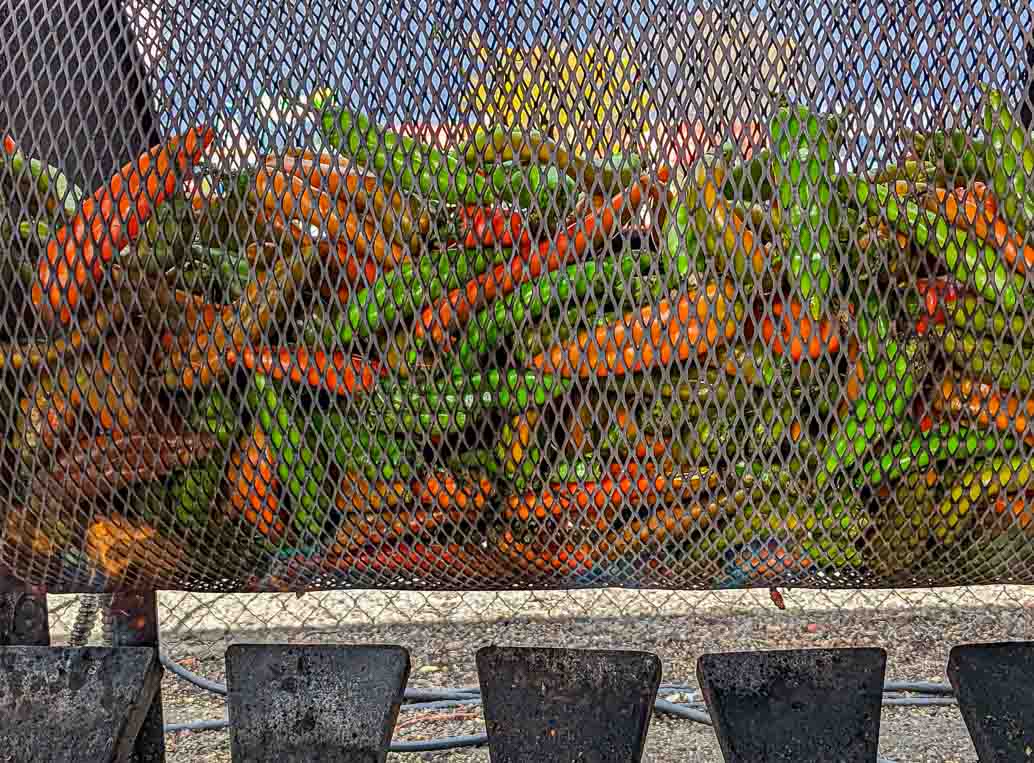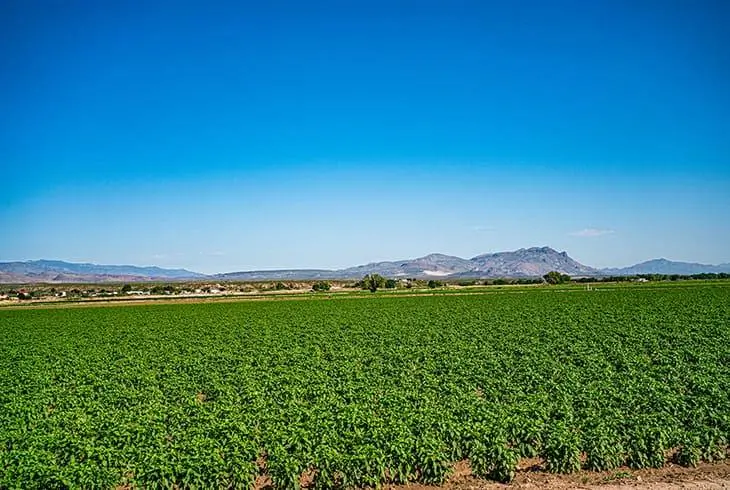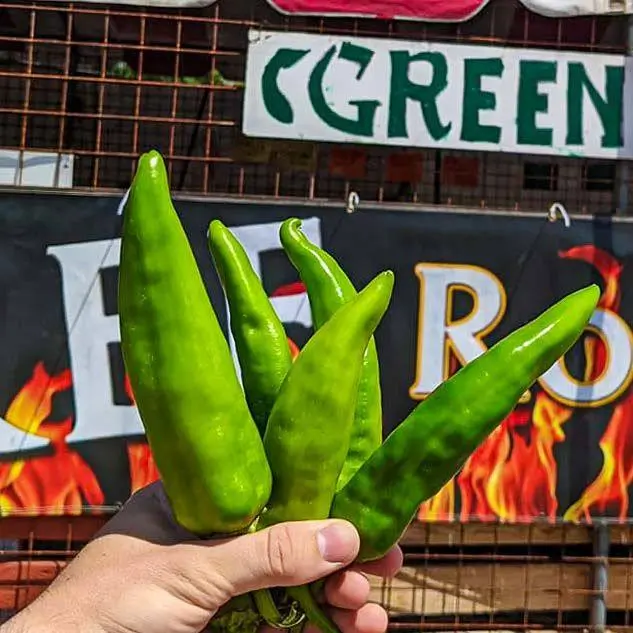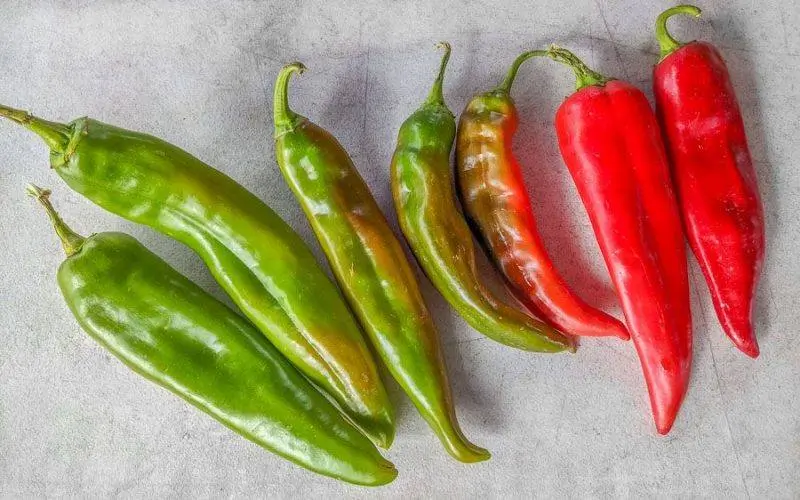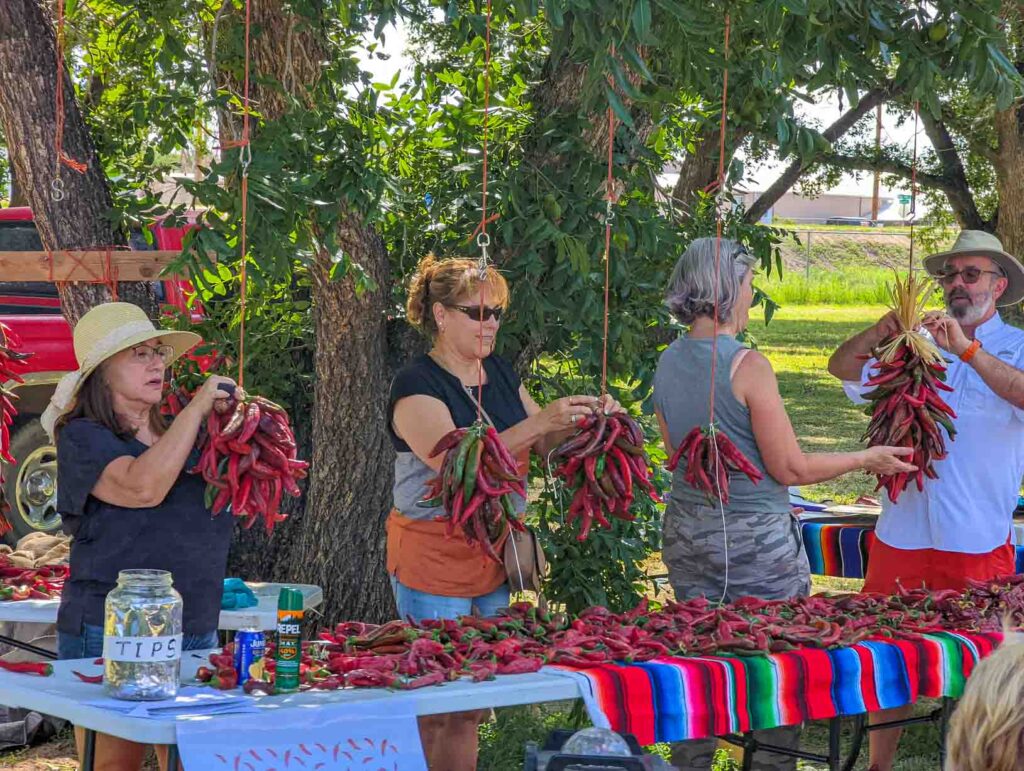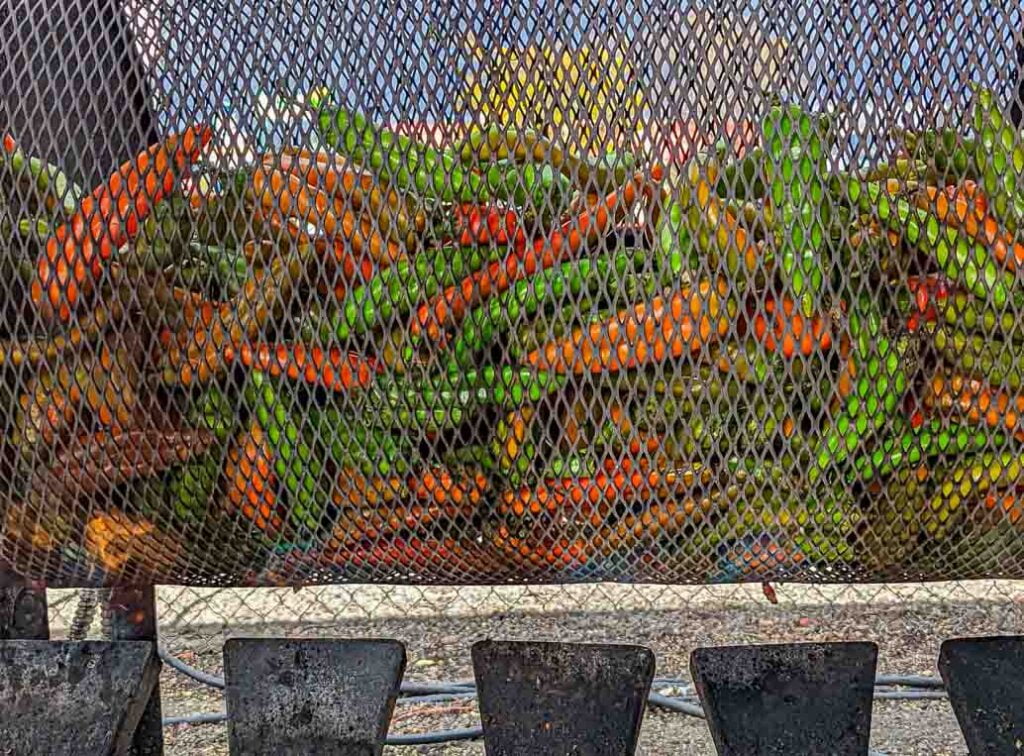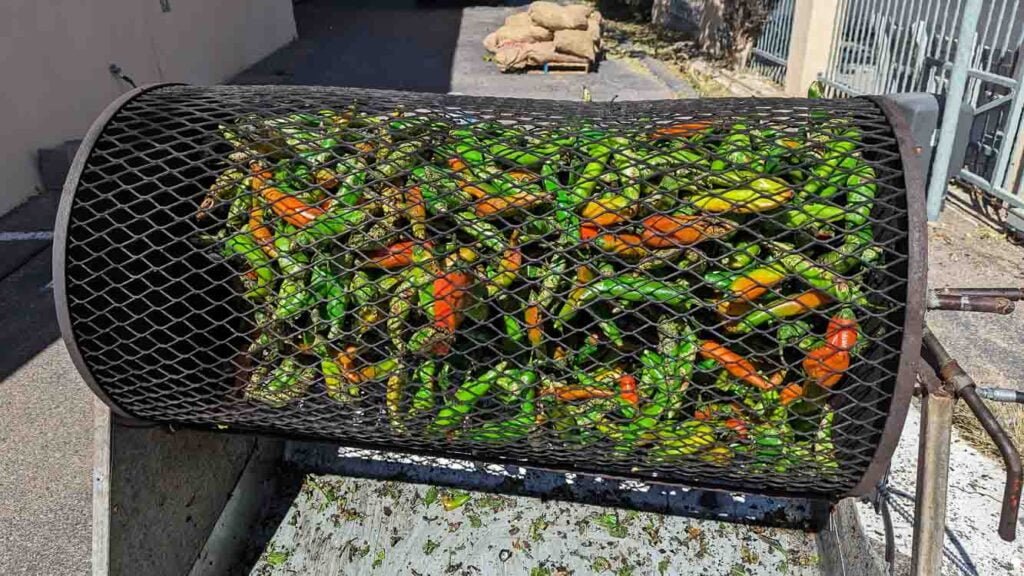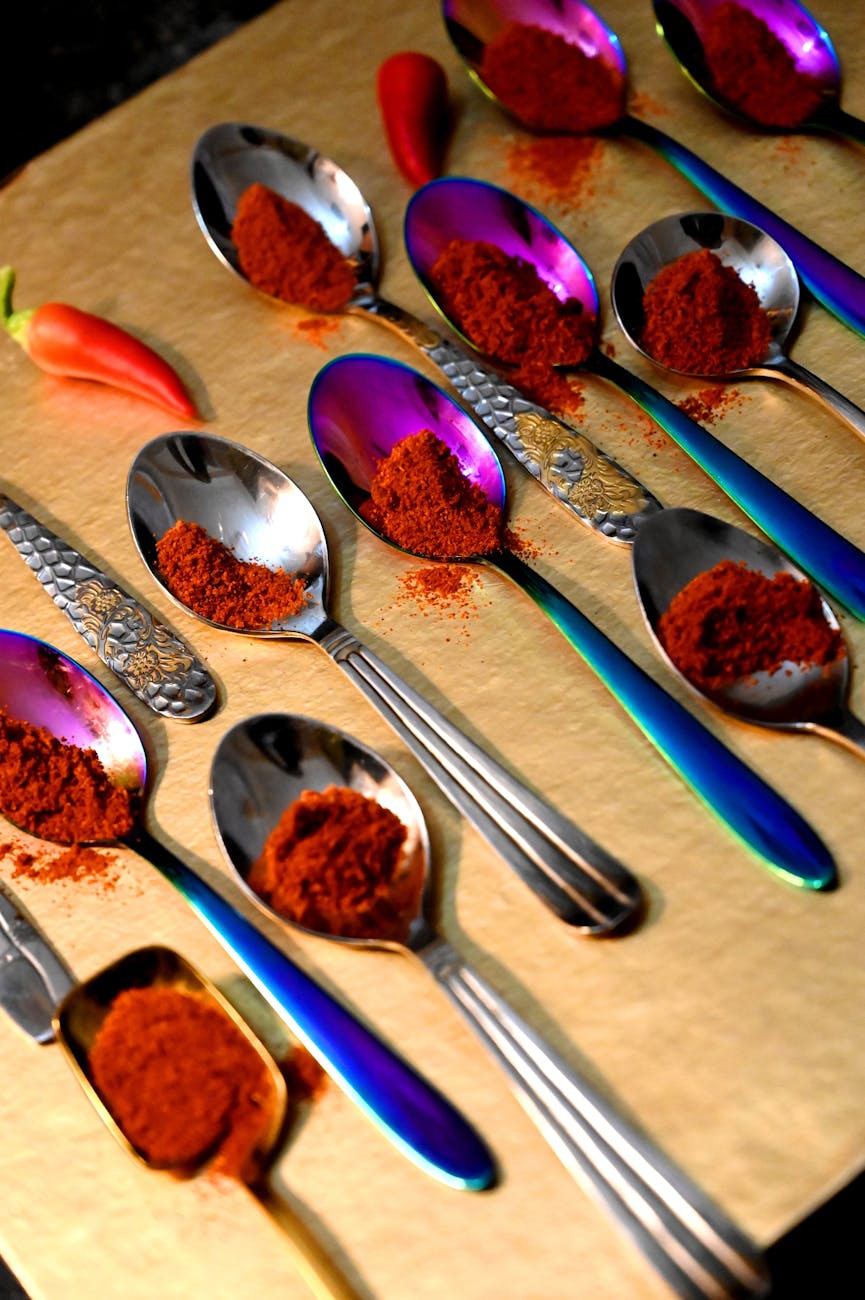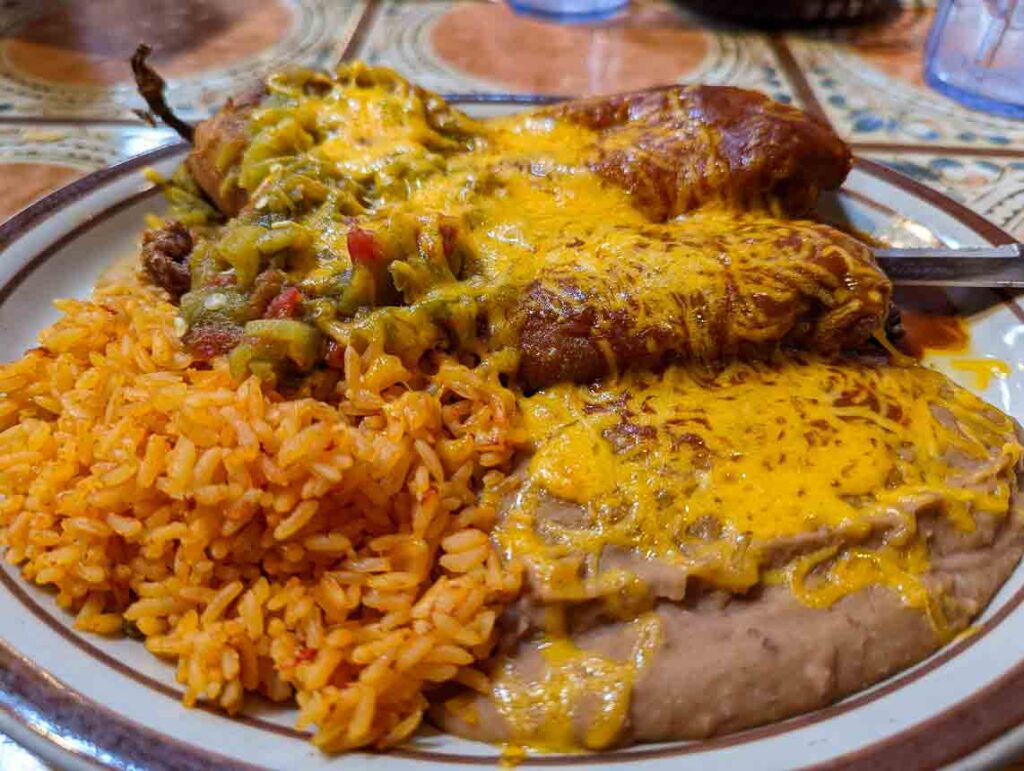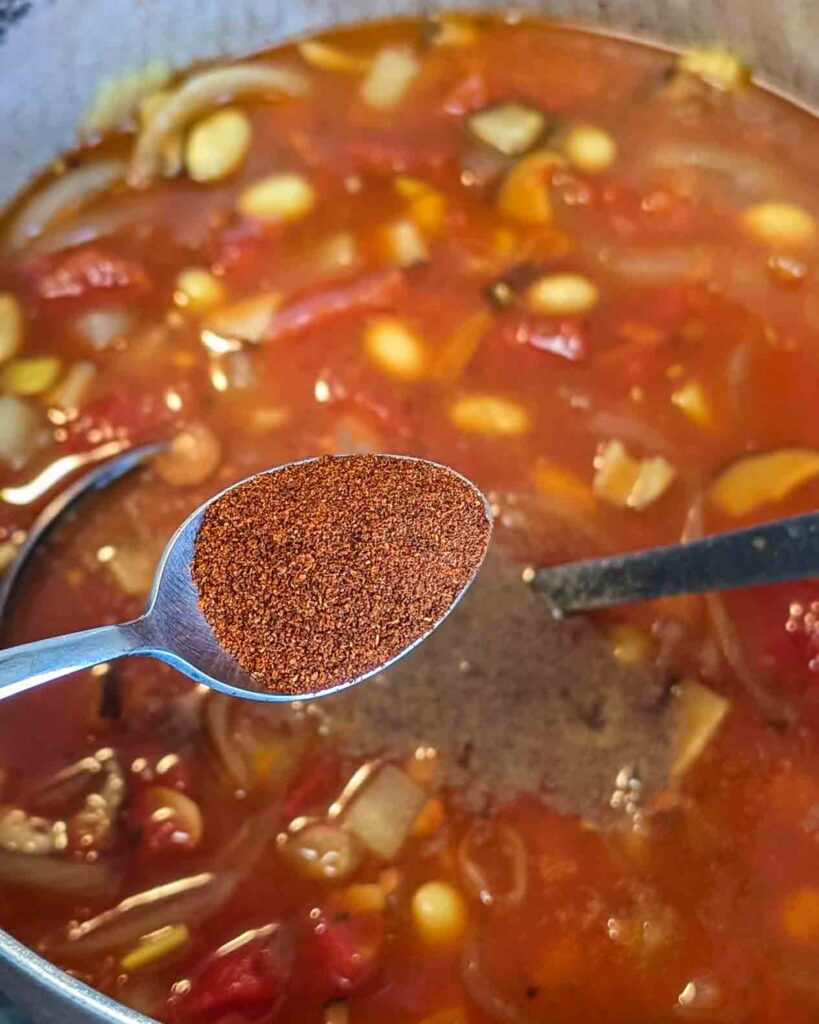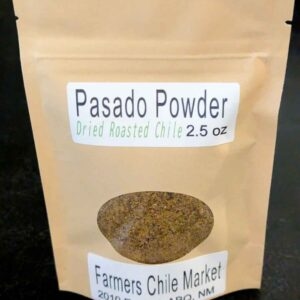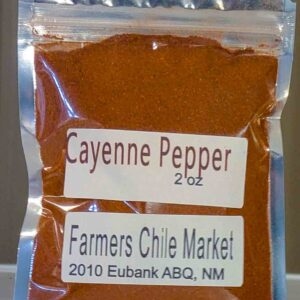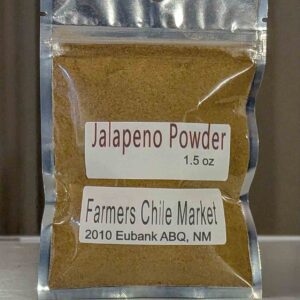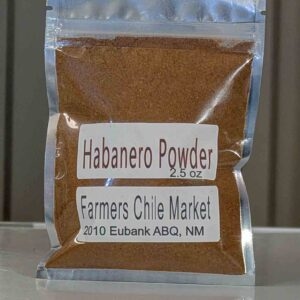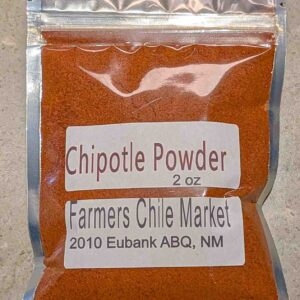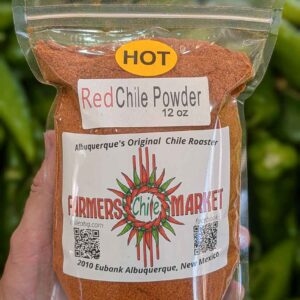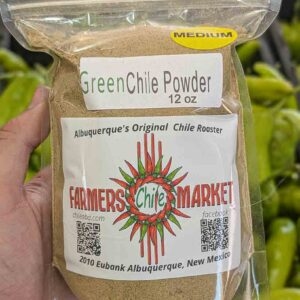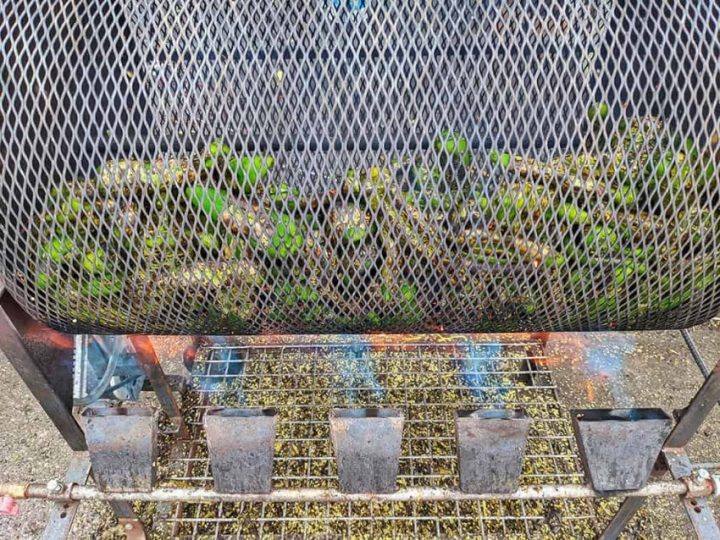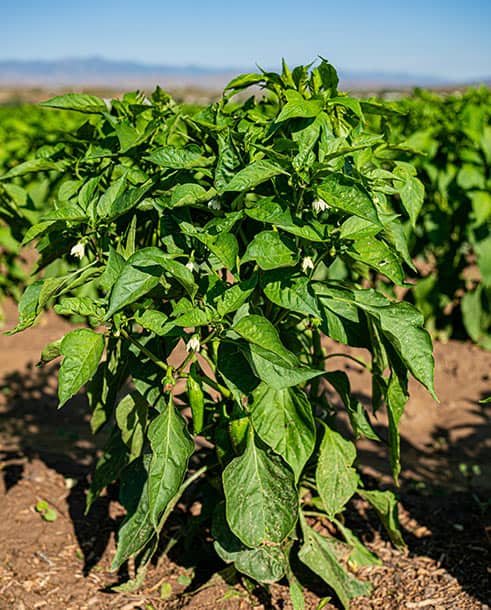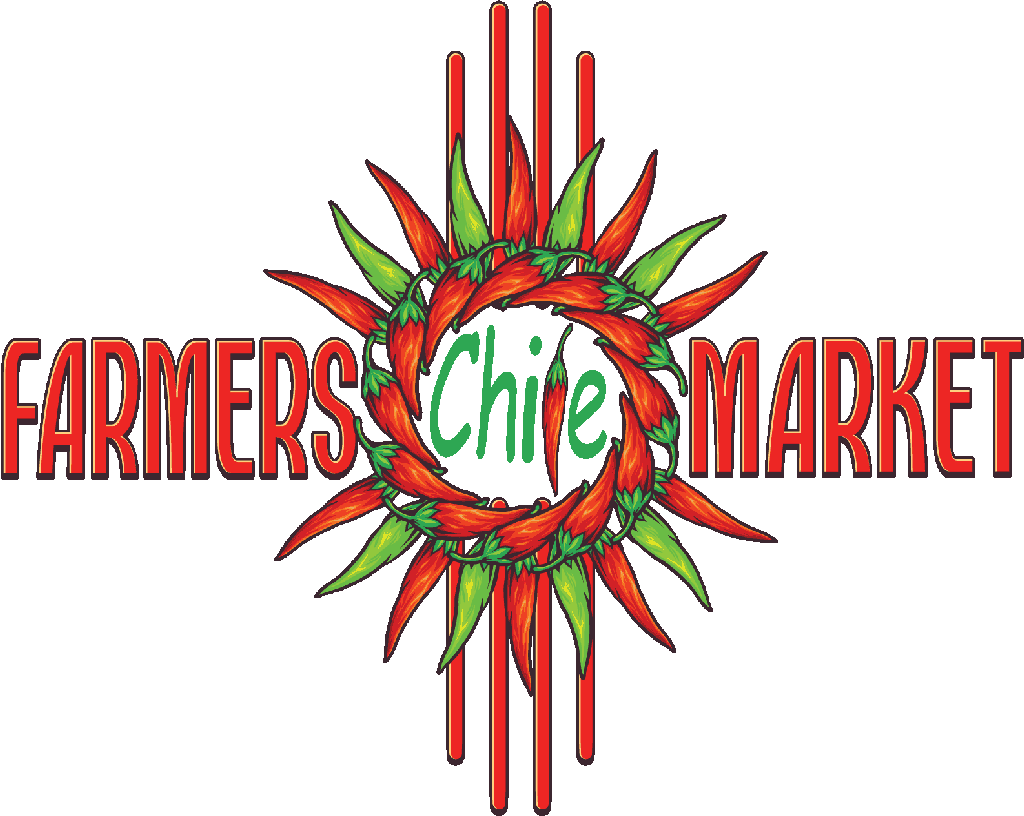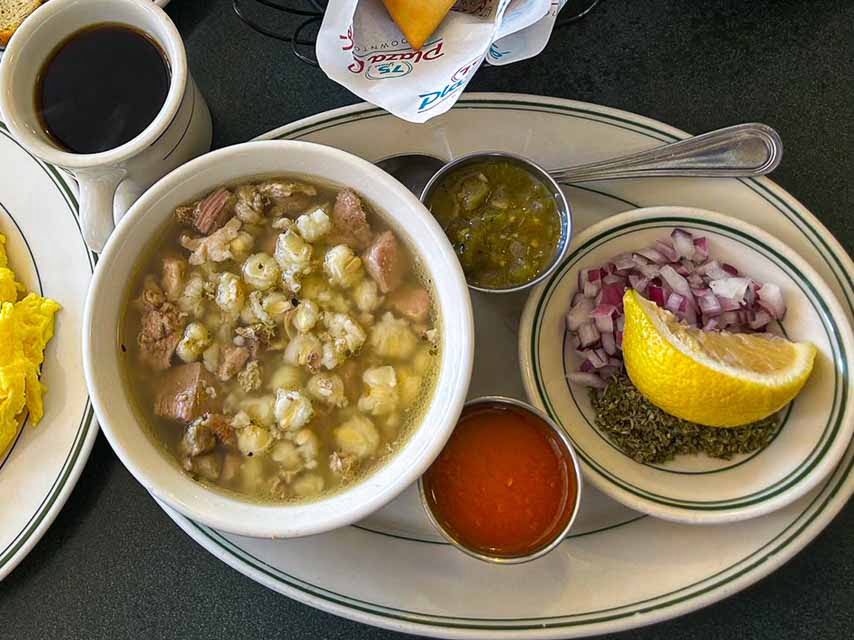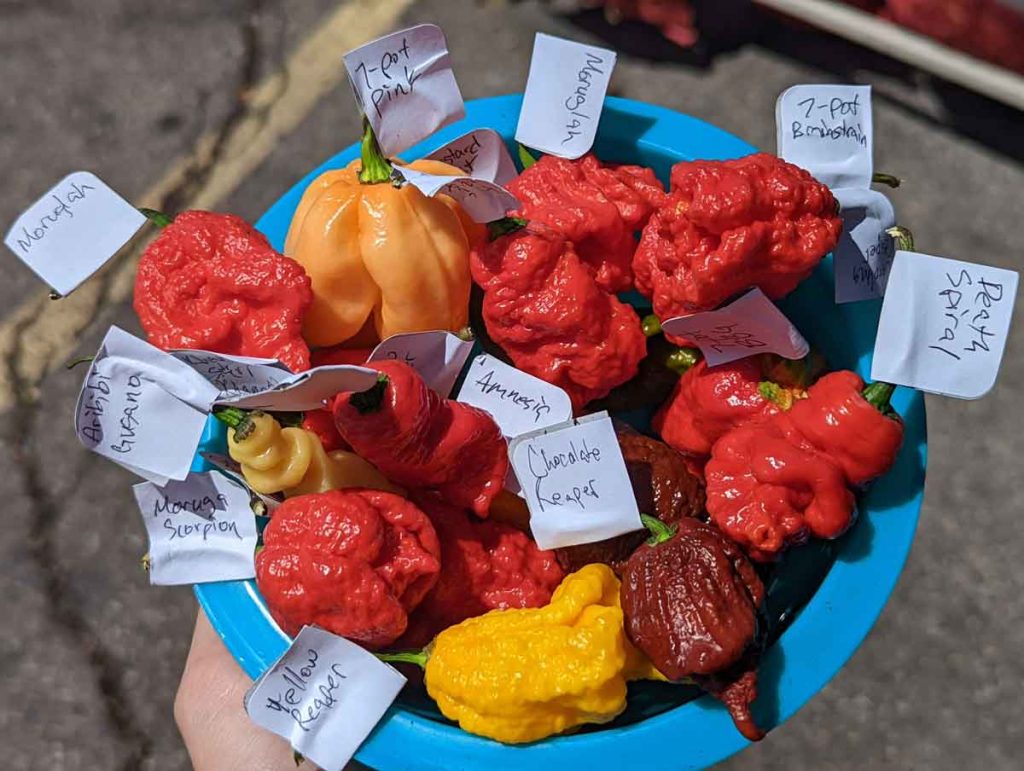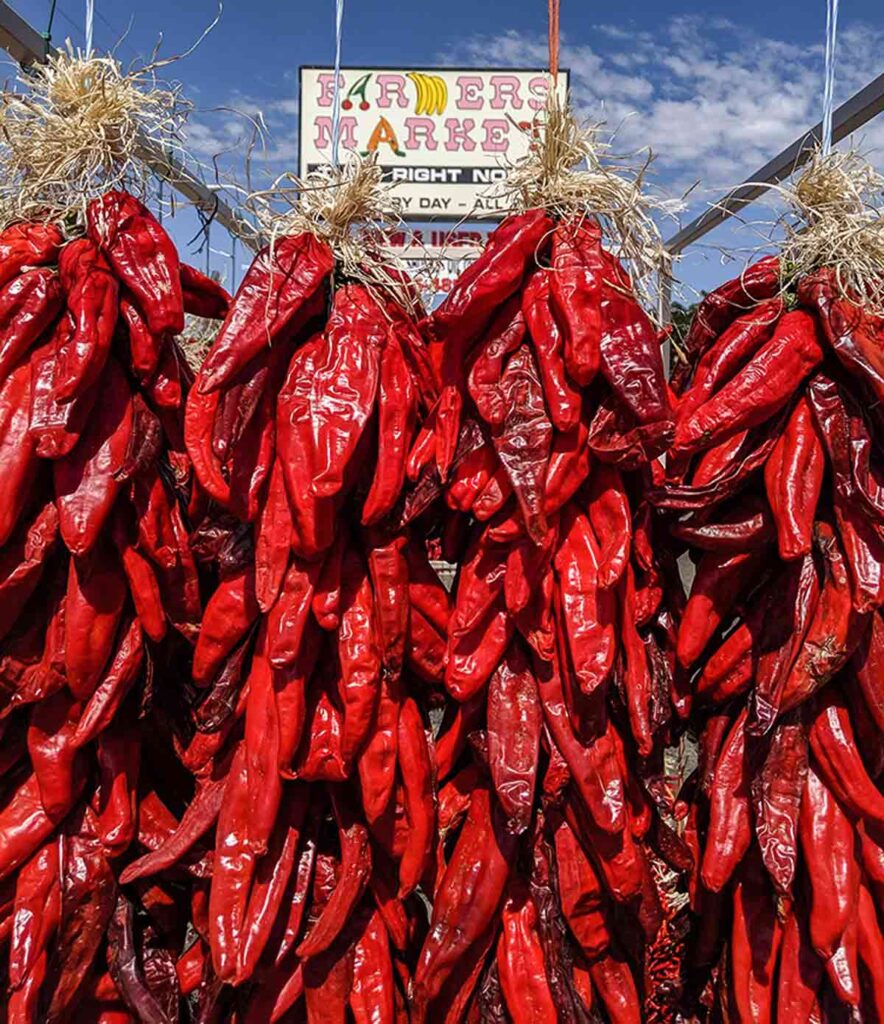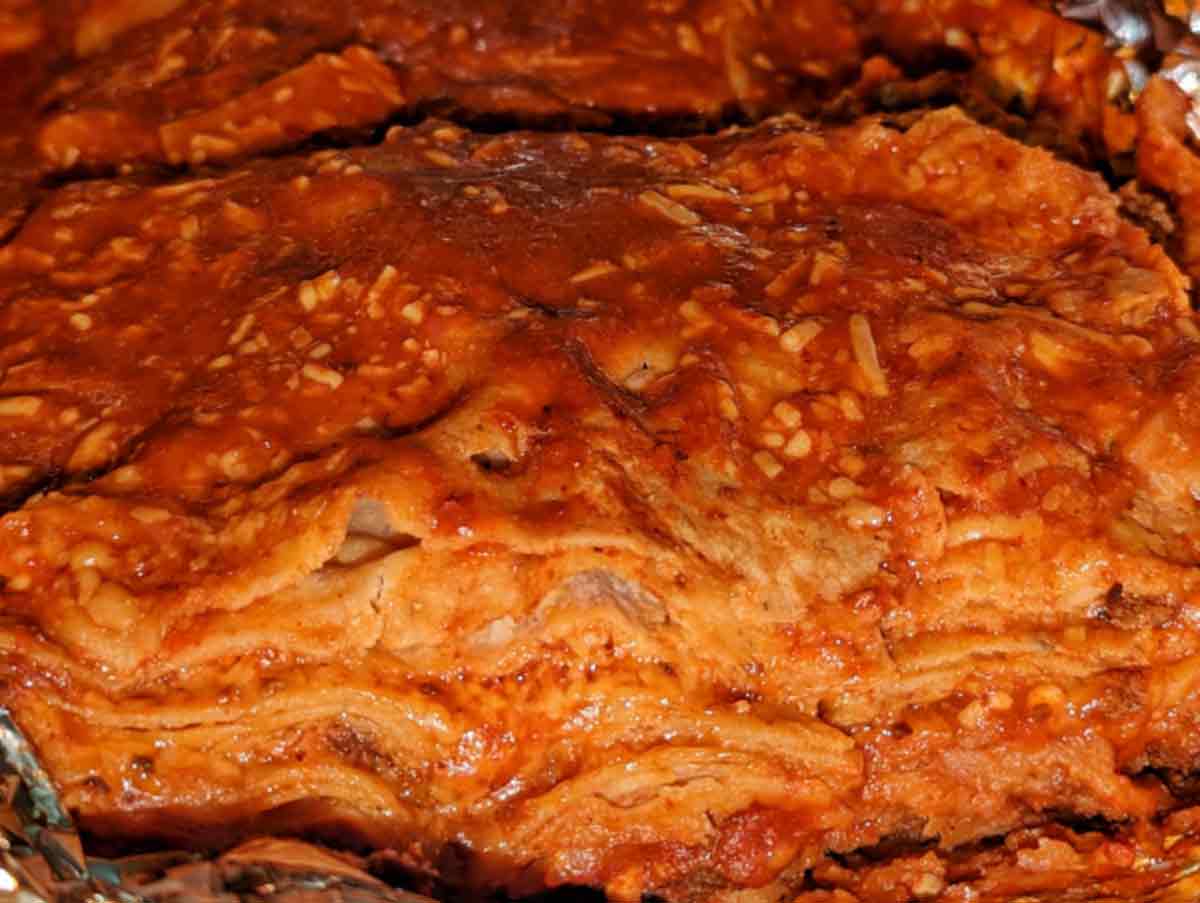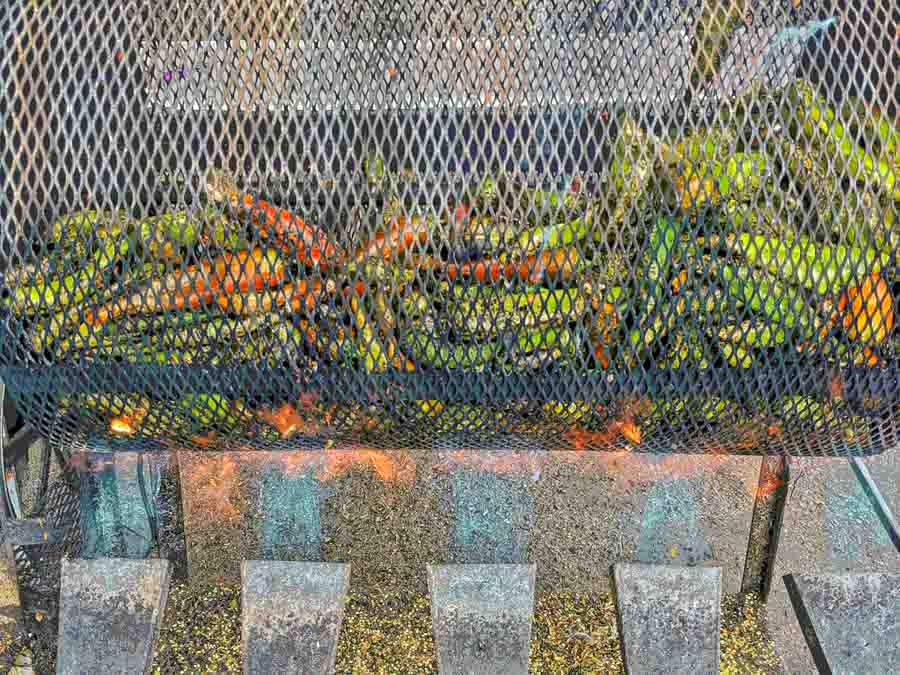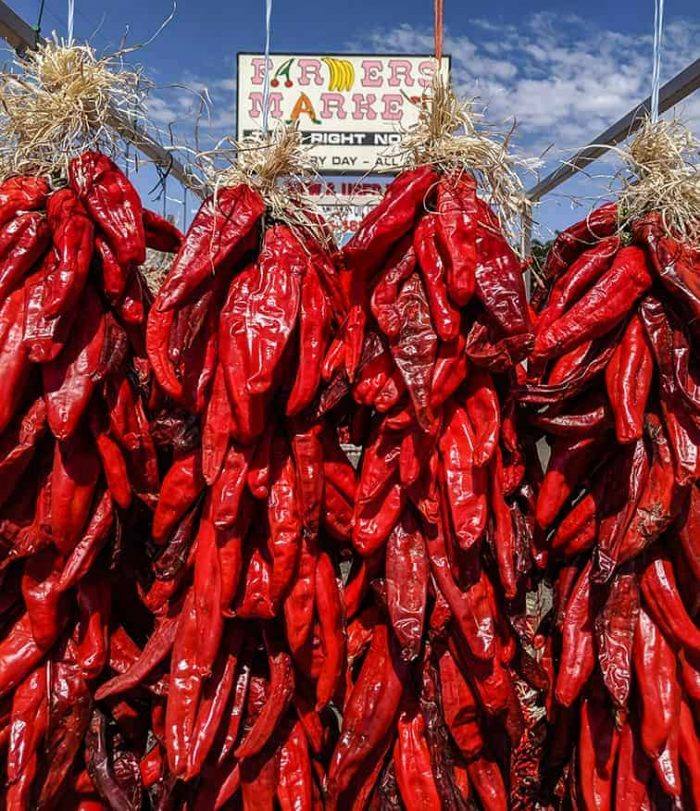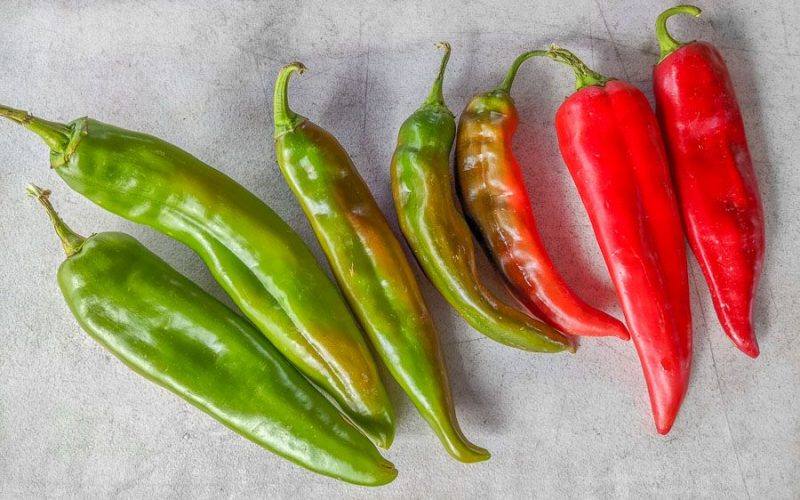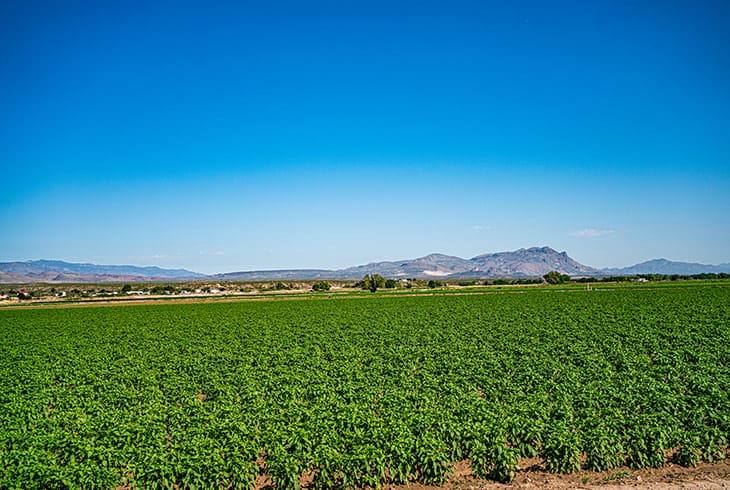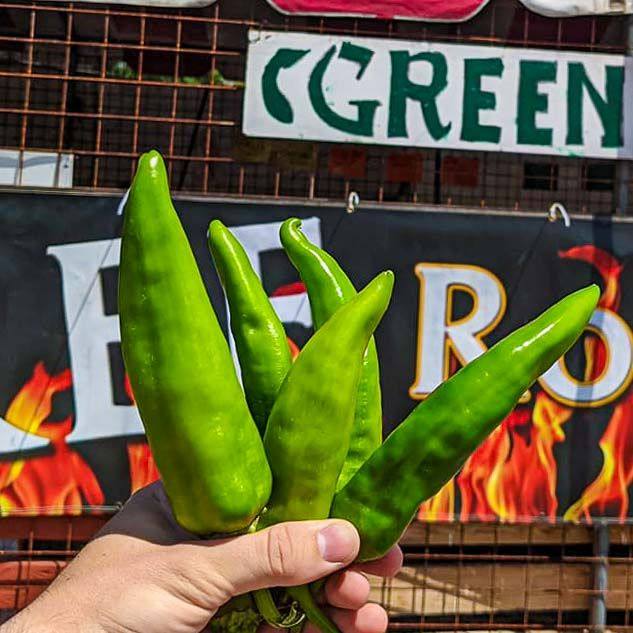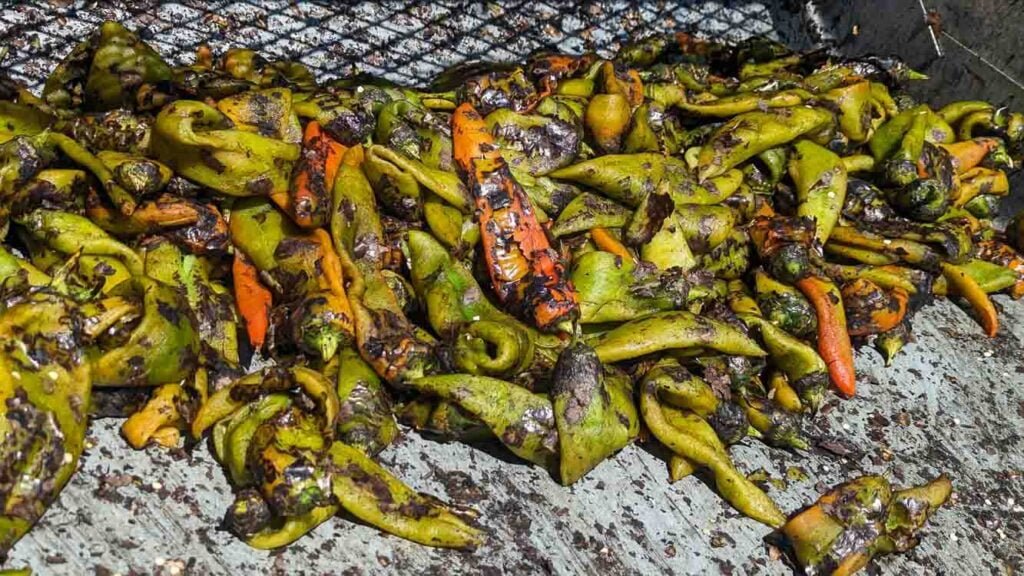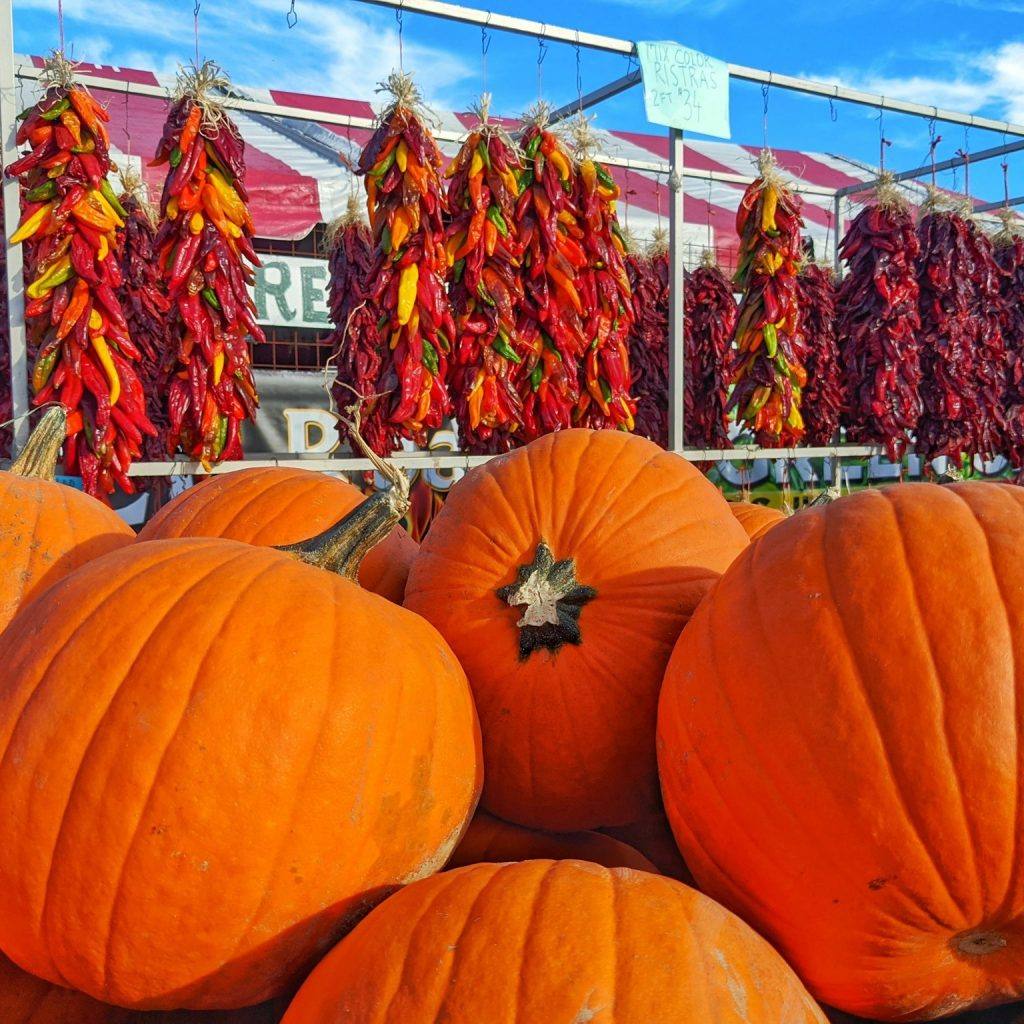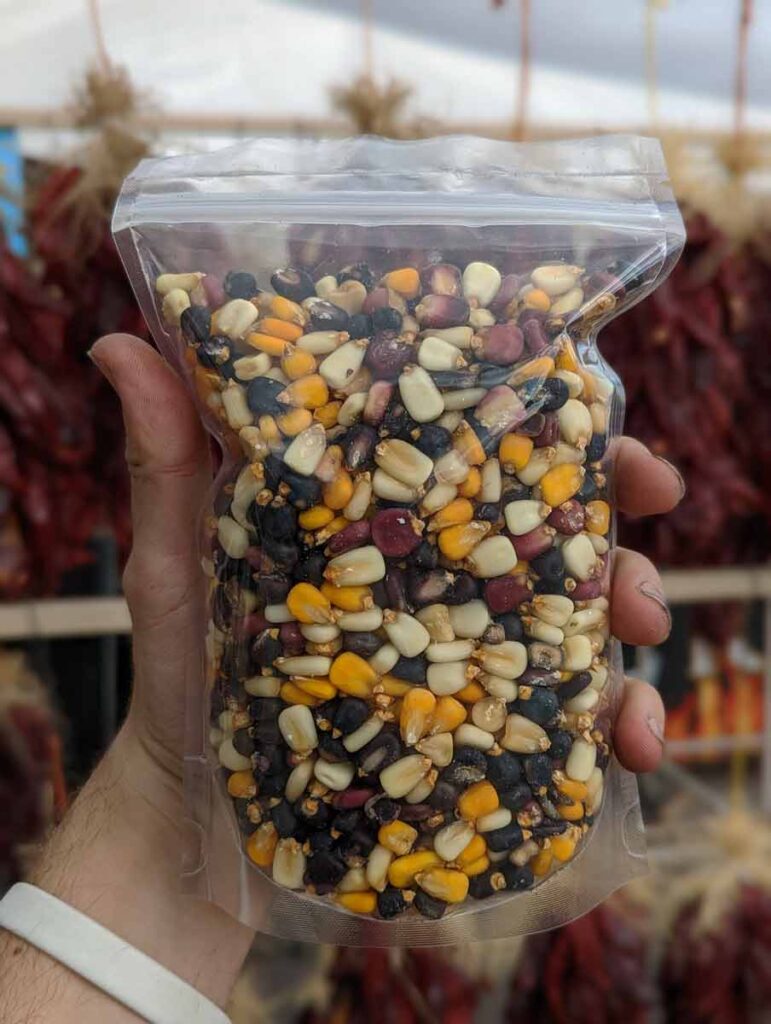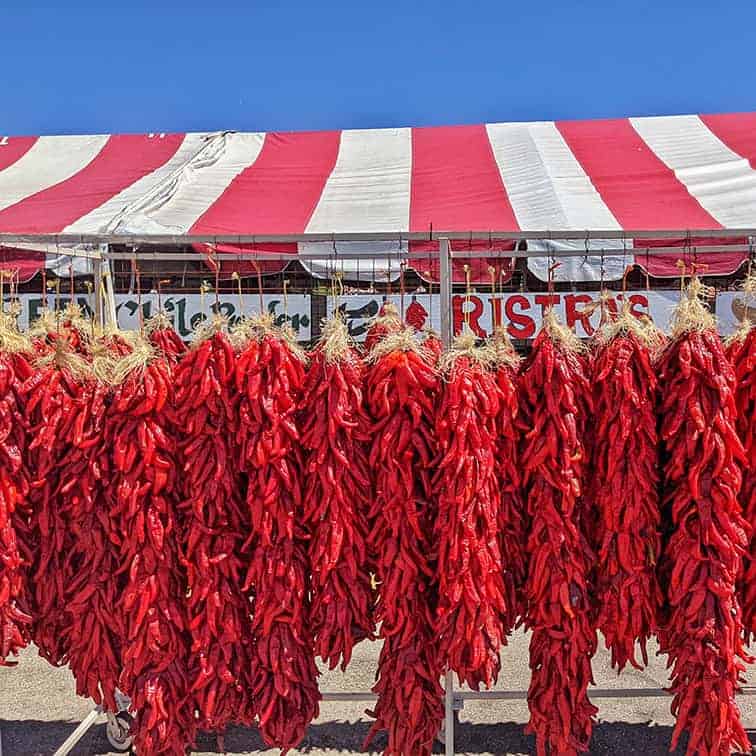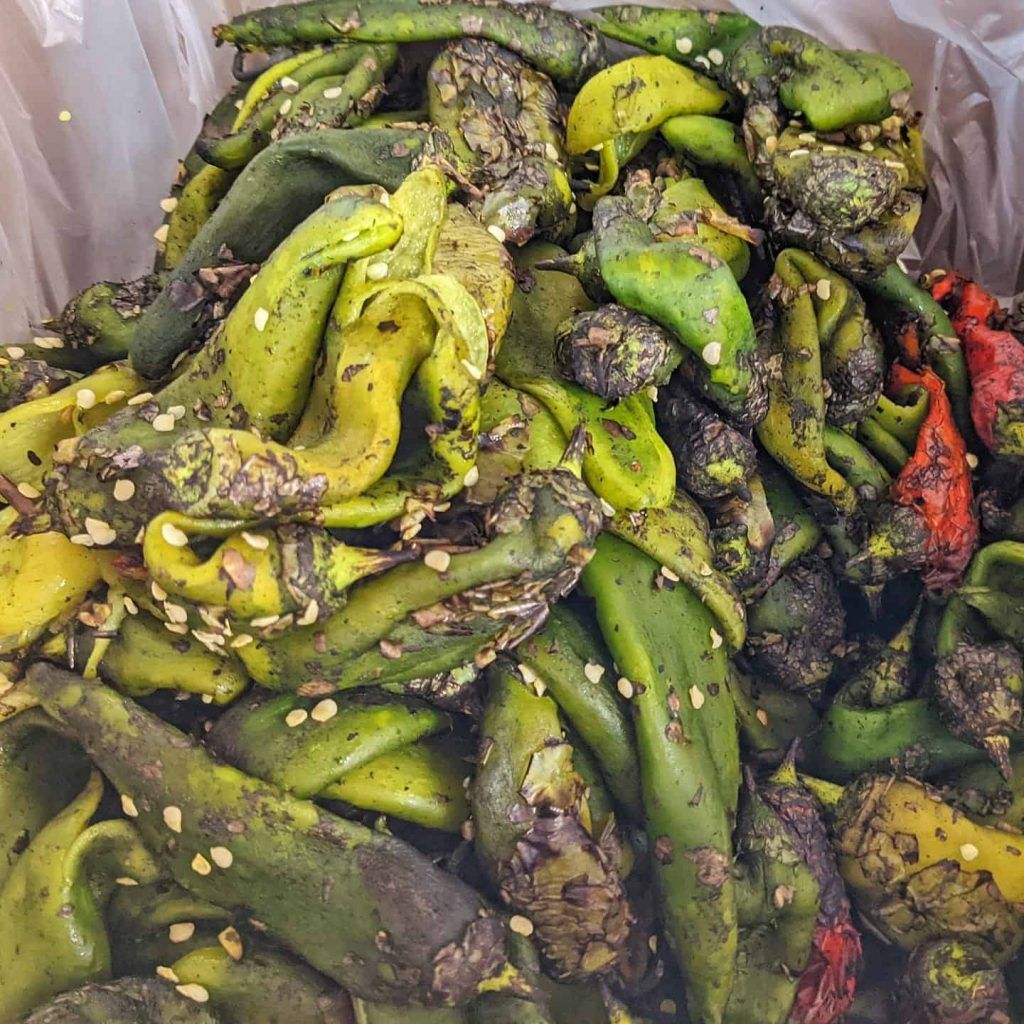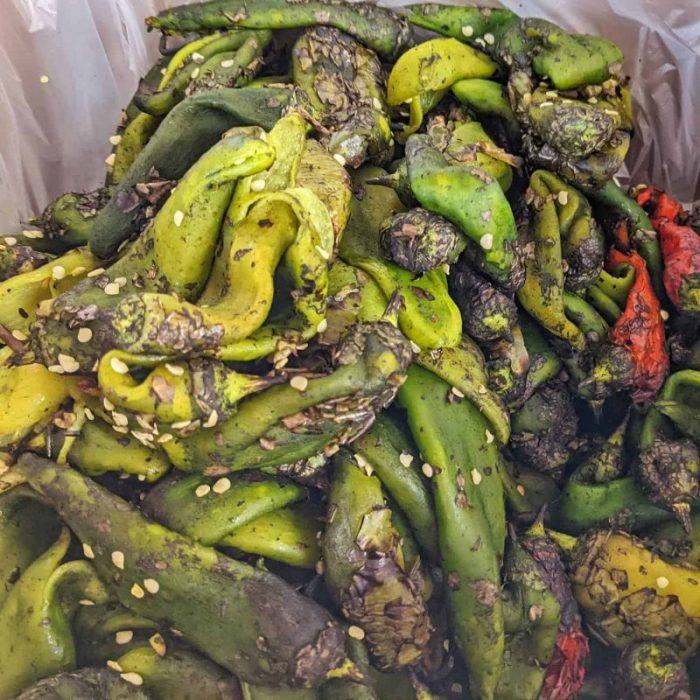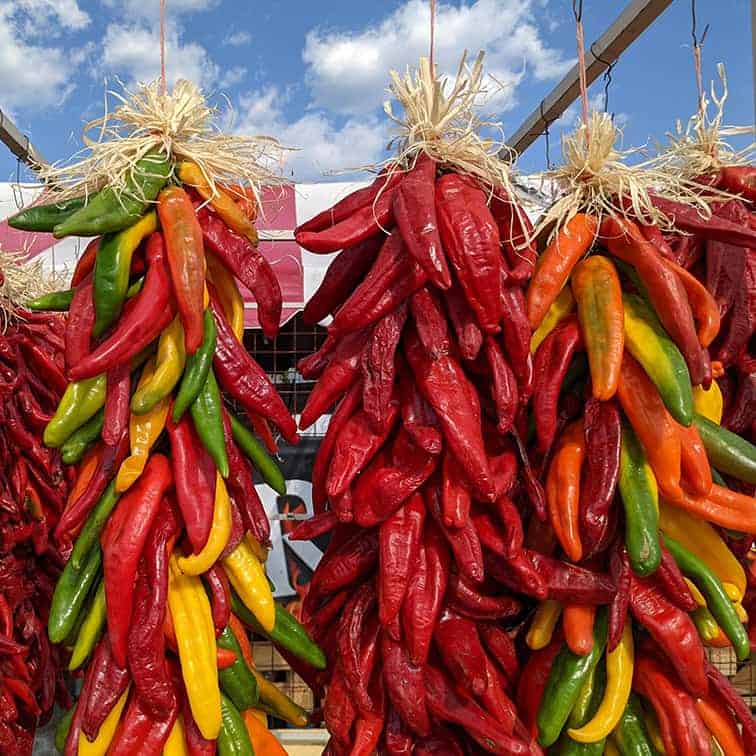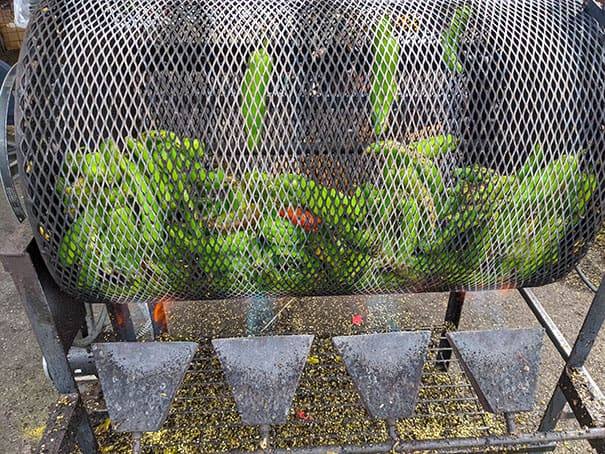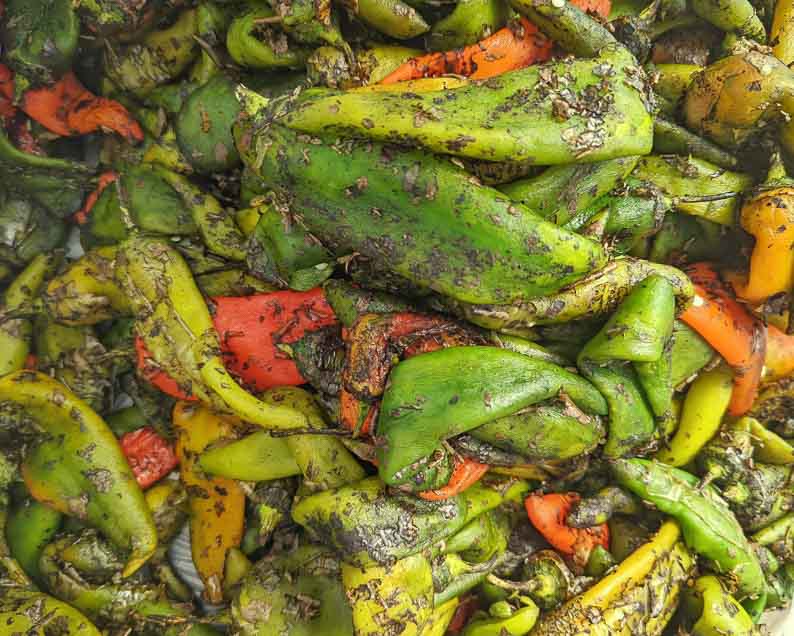Your cart is currently empty!
Category: red chile
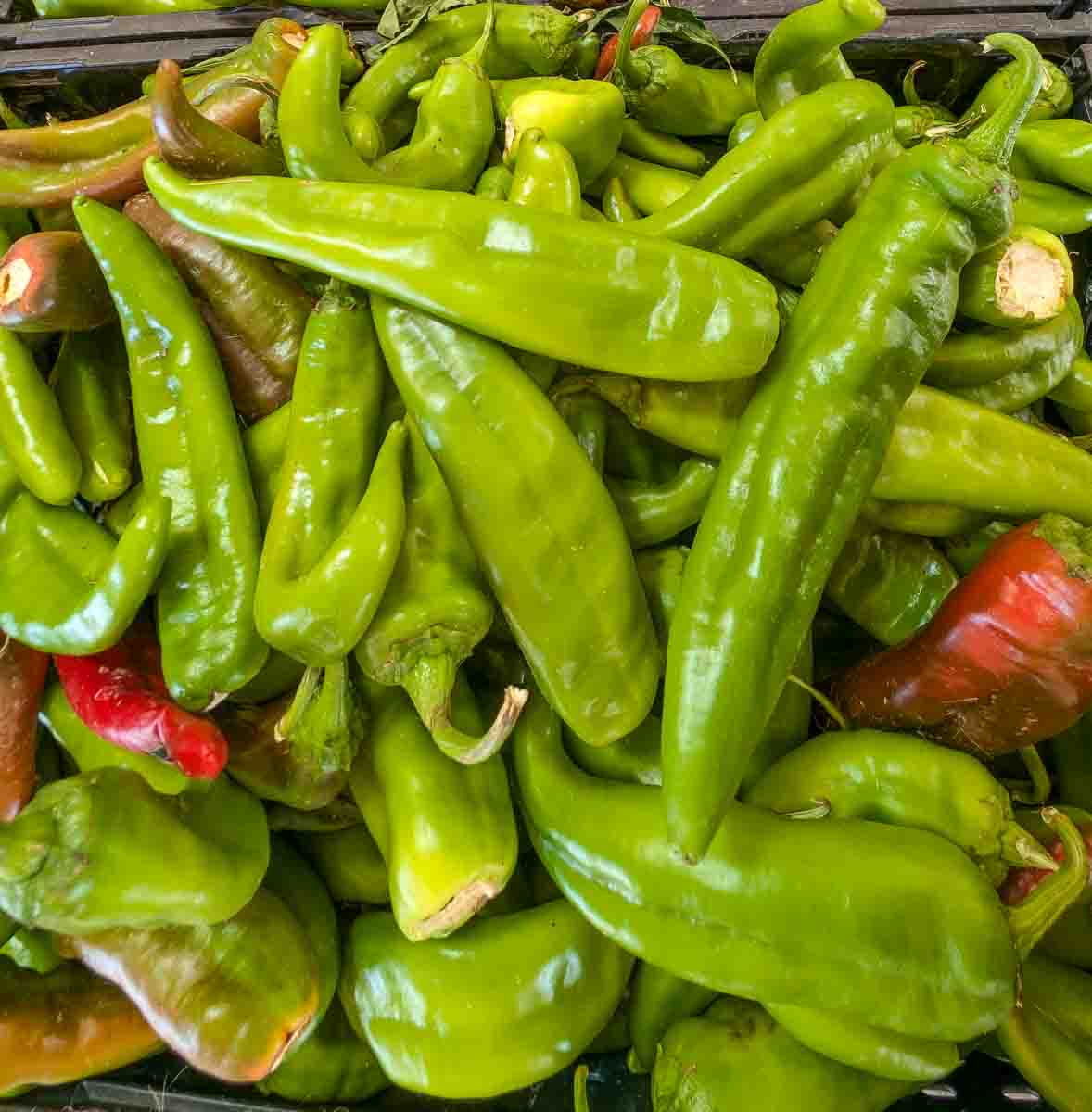
Old Vs New Mexico chiles
The chili plant is one of the most diverse fruit plants in the world, with varieties of chile coming in all shapes and sizes! Because of the vast diversity, in this post I will be talking only about varieties of chile peppers commonly used in New Mexico and Mexico. In the future I will also talk about other chili peppers I find throughout my travels around the world looking for flavors!
New Mexico Chile
Although it is commonly referred to as Hatch chile, the official name for the green and red chile which Hatch is famous for is New Mexico chile. New Mexico chile has many varieties ranging from Mild to XXX-hot.
Varieties of New Mexico Chile
Mild
Joe E Parker and Numex 6-4 are the two most common varieties of mild chile. Mild chile characteristics are low heat, big, and mostly straight with fat tips.
Medium
Big Jim is by far the most common medium variety in New Mexico, ans was formerly ranked as the largest chile in the world. Another medium-ish chile that is quite famous is Chimayo chile. Finally, a relatively new variety with a bit more heat than Big Jim is Charger. Charger is especially common in the early chile season, as the plants are good for transplanting outdoors after being started in greenhouses.
Hot
The most famous hot New Mexico chile is Sandia chile, which has been popular since being debuted by Roy Harper in the 1950s. Sandia is the most popular chile to tie into ristras! A newcomer into the chile scene, and one of the most popular New Mexico chile varieties nowadays is Ms Junie. Ms Junie is htter and bigger than Sandia, and it a great option for people who like more spicy chile rellenos!
Extra Hot
The classic extra hot varieity in New Mexico is Barker chile. If you go to a chile roaster throughout New Mexico, odds are they have the Barker variety of chile available. Many landrace varieties in New Mexico common in Pueblos around the state are also in the X-hot range, such as Zia chile. Rattlesnake is another X-hot variety that comes in slightly hotter than Barker.
XXX-Hot
We typically jump straight from X-hot to XXX-hot in New Mexico. Why we do it, I don’t know, and dozens of people ask me about it every year. XXX or triple X rolls off the tongue better I guess. If you hear XXX-Hot, odds are the variety is Lumbre chile. Our XXX-hot chile in New Mexico is relative to other chile varieties here. There is a huge difference in heat level between lumbre and superhots like ghost peppers!
Mexican Chile
Going from hot to mild, here are the most well known varieties of Mexican chile.
Extra Hot Mexican Chiles
All chile in this category are hotter than our XXX-hot Lumbre chile in New Mexico. We eat a lot more chile in a dish than other places, so the heat level builds up more.
Habanero
Despite a name evoking Cuba, the Habanero is the preferred choice in Mexico for crafting exceptionally spicy salsas. Its prevalence often means that ultra-hot peppers like Ghost or Carolina Reapers haven’t gained the same foothold. Typically, Habanero salsas are offered separately for adventurous diners rather than being automatically included in dishes.
Chile Tepin (Chiltepin)
Believed to be one of the ancestral chile species, these diminutive peppers deliver an explosive combination of flavor and heat. Their taste profile is rustic and smoky with earthy notes, lacking significant sweetness or fruitiness. Even a small quantity can dramatically increase a dish’s spice level.
Chile de Arbol
Offering a heat level similar to Cayenne, this pepper delivers a substantial kick. Its name, meaning “tree chile,” comes from its characteristically woody stems. These sturdy stems make it popular not only for potent hot sauces
salsa picantebut also for creating decorative chile strings orristrasin various shapes. This chili pepper is commonly called chile pequin in New Mexico.Hot Chiles
Serrano
Commonly available in the US, Serranos generally provide more heat than Jalapeños, although their spice levels can sometimes overlap. Compared to Jalapeños, they tend to be less sweet, more earthy, and contain less moisture. Adding one or two Serranos is a popular way to significantly boost the heat of salsas without an extreme jump. Due to their delicate, thin walls, they aren’t usually dried. Caution is advised when handling Serranos and hotter peppers – gloves are recommended to prevent skin irritation.
Jalapeño / Chipotle
Arguably the most recognized Mexican chile globally, the fresh Jalapeño is noted for its juiciness, pleasant fruitiness, and a touch of sweetness that develops upon ripening. Widely available, its ripened and smoke-dried alter ego, the Chipotle, is also common. Chipotle comes in variations: Chipotle Morita, the frequently seen reddish, somewhat soft version, and Chipotle Meco, favored in Mexico, which is smoked longer to achieve a browner, tobacco-like appearance and a more intense smoky character. While not overwhelmingly hot for seasoned spice enthusiasts, both Jalapeños and Chipotles provide enough heat to be satisfying and serve as excellent peppers for gradually increasing one’s heat tolerance.
Other Regional Hot Chiles
Mexico boasts numerous other hot chile varieties specific to certain areas, making them challenging to source outside their home regions, even within Mexico itself.
Mild Chiles
Poblano / Ancho / Mulato
The Poblano is the mild, fresh green chile. When ripened and dried, it becomes the Ancho, which presents very little heat but significant sweetness, often compared to raisins. If the Poblano is allowed to ripen even further before drying, it yields the Mulato chile, which is sweeter still, yet carries a bit more spiciness than the Ancho. These demonstrate how chiles, as fruits, develop sweetness as they mature.
Guajillo / Mirasol
The dried Guajillo, perhaps the most pungent among the milder chiles discussed here, is a staple in Mexican kitchens. Its fresh form, Mirasol (meaning “sun-gazing”), gets its name from its upward growth habit. As a dried chile, Guajillo is fundamental to many Mexican red sauces and is frequently blended with Pasilla and Ancho to create complex, balanced flavors for dishes like tamales or enchiladas. Its heat is generally milder than a Jalapeño but stronger than Poblanos or Chilacas.
Cascabel
This chile offers gentle heat and stands out with its unique appearance. Resembling a small tomato, it retains its round shape when dried, allowing the seeds inside to move freely, creating a rattling sound (hence “cascabel,” or “rattle”). Cascabel contributes a mild earthiness and an uncommon nutty quality that enhances the comforting essence of a dish.
Chilaca / Pasilla
The fresh Chilaca pepper is another relatively mild option common in Mexico, offering a hint of sweetness alongside more noticeable spice and earthiness compared to a Poblano. When dried, it transforms into the Pasilla pepper, a cornerstone ingredient for traditional Mexican red sauces and complex mole preparations.
Comparisons of different chile
Guajillo vs New Mexico Chile
A major difference is that guajillo chile grows up towards the sky, where New Mexico chile typically grows down. Additionally, New Mexico chile is far more diverse than guajillo. Guajillo’s spice level is in between a medium to hot chile in New Mexico. Guajillo is a little less spicy than a sandia chile, the chile most often used to make ristras in New Mexico. If you are making a sauce that calls for guajillo chile, a blend of medium and hot dried New Mexico red chile pods is a great substitution! In case you are looking for some extra heat, be sure to try X-hot Barker or XXX-hot Lumbre red chile pods!
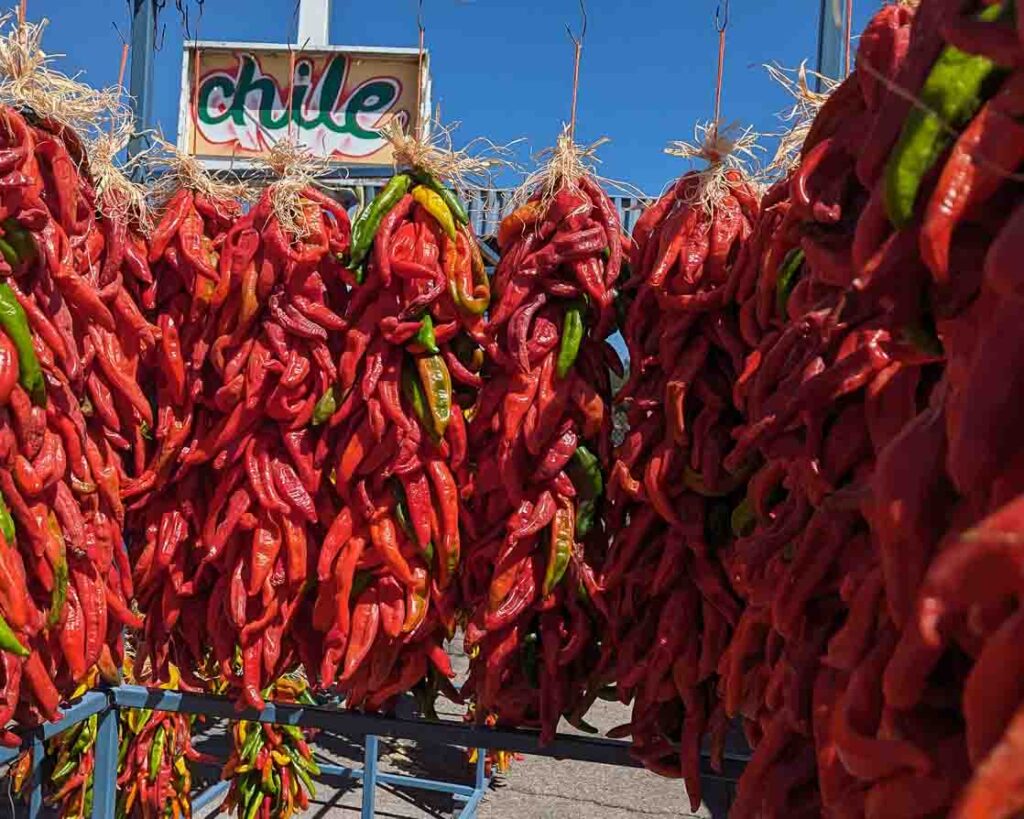
These are sandia chile ristras, which are a great substitute for guajillo Chile de Ristra vs Guajillo
Chile de Ristra is a chile that really depends on what type of ristra it is. In case it is a ristra made with chile pequin AKA chile de arbol it is quite hot, pushing 30,000 Scoville. In this case, they are not really good substitutes for each other. Chile pequin is small, with a long woody stem that is ideal for tying it into various shapes. In case the chile on the ristra is a large pepper, it is likely a Sandia chile, the traditional hot Hatch chile. This chile is a great substitute for guajillo, because it is a comparable size and just a little bit more spicy.
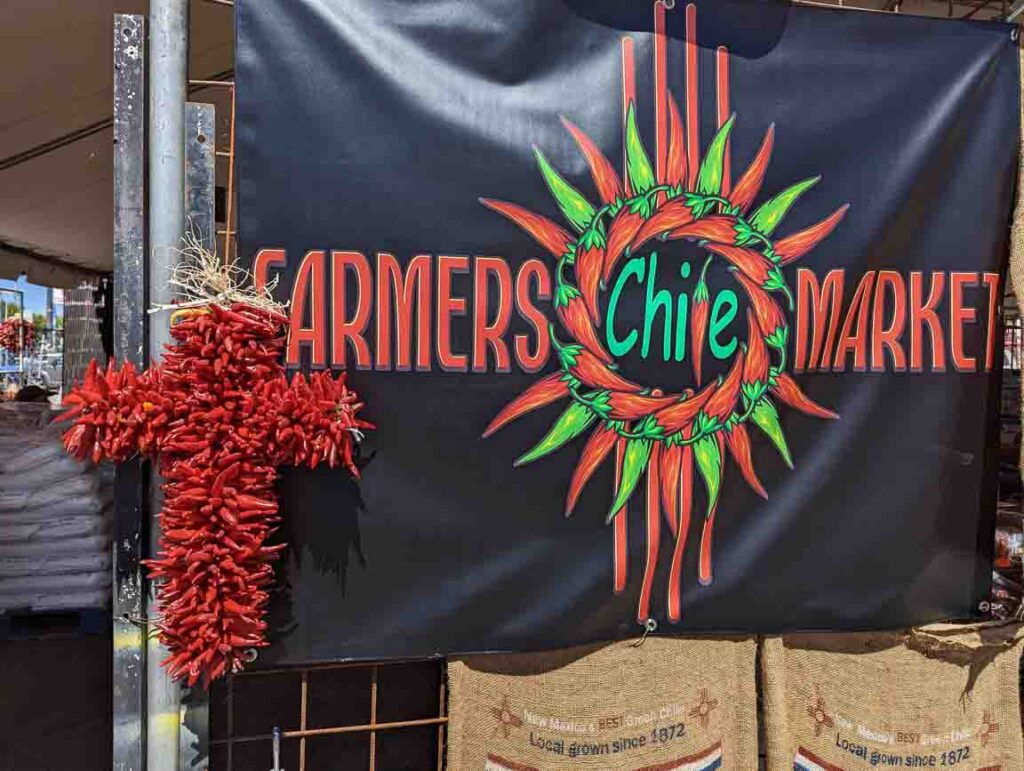
Pequin chile or chile de arbol chile is far hotter than guajillo Hatch chile vs Jalapeno
Jalapenos also have a heat variance depending on the variety, but they typically fall around the Hot scale of New Mexico chile. A Ms Junie chile is right in the range of a jalapeno in terms of heat, while also being much larger. Like Hatch chile, Jalapenos are often ripened up, and red jalapenos have a nice sweetness. They are smoke dried more often than Hatch chile as jalapenos are juicy and don’t dry so well. Jalapenos are often pickled, which is something I like to do, but is relatively uncommon.

Chile roasters like us roast jalapenos too! New Mexico chile vs Serrano
Serranos are typically spicier than jalapenos, and would rank solidly in the Extra Hot range in New Mexico. Barker chile is comparable in heat to a serrano, while being about twice as large.
Hatch Chile Vs Anaheim peppers
Anaheim chile is a variety famous around the US, but the main reason why is it is typically straight. It is chile that is grown to meet federal grading requirements in order to be sold in grocery stores around the US. As such, the flavor and heat level are less important than the size and shape. If it doesn’t meet these specifications, it can be rejected by the purchaser. Hatch chile is grown primarily for flavor, although we have some giant chile varieties here too. Another defining difference is the culture of chile in New Mexico. We have entire operations devoted to roasting and processing chile here. Anaheim chile is typically grown by huge farms that just farm and send to grocery stores. It’s a commodity product where Hatch chile is a specialty product.

Chile with curves like this won’t pass federal produce guidelines, but roasts well and tastes great! Flavor is more important than shape! 
Hatch Red Chile
The other side of the Red or Green question, Hatch red chile is a huge part of New Mexican cuisine! Although most people think of Hatch red chile as only dried red chile pods, it also encompasses fresh red chile too. Without red chile, New Mexican cuisine, particularly in the colder months would be incomplete.
Red Chile Sauce
Unlike Hatch green chile, red chile is typically not used as a topping. Instead it’s almost always made into a sauce by boiling and blending. It’s quite simple to make, as it just takes a short boil time, then a long blend time. Many people often like to incorporate cloves of garlic along with other spices. For a very detailed breakdown on how to make a red chile sauce, including using red chile powder, be sure to read our recipe for red chile sauce.

The red chile sauce is right in the middle Common Red Chile Dishes
Carne Adovada
Carne Adovada is a dish made with pork, most often pork shoulder and red chile sauce. Personally I like to make it in a slow cooker with chile pods that fall off of chile ristras. It’s a very simple recipe that just requires red chile sauce, pork, and time. I like to sear the pork with a cast iron pan before throwing it into the slow cooker, but fundamentally it just needs a slow cooker or Dutch oven, pork, and red chile sauce. Leave it on all day, and come back for a great red chile pork dinner.

The carne adovada was the centerpiece of this dish Vegetarian Option
In my experience, you can also simmer jackfruit or firm tofu in a red chile sauce and have a similar option to carne adovada. It goes quite well in a burrito with some cheese and scrambled eggs!
Tamales
Another dish which most often involves pork and red chile, tamales are a great red chile based dish in New Mexico! Tamales are a dish most commonly eaten in colder months, and most households in New Mexico have a potful of them at Christmas for anyone to come and eat when they are feeling peckish. The recipe is not too different from carne adovada, except that you need to prepare masa first, then stuff your red chile and pork mixture into masa and wrap with corn husks.
Posole
Another wintertime food that most often includes red chile and pork, a bowl of posole is perhaps the best way to warm up after a cold day. I know I’ve had plenty of bowl of posole to defrost myself after coming home from my chile stand during the cold months of the year. Hatch red chile posole is probably my favorite New Mexican winter food!
Enchiladas
Hatch red chile sauce, corn tortillas, a protein, and cheese. What can go wrong? This common menu item at restaurants throughout New Mexico is one of the best ways to enjoy red chile. It’s also a dish that is popular year round. Personally I think enchiladas are one of the best New Mexican dishes to make for an event or family gathering, as you can make a full oven tray of stacked red chile enchiladas that can feed a large group.

Enchiladas like these are a great red chile dish! Chile Ristras
We would be remiss if we didn’t mention chile ristras! Red chile ristras are one of the most common Southwestern decorations, but also serve a valuable purpose in safely drying red chile. I run a chile store, so I have plenty of red chile that falls of of chile ristras to use, but plenty of local people also cook with chile off their ristra too! They just pull them off rather than picking them up off the ground like me! A chile ristra is a great way to preserve Hatch red chile, but also a nice accent piece for an entryway, a garage, a kitchen, or wherever else you feel!

Hatch Red Chile Pods
By far the most common way that red chile is used for cooking in New Mexico comes from dried red chile pods. Coming in many different flavors, but primarily hot and extra hot, they form the base of red chile sauces in kitchens throughout the Land of Enchantment.
Hatch Red Chile Pods for sale online
We have red chile pods for sale of course, as we are a chile shop! Check them out below:
Hatch Red Chile Pods
$8.95Hatch Red Chile Powder
Red chile powder is one of my favorite spices, as it is so convenient to use. Add a sprinkle here or there to add heat and flavor to any dish you can think of!
Hatch Red Chile Powder for sale online
Of course we also carry this! We have more flavors of this available too!
Hatch Red Chile Powder
$8.99Fresh Red Chile
In recent years, more and more people have been buying fresh Hatch red chile in New Mexico. Part of the reason is that there has been a resurgence of hand tying ristras. Another reason is that roasted red chile has developed somewhat of a cult following. Roasted red chile is significantly sweeter than green chile, and has a really nice barbecue type of flavor. It’s a lot harder to roast, and many places don’t even handle it because it is easy to mess it up. We are professionals though, and know exactly how to roast Hatch red chile so it peels properly.

Hatch red chile roasting in Albuquerque How to Grow Hatch Red chile?
Hatch chile specifically is only grown in the Hatch valley of New Mexico. That being said if you want to grow New Mexico chile varieties, check out our guide to growing chile! Chili plants are quite resilient and can grow in many conditions. Just make sure your soil has good drainage, a decent pH, and include plenty of calcium in your soil. This will prevent the majority of potential growing problems. For red chile, allow it a few extra weeks to ripen up and pick it when it is bright red! In case you are looking for New Mexico chile seeds to buy, we recommend Sandia Seed Company and the Chile Pepper Institute.

Best Chili Powder for Tacos
In case you’ve landed on this page, odds are that you love some tacos! Well, in New Mexico, we love tacos too! If you can get a type of taco in Los Angeles or Mexico City, odds are you can also get an authentic version in Albuquerque or Las Cruces too! One thing that makes New Mexican tacos unique is that most people will use flame roasted green chile in them. In Mexico, spice lovers will often eat a flattop roasted jalapeno or serrano pepper alongside tacos.
Red Chile Powder in Tacos
A fundamental part of New Mexico kitchens is the bag of Hatch red chile powder that goes into most recipes to add a little spice to many different recipes. This powder typically comes in 5 different heat levels, ranging from mild all the way to XXX-Hot! Many pantries will have a couple different heat levels in order to satisfy eaters with varying tolerances to spice. Personally, I have about 20 different heat levels in my pantry, but most people don’t run a chile store like me! Red chile powder is a fundamental spice here, along with garlic and onion powder. If you get a taco made by a New Mexican cook, odds are they put red chile, onion, and garlic powder into their seasoning for whatever dish.
Using Hatch Red Chile Powder in Tacos
Get the right spice level
First, ensure that you have the right spice level for you and your family. This takes a little trial and error, as the Mild to XXX-hot scale is somewhat subjective. If you are the kind of person who eats hot sauces with demons or tombstones on it, even XXX-hot Hatch chile powder will be light for you. In that case, consider Habanero Powder. For reference, Mild powder is typically around 0-500 Scoville, similar to Paprika. Medium is around 1500-3000. Hot is around 5-6000. X-hot is around 8-10,000. XXX-hot lumbre powder is typically around 10-12,000. There are some variances in this, as every season runs slightly different, similar to wine vintages.
How to Use chile powder in Tacos
A great way to do this is include it in your marinade! Take any basic recipe for marinating meats or vegetarian options like tofu or jackfruit and throw in some chile powder. It’s really that simple! In case you prefer seasoning while cooking, I recommend a teaspoon when you turn the heat down and are mixing things around a final time before serving. This prevents the powder from burning and preserves the heat and natural flavor profile of the chile.
New Mexican Flavor
I should point out that using chile powder extensively is more of a New Mexican thing than a Old Mexican thing. Of course people in Mexico also use various chile powders, the extent of its availability is less than in New Mexico, and it also has different regional variations that aren’t found everywhere. In New Mexico, 90% of households will use chile powder in their cooking, primarily from Hatch, but sometimes also chile from Chimayo, or wherever their local chile grower is from. There are small farms supplying towns all throughout New Mexico, and often they also have chile powder from the prior season available.
More Ways to use Hatch Chile Powder
I love using Hatch chile powder in many different recipes, not just tacos! Chile powder is a great way to add spice and flavor to many different recipes! I have another post about using chile powder that goes over some of the ways I use it! There are many ways to incorporate New Mexican flavor into your food, even in international foods!
So What’s the best Chile Powder?
Maybe I’m biased, but I think it’s New Mexico chile powder. The versatility is unmatched, and it is hard to get a chile powder with the variety of heat levels as Hatch chile powder. The most common types of chili powder used are paprika powder and cayenne pepper. Paprika has pretty much no heat, and cayenne is significantly hotter than even XXX-Hot NM chile powder. This means you can use more New Mexico chile powder for flavor without ramping up the spice too much. If you like spicy flavors, just add more powder. It’s really that simple. The chile powder flavor won’t overwhelm your recipe, because it tastes nice to begin with.
chile powder for sale online
Below I have both red and green chile powder options for purchase! Thanks for making us your favorite spot to order chile powder online!
Hatch Red Chile Powder
$8.99Hatch Green Chile Powder
$9.99 – $55.00Roasted Hatch Green Chile Powder
In case you are interested in trying a relatively new type of chile powder, we also have chile pasado powder for sale! Chile pasado is roasted and dried New Mexico chile. It has a smokey spicy flavor profile, and goes great on tacos among other things. It has been my go to chile powder when I want the essence of roasted green chile without having to deal with peeling and chopping it!

What we Sell at Farmers Chile Market
At Farmers Chile Market, we have a wide variety of different New Mexican products, but much of it is different at different times. There are deeper explanations of this in our post about the chile season. We are open from the first Friday of August every year until Christmas. In 2024, we will be open from Friday August 2nd! In early August, we typically have the least amount of products available, as it is quite early in the chile season. We typically have a few varieties of fresh green chile available for roasting, and also have those varieties already roasted in the freezer for people who want a smaller amount. We also often have a decent amount of dried red chile pods for sale at this time too. Other than that, we usually have chile pasado from the last year to cover the different chile flavors that people are looking for.
Dried chile
Some of our most important products are dried chile, whether they are Hatch red chile pods, Mexican chile, chile pasado, red chie powder, green chile powder, dried superhots, dried aji charapita, or something else. The main reason why is that by drying chili peppers, they can keep a good flavor for a couple years, even without refrigeration. Sun dried red chile pods are especially important in New Mexico, as they are a core component in a red chile sauce. Although a ristra you get from us will be edible, it is a better value to buy a full sack of dried chile pods, as the amount of chile is much more. Ristras are beautiful, but they take a lot of time to make, so the price is higher.
New Mexico Red Chile Pods
We normally carry New Mexico red chile pods in medium, hot, and extra hot varieties, and also try to carry the XXX-hot Lumbre chile variety when we can get it. Usually we don’t run out of these varieties of red chile pods, but occasionally shortages happen, like what happened in 2023, when most of the state of New Mexico ran out. In case we sell out of a specific variety of red chile pods, we typically have at least two trucks per week from Hatch that we can get more from. If the chile season is normal, the new crop of Hatch red chile pods comes out around late October or early November.

These sacks of red chile pods are enough for a ton of red chile sauce! Chile Ristras
These dried strings of red chile make great southwestern accent pieces for an entryway, a doorway, a kitchen, or patio! More than just that, all the ristras we sell are edible red chile! We don’t treat ristras in order to keep them as a double use item! The red chile pods that ristras are made with are quite delicious, and whip up into a great red chile sauce!
New Mexico Red Chile Powder
We carry many different varieties of red chile powder, including mild, medium, hot, extra hot, and XXX-hot varieties. In addition to this, we also try to carry ghost pepper powder, as some people are really looking for the hottest stuff they can get. Our New Mexico chile powder is made from sun dried red chile pods grown and processed right in the sunny Hatch valley of southern New Mexico. Red chile powder has a ton of different ways to cook with it, such as using it as a simple spice or making a whole chile sauce with it! We have a page dedicated just to that, so you can get more ideas about how to use red chile powder!

This spoonful of red chile powder took this Mapo Tofu dish up a notch! Hatch Green Chile Powder
We also carry New Mexico green chile powder, ranging from mild to extra-hot as well. Green chile powder is typically machine dried, as the color of sun dried green chile isn’t really appealing. Because of the machine drying process, it tends to be a little sweeter than sun dried red chile, as the sugars in the chile haven’t had the time to ferment. That being said, it still makes a great flavor base, and can add a nice chile flavor to whatever dish you want!
Chile Pasado
We roast green chile every day during the chile season! This chile needs to be preserved, and although the most common modern way is freezing, chile pasado is in some ways the best way to preserve roasted green chile. Chile pasado is roasted, peeled, and dried green chile. As the shelf life of chile pasado is years instead of days like fresh green chile, we typically have chile pasado flavors available sooner than fresh green chile. This goes especially for the chile varieties which take longer to mature enough for roasting, like extra hot and Lumbre varieties. In case you are buying chile in the very early season and can’t wait for the really spicy stuff to come out, consider getting some chile pasado to hold you over! The flavor is amazing, and it doesn’t need to be frozen!
Mexican chile
We try to carry a decent amount of dried Mexican chile as well in order to have a wide variety of chile products! The varieties we usually stock are guajillo, ancho, chile de arbol, chipotle morita, and more. Mexico has a very wide range of different types of chili peppers available, and we try to get whatever we can. I take at least two trips to El Paso every year to pick up dried chile products from Mexico. We are at our core, a chile market. I want to sell more types of chili peppers than anyone in Albuquerque!
Superhot and Exotic chili Peppers
Although we also stock plenty of fresh superhots and exotic chili peppers, we also have a large selection of dried chili pods as well! The season for these kinds of chili peppers are shorter than the Hatch chile season, so we try to stock up a lot to dry when they are available! We typically dry a lot of Carolina Reapers, Ghost Peppers, and Aji Charapita primarily. In addition to dried pods, we try to carry at least one variety of superhot chili powder like ghost pepper powder. The superhot chili peppers are fantastic for making fiery sauces, as just one pod will turn a whole pot into something that will make you breathe fire! Aji charapita on the other hand is not terribly spicy, with a heat level not too different from chile pequin. It has a nice fruity flavor profile, and makes a really nice brightening addition to many things. Personally, I love using aji charapita in a chimichurri sauce!
Fresh Chile
Green Chile
In terms of fresh chile, we try to carry five different New Mexico green chile varieties whenever they are available. These are Mild, Medium, Hot, Extra-Hot, and XXX-Hot. We start every chile season with exclusively Hatch green chile from the Hatch Valley in southern New Mexico, but also sell chile from other popular growing regions of New Mexico as the season progresses. Regardless of where our chile comes from in New Mexico, you can be sure that we do our due diligence to find the best chile at the best price every year. In the early season, usually less varieties are available, and the late season is the same. If you come in September, we almost always have all heat levels of green chile available daily.

We roast green chile every day of the chile season! Red Chile
Around the start of September, we also carry fresh red chile out of Hatch, New Mexico. Whether you would like us to roast it for you, or if you are planning to tie a chile ristra, we should have fresh Hatch red chile available, but it frequently sells out quickly! We get fresh chile shipments 4 times a week throughout the season, so if we run out, more will be coming soon!
Superhot and Exotic chili Peppers
During the season, we also carry superhot peppers like Carolina reapers and ghost peppers in our refrigerators ready to slice up and mix with some other ingredients to make some fiery sauces! Fresh exotic peppers like Aji varieties are quite fruity, and taste better fresh than dried in my opinion. With superhots, the spice is so potent, that fresh or dried both feel quite similar. The flavor is less pronounced than other chili peppers, but the spice comes through in force!

these fresh superhots pack a punch! Other Local Produce
Although we get a small amount of products from out of state like Colorado peaches, over 95% of what we sell is locally grown in New Mexico. We get new crop pinto beans and pumpkins from Ness Farms in Estancia, watermelons and onions from several farms down in the Hatch valley, cantaloupes, honeydews, and tomatoes from San Antonio, NM in the Socorro Valley, apples from Velarde, NM, chicos from Espanola, and more. Like my dad did decades ago, I drive all around looking for different local farms to get high quality produce from New Mexican farms.

Keeping it local keeps our New Mexican community strong! What we sell online
Below is a list of all the different products we sell online. Because of various reasons, we sell less products online than in our store, but we try to have a wide variety of chile products and New Mexican goodness online too!

Hatch Chile
A New Mexican Treasure Infused with Flavor, Culture, and Geography
Red and green chile peppers are not just ingredients in New Mexican cuisine; they’re threads woven into the very fabric of the state’s culture. Their vibrant colors adorn everything from flags and license plates to local artwork and restaurant signage. More than just decoration, these chiles are the heart and soul of countless dishes, adding fiery heat, smoky depth, and a uniquely New Mexican flavor profile. The chile season makes New Mexico come alive with a roaster on what seems like every street corner. But for the most authentic experience, look no further than Hatch chile peppers, hailing from the village of Hatch, New Mexico.

Red and Green Beauty
Beyond their culinary significance, Hatch chile peppers are also celebrated visually. Ristras, long strings of dried red chiles, are a ubiquitous sight in New Mexico. These decorative bundles, often hundreds of chiles long, add a rustic charm to kitchens and patios. More than just an ornament, dried chile pods taken from ristras can be used to infuse soups and stews with a smoky chile flavor, making them a delightful and practical souvenir or gift. The red chile pods of a ristra are the essential ingredient in a good red chile sauce.
Location of Hatch
Nestled along the banks of the Rio Grande River in southern New Mexico lies the village of Hatch, the undisputed “Chile Capital of the World.” With a rich agricultural history dating back centuries, Hatch has long been a hub for farming, its fertile soil and warm climate proving ideal for a variety of crops. It is also conveniently located alongside I-25 which makes it great for not only chile truck logistics, but also for a stop on a north-south New Mexico road trip!

These chile trucks are a common sight during chile season NMSU and Hatch
The village’s proximity to New Mexico State University (NMSU) in Las Cruces plays a crucial role in its chile fame. NMSU’s Chile Pepper Institute has conducted extensive research on chile pepper cultivars for over a century, and Hatch serves as the perfect testing ground for these new varieties. Farmers in Hatch collaborate with the university, ensuring a constant stream of innovation and experimentation, ultimately leading to the unique and flavorful New Mexico chile varieties we know and love today.
Food in Hatch
For visitors seeking a taste of Hatch chile at its source, the village offers a delightful culinary experience. Renowned restaurants like Sparky’s or Pepper Pot serve up classic New Mexican dishes featuring Hatch chile as the star ingredient. From red chile enchiladas smothered in a rich, smoky sauce to green chile cheeseburgers bursting with fresh flavor, these restaurants showcase the versatility and deliciousness of Hatch chile. For perhaps the most chile dominant dish you can get, be sure to try out a chile relleno!

Sparky’s has a great burger worth trying The Hatch Chile Festival
A significant contributor to Hatch chile’s widespread popularity is the annual Hatch Chile Festival, held on Labor Day weekend. This vibrant event attracts chile enthusiasts from all corners of the globe. The festival features cooking demonstrations, salsa competitions, and vendors offering an overwhelming array of chile-infused treats. It’s a celebration of Hatch chile’s cultural and economic significance, drawing national attention and solidifying Hatch’s position as the premier source of these prized peppers.
The Terroir for Hatch Chile
The magic of Hatch chile lies not just in its unique flavor profile but also in the specific terroir, or set of environmental factors, that contribute to its growth. Hatch benefits from a unique combination of fertile soil, abundant sunshine, and warm days followed by cool nights during the growing season. The Rio Grande provides vital irrigation, while the surrounding mountains offer protection from harsh winds. These elements combine to create the perfect environment for chile peppers to thrive, imbuing Hatch chile with its characteristic sweetness, smoky depth, and fiery kick.
New Mexico’s Fiery Heart
Hatch chile peppers are more than just a culinary delight; they are a symbol of New Mexican culture, a testament to agricultural innovation, and a product of a unique and nurturing environment. From the decorative ristras to the vibrant Hatch Chile Festival, these fiery peppers leave an indelible mark on the state’s identity. So next time you encounter Hatch chile, take a moment to appreciate not just the taste but also the rich cultural tapestry and geographical magic woven into every bite.
Hatch Chile in Albuquerque
If you are looking for where to buy Hatch chile in Albuquerque, we have it for sale every day during the chile season at 2010 Eubank Blvd NE. All of our dried red chile products come out of Hatch, including chile ristras, chile pods, powders, and more.

All of our ristras are made with chile from Hatch, NM Not Just Hatch Chile
Hatch chile is a phrase commonly used to describe New Mexico chile as a whole. Because of this, we often use the term “New Mexico chile” which is the correct terminology for the chile varieties most often grown in New Mexico which bear the designator NuMex. At Farmers Chile Market, we sell a lot of green chile, and it isn’t exclusively from Hatch. It is all grown by local farmers in New Mexico. Other areas of New Mexico grow fantastic chile too, especially the towns in the Socorro Valley, such as Lemitar, Socorro, and San Antonio, New Mexico.
In case you are trying to buy chile from Hatch, all of our chile in the month of August comes exclusively from farms in the Hatch Valley. From September onward, we often source most of our fresh green chile from farms in the Socorro Valley, which is home to Lemitar, another famous name in New Mexico chile. We source from there even though it is more expensive than chile from Hatch for a reason. It is fantastic chile. Due to popular demand, we try to always carry fresh Hot green chile from Hatch, New Mexico throughout the season. If you want green chile specifically from Hatch, just ask and we should have it. Once again, our dried New Mexico chile products are always from the Hatch area.

The Hatch Chile Season
A New Mexico Tradition
Every year, as summer wanes and the days begin to shorten, a vibrant energy pulses through New Mexico. The culprit? The Hatch chile season, a cherished time when the state comes alive with the smoky aroma of roasting chiles. From bustling farmers markets to roadside stands overflowing with vibrant red and green pods, the Hatch chile reigns supreme, its fiery spirit and unique flavor captivating locals and visitors alike. It’s something it seems like everyone in New Mexico gets excited for, and for good reason. Stocking up on your sack of chile or the year is something akin to a religious pilgrimage for us New Mexicans!

Some beautiful chile fields full of peppers during the chile season What is the Hatch Chile Season?
The Hatch chile season typically refers to the time when Hatch chile is harvested in New Mexico. This is the only time to get fresh Hatch green chiles, and also is the best time to get fresh roasted chile too. During this time, chile roasters and Hatch chile markets like Farmers Chile Market pop up throughout New Mexico and surrounding states. Although one can buy frozen green chile from many grocery stores nowadays, the varieties of chile available are much less than during the Hatch chili season. In case someone is referring to the Hatch chile growing season, it typically begins when seeds are planted, usually sometime in April depending on weather conditions.
When is the Hatch Chile Season?
Traditionally, the harvest season starts in early August, and goes until the first freeze in late October. However, in recent years, some enterprising producers have begun picking select varieties of green chile in July. It’s important to note that these early arrivals are typically “transplant chile,” grown from hot house seedlings rather than directly sown seeds. This early harvest offers a tantalizing preview of the season to come, but the true magic unfolds a few weeks later. We don’t sell until August, as we feel that chile which is harvested in July doesn’t have time to fully mature. Because of this, it is too tender, and often gets destroyed in our chile roasters. Roasting chile at scale with barrel roasters is a delicate balance, and having subprime chile will result in less than optimal roasting results. At Farmers Chile Market, we will begin roasting on Friday August 2nd, 2024 this chile season!
A Season of Transformation
In early August, typically Medium chile, such as Big Jim, and Hot chile, like Sandia and Ms Junie are available first, as most farmers start and end with planting their best sellers. Along with this, dried chile products like red chile pods and powders and chile pasado are available from the previous season. These vibrant green chiles add a smoky and vegetal heat to salsas, stews, and countless other dishes. As the month progresses, the scene transforms once again. In late August and early September, all varieties of green chile and the first fresh red chile become available. From mild to xxx-hot Lumbre chile, everything is easily purchased at a chile roaster. The full spectrum of green chile heat levels are ready to be transformed into rich enchiladas sauces, a burger topping, or much more. Many New Mexicans like me have their first fresh roasted chile of the year in a more simple way with a little shredded cheese, garlic salt, and a tortilla.

This Lumbre will light you up Peak Season Delights
September marks the pinnacle of Hatch chile season. Fresh red chile becomes availalbe, and all flavors from mild to xxx-hot are also easily gotten. This is also the time to find red chile ristras, long strings of dried red chiles that add a decorative touch to kitchens and a smoky depth to soups and stews. You can get a sack of fresh red chile at Farmers Chile Market during the months of September and October to tie your own ristra if you like! In addition to the large Sandia chile ristras, we also have small ristras made with chile pequin, or chile de arbol as it is commonly called in Mexico. We also carry special shapes like red chile wreaths, hearts, and crosses! Be sure to check out the variety of ristras we have for sale online!

Peak season has many varieties and ripeness levels to choose from! A Festival in the mid-Season

Hatch, NM is a great place to visit on Labor Day Weekend Crowds flock to the Hatch Chile Festival on Labor Day weekend, a vibrant celebration of all things chile, with cook-offs, salsa competitions, and vendors offering an overwhelming array of chile-infused delights. The air thrums with the sounds of mariachi music and laughter, a testament to the deep cultural significance of this beloved tradition. This festival, along with the rich history of local farmers collaborating with NMSU researchers is a big reason why so many people call New Mexico chile Hatch chile.

You can learn how to tie a chile ristra at the Hatch Chile Festival! A Winding Down and a Look Ahead
October signifies the gradual winding down of the season. Farmers markets become a canvas of diminishing red and green, replaced by the hues of autumn vegetables. In Albuquerque, we at Farmers Chile Market at 2010 Eubank Blvd NE experiences a final surge in demand during the Albuquerque International Balloon Fiesta. Tourists and locals alike flock to stock up on the last of the season’s bounty before it disappears until next year. The Balloon Fiesta is just one of many things to do in Albuquerque.
Although we still have chile beyond that, the demand slows down a lot, and supply also closely follows it. Chile season ends when the fields get their first freeze, typically in late October. The majority of chile in New Mexico is grown in the southern half of the state. Because of this, it is often couple weeks after Albuquerque and Santa Fe cool down. We have even roasted chile in Albuquerque when snow is falling before, but this is rare. If the weather stays warm longer, often the less popular varieties like mild and xxx-hot run out sooner, as farmers don’t plant as many fields of them. Typically entire chile fields start turning red around the same time. The way farmers plan for this is by planting different fields at different times so they can have a supply of green chile even late into the season.
Autumn Roast or Chile Pintado
One very popular thing about October chile is that more red chile comes in the sacks of chile. This chile, often called Autumn Roast or chile pintado, is something asked for specifically by many of our customers in the later months. The picture of chile roasting at the top of this article is exactly what many people are looking for! The increased ripeness of the chile leads to an overall sweeter flavor profile than a typical sack of green chile, but it isn’t as sweet as a sack of fresh red chile. One thing to keep in mind when asking for autumn roast chile, is that it roasts more inconsistently than just green chile. The more developed fresh red chile has a resilient peel that takes longer to blister than green chile. Because of this, expect it to take more time to peel a sack of it.

Late season chile often looks like this! Challenges and Enduring Passion
While the exact timing and varieties available can fluctuate from year to year, the essence of Hatch chile season remains constant. It’s a time for New Mexicans to reconnect with their heritage, share traditions with loved ones, and savor the unique flavors that have become synonymous with our state. However, the future of this beloved tradition faces challenges. Decreasing acreage dedicated to chile farming and water scarcity are forcing adjustments to the planting schedule and overall availability. The 2023 dried red chile pod shortage, when just about every chile store in New Mexico ran out, serves as a stark reminder of these vulnerabilities.
Despite the uncertainties, the enduring passion for Hatch chiles persists. New Mexico State University’s Chile Pepper Institute is actively researching drought-resistant chile varieties and exploring alternative growing methods like hydroponics. Local small businesses like ours are also working together to support chile growers and ensure the long-term sustainability of the crop. Hatch and the New Mexico chile season will likely continue to evolve, adapting to changing circumstances. But one thing remains certain: the captivating aroma of roasting chile filling the air each summer will continue to ignite a sense of joy and community throughout New Mexico.
Hatch Chile season 2024
This 2024 Hatch chile season, be sure to experience the magic firsthand, you won’t be disappointed! Visiting a chile roaster is without a doubt the best thing you can do if you visit New Mexico during the chile season. Few places in the world have places to really feel the food culture like a New Mexico chile roaster. Regardless of where you are in New Mexico, you should be able to find one blasting away and creating our state’s aroma, one sack at a time. Immerse yourself in the vibrant markets, savor the smoky flavors in traditional dishes, and witness the enduring spirit of this cherished New Mexican tradition. The chile season comes at the perfect time in New Mexico, as many events are happening around the state. Because of that, be sure to make the Land of Enchantment your fall travel destination!

We can’t wait to roast chile this 2024 season and beyond! 
Hatch Red Chile Powder
Hatch red chile powder, a vibrant and flavorful product hailing from Hatch, New Mexico, has become a beloved ingredient in kitchens across the country. One of its most significant advantages lies in its sheer practicality. Unlike fresh roasted chile, which require cleaning, roasting, peeling, and sometimes seeding, Hatch red chile powder comes ready to use. The dried red chile pods are already blended up and ready to use! This saves time and effort, especially for busy cooks or those new to working with chiles. Simply measure out the desired amount for a fiery kick or a subtle smoky depth. No more wrestling with stubborn skins or worrying about accidentally including too many seeds and overwhelming the dish with bitterness. Hatch red chile powder delivers consistent flavor and heat every time, making it a reliable tool for achieving culinary success.
This convenience extends to its incredible versatility. Whether you’re crafting a rich and complex red chile sauce for enchiladas or simply want to add a touch of heat and smoky flavor to a dish, Hatch red chile powder shines. Consider a Hatch red chile powder in the same way you might use cayenne chili powder or paprika. In New Mexico, we typically label how spicy it is, so use whatever heat level you think is good for you.
Using Red Chile Powder
For a quick and flavorful red chile sauce, simmer the powder in broth with garlic, onion, and spices. The powder readily hydrates and infuses the broth with its signature chile essence, creating a base for enchiladas, huevos rancheros, or even a comforting bowl of red chile stew. Need a simpler application? Sprinkle Hatch red chile powder into pasta sauces for a touch of heat that complements Italian flavors beautifully, or incorporate it into meat marinades for a smoky depth that elevates the flavor profile. Soups, stews, and even scrambled eggs can benefit from a pinch of Hatch red chile powder, the vibrant color adding a visual pop to the dish in addition to the flavor boost. For the adventurous cook, consider incorporating it into chocolate desserts like mole or even smoky cocktails for a surprising and delightful twist. The possibilities are truly endless, limited only by your imagination.
Making a Red Chile Sauce from powder
Although many purists will say you shouldn’t use flour, or a chile sauce should only be made fresh from red chile pods, sometimes powder is all you have to work with. In that case, give this recipe a whirl, and see how easy it is to make a quick red chile sauce with powder!
Ingredients:
- 1/2 cup red chile powder (choose your heat level based on your family’s tolerance)
- 2 tsp vegetable oil or lard for a richer flavor
- 3 to 4 tbsp onion, finely chopped (increasing the amount adds more flavor)
- 2-3 cloves garlic, peeled & finely chopped
- 1 tsp dried oregano(Some people don’t like this)
- 1 tsp ground cumin(Some people also don’t like this)
- 2 tsp all-purpose flour
- 2 1/2 cups water, broth, or stock for extra depth
- 1/2 to 1 tsp salt, or to taste
Instructions:
- Make a roux: In a 2-quart saucepan, heat the oil over medium heat. Add the chopped onion and garlic, and sauté until softened and fragrant, about 5-7 minutes.
- Bloom spices: Stir in the oregano and cumin, and cook for about 30 seconds until fragrant. (this is optional, do it if you like oregano and cumin!)
- Thicken with roux: Sprinkle in the flour and stir constantly for 2-3 minutes until the mixture forms a roux and turns a light golden brown.
- Temper the chile: In a separate bowl, whisk together the chile powder and water until smooth, making sure there are no lumps.
- Combine and simmer: Gradually whisk the chile mixture into the roux in the saucepan. Bring the sauce to a gentle simmer, stirring constantly to prevent scorching.
- Cook and thicken: Reduce heat to low, cover, and simmer for 10-15 minutes, stirring occasionally. The sauce should thicken slightly and become more flavorful as it cooks.
- Season and serve: Remove from heat and season with salt to taste. Let the sauce cool slightly to thicken further before serving.
Green Chile Powder: A Different Kind of Heat
While Hatch red chile powder reigns supreme, green chile powder exists as a lesser-known counterpart. Green chile powder is typically machine dried, a process that keeps the green chile a bright color. Due to the high speed of drying, the sugars don’t naturally ferment, and the sugar in machine dried chile remains. This sweetness makes it a good choice for those who enjoy a more nuanced heat experience. Green chile powder is also a relatively new product, gaining popularity alongside the surge in interest in Hatch chile in the US in recent years. Finding it might be slightly more challenging compared to the ubiquitous red chile powder, but its unique flavor profile is worth seeking out for those who appreciate a touch of sweetness alongside the heat.
Making a green chile sauce from powder
You can use the same guide as above to make a green sauce, just use green chile powder instead of red. I recommend adding chopped roasted green chile to this sauce to make it a more full flavor experience, but this sauce is really nice and adds a nice color to drizzle on top of food. It’s great for food photography!
A Hatch Chile Haven: The Farmers Chile Market
If you’re looking to experience the authentic taste of Hatch chiles, head over to Farmers Chile Market at 2010 Eubank Blvd, NE in Albuquerque during chile season, which runs the months of August, September, and October. This haven for chile enthusiasts offers a wide variety of Hatch chile products, including both red and green chile powder in various heat levels. From mild to xxx-hot and superhot chili powder, you’ll find the perfect powder to suit your spice preferences. Whether you’re a seasoned chile aficionado or just starting to explore the world of New Mexican cuisine, Farmers Chile Market at 2010 Eubank Blvd NE in Albuquerque is a must-visit. Beyond the selection of chile powders, you’ll also find fresh roasted chiles, salsas, ristras and other chile-infused treats, making it a one-stop shop for all things Hatch chile.

In case you like a more spicy chile relleno, try mixing x-hot chile powder with the cheese filling! A Culinary Adventure Awaits
To sum up, chile powder provides a lot of value in the kitchen. It eliminates the prep work associated with using whole chile pods, while unlocking a world of culinary possibilities. From classic New Mexican dishes to unexpected flavor twists in familiar recipes, Hatch red or green chile powder can elevate your cooking and take your taste buds on a delicious adventure with every bite. So next time you’re at the grocery store, don’t hesitate to reach for this vibrant ingredient and embark on a culinary journey to the heart of the Southwest. Better yet, visit a chile roaster such as Farmers Chile Market! You might just discover your new favorite way to add heat and depth to your dishes.

Minestrone is my favorite way of clearing out the refrigerator, and a spoonful of red chile powder is an awesome way to improve the flavor! The ideal Fusion Ingredient
I travel a lot, and I also cook a lot. You can learn a bit more about me and places I’ve been in the about me page I wrote. When I travel, I always am sure to bring at least a bag of hot red chile powder made with Sandia chile with me. A spoonful of this powder is the perfect amount of spice, whether I’m making a pasta sauce, a Mapo Tofu, or a butter chicken curry. Not just that, but the depth of flavor an all natural sun dried New Mexico chile powder provides is second to none. A lot of mass market chili powders use machine drying, which doesn’t give the chile a natural aging process to really refine the flavor. This is one of many reasons why I prefer using Hatch red chile powder over alternates like paprika, cayenne, or something else.
The only other chili powder I would consider might be a superhot powder like ghost or reaper powder, but only if I was trying to cook something the hottest flavor possible. I don’t really do that anymore though. I’m getting older, and don’t need to challenge myself like that anymore. For me, a classic Hot red chile powder is ideal, with extra-hot being my next go to spice. If I want a pure red chile sauce, I make it from pods. If I’m cooking something else, you bet I’m reaching for one of my bags of red chile powder.

This hot Hatch red chile powder really leveled up this pot of Mapo Tofu Where to buy Hatch chile powder online?
We sell many different heat levels of both red and green chile powder online. Check below for both of them!
Hatch Red Chile Powder
$8.9912 ounces of Hatch red chile powder grown in the sunny Hatch Valley. This powder is great for use as a spice to kick up the level of your cooking with a little heat, but also can be used to make a whole sauce! I personally use red chile powder in many recipes, like a […]
Hatch Green Chile Powder
$9.99 – $55.00Hatch green chile powder grown in the sunny Hatch Valley. This powder is great for use as a spice to kick up the level of your cooking with a little heat, but also can be used to make a whole sauce! I recommend using it in about the same way you would use a red […]
Other Types of chile powder for sale
We try to keep a wide variety of chile for sale, and you can see for yourself the different types of chile powders we have below!
-
 Roasted Hatch Chile Powder – Chile Pasado Powder$8.99
Roasted Hatch Chile Powder – Chile Pasado Powder$8.99 -
 Cayenne Pepper$3.99
Cayenne Pepper$3.99 -
 Jalapeno Powder$3.99
Jalapeno Powder$3.99 -
 Habanero Powder$4.95
Habanero Powder$4.95 -
 Chipotle Powder$3.99
Chipotle Powder$3.99 -
 Hatch Red Chile Powder$8.99
Hatch Red Chile Powder$8.99 -
 Hatch Green Chile Powder$9.99 – $55.00
Hatch Green Chile Powder$9.99 – $55.00

The Gentle Giant: All About the Big Jim Chile Pepper
Among the fiery pantheon of New Mexico chile, the Big Jim stands out as a gentle giant. While Hatch chiles are synonymous with the region, it’s the Big Jim that offers versatility and a milder heat profile, making it a favorite among those who love chile flavor without overwhelming spice. In the realm of peppers, the Big Jim embodies approachability, perfect for introducing newcomers to the world of New Mexican cuisine or adding a subtle smoky depth to everyday dishes.
A Hybrid with Heritage
The Big Jim’s story begins in 1975 at New Mexico State University. Dr. Roy Nakayama, a renowned chile breeder, worked in collaboration with Jim Lytle, a local farmer, to develop this unique breed. Their goal was to create a larger and milder variation of the iconic New Mexican chiles. The result was a hybrid, a cross between native New Mexican chiles and a Peruvian pepper, aptly named the “Big Jim” in honor of its co-creator.
What sets the Big Jim apart is its size. These peppers boast impressive lengths, often reaching over a foot long. I’m a tall guy with long arms, and some Big Jim peppers are almost as big as my forearm! Their elongated, tapered shape offers ample room for stuffing and grilling, making them an ideal choice for those iconic chile rellenos. Don’t let their size intimidate you; these chiles pack a surprisingly gentle heat. The Scoville heat unit scale, a measure of a pepper’s capsaicin content, places the Big Jim in the mild to medium range, typically between 500 and 3,000 SHU. This makes it far less fiery than a jalapeño, offering a pleasant level of warmth rather than tongue-searing spiciness.
Although Big Jim was formerly the largest chili pepper in the world according to Guinness, it no longer holds the title of longest chili, which is currently held by a Joe’s Long Cayenne pepper grown by Jürg Wiesli at 19.881 inches! It’s also not regarded as heaviest anymore either. The current heaviest chili pepper on record was a massive poblano grown by Paul Davies in the UK that weighed just a bit over a whole pound. Regardless of not being the biggest anymore, Big Jim still holds a special places in the hearts of New Mexicans and those who love our cuisine.
Beyond the Heat: A Flavor Profile to Savor
The Big Jim isn’t just about size and a gentle disposition. Like its New Mexican brethren, it brings a unique flavor profile to the table. Roasting is where the magic happens, unlocking the pepper’s smoky sweetness and intensifying its character. Imagine the aroma of Big Jims blistering over an open flame or under a hot oven broiler; their skins charring, releasing a sweet and earthy fragrance that fills the kitchen. When we roast on our barrel roasters, the full smell of New Mexico is unleashed!
When tasted, you’ll discover a slightly sweet note followed by a pleasant warmth that lingers without overpowering. This makes the Big Jim incredibly adaptable. It adds depth to salsas, sauces, soups, and stews without dominating the other flavors.

Big Jim is a really thick and meaty chile that roasts and peels really well! Culinary Versatility: The Big Jim Advantage
In the kitchen, the Big Jim shines in its versatility. Here’s where this mild giant takes center stage:
- Chile Rellenos: The true test for a Big Jim. Their generous size creates the perfect vessel for cheese fillings – Monterey Jack, cheddar, or a blend of your favorites. The milder heat complements the cheese’s richness without competing. Imagine biting into a crispy chile relleno – a molten cheese center against the smoky sweetness and mild spice of the pepper. Big Jim is a thick meaty chile, which gives a great texture contrast.
- Green Chile Sauce: A green chile sauce with Big Jim won’t burn your face off, but still give a nice bit of spice to a dish. If you want more spice, consider adding a couple hotter varieties, like Sandia, Miss Junie, or even Lumbre chile to your sauce, or use a hotter chile powder to calibrate the heat level.
- Stuffed and Grilled: Grilling enhances the Big Jim’s smoky flavor. Cored and stuffed with seasoned ground meat, rice, vegetables, or even quinoa, Big Jims become a flavorful and satisfying main course. The possibilities are endless! Although this isn’t a common recipe for many New Mexicans, I think it is a really nice way to change it up a little. Think of it like a stuffed bell pepper, but way better!
- Sauces and Salsas: Whether diced and incorporated into a chunky salsa or blended into a smooth sauce, Big Jims add a subtle chile presence and a smoky depth to your favorite recipes. Think of a rich tomato sauce simmered with roasted Big Jims, creating a base for enchiladas or huevos rancheros. Big Jim and Hatch chile in general play a great role as both a star or supporting character in a dish.
- Beyond New Mexican Cuisine: Don’t limit the Big Jim to just New Mexican flavors. Their sweeter notes and mild heat profile shine in a wide range of dishes. Incorporate them into a spicy and smoky stir-fry, grill them alongside seasonal vegetables, or toss them into pasta dishes for an unexpected twist.
Growing Your Own Big Jims

A green chile plant just fruiting The Big Jim pepper’s mild heat and large size have made it a favorite in home gardens. They’re relatively easy to grow and thrive in warm, sunny climates. Watching your Big Jims transform from tiny green pods to impressive red giants is a rewarding experience, and the flavor of fresh homegrown chiles is unmatched. In case you would like to grow Big Jim, you can follow our guide to growing chile!
From Field to Fiesta
The Big Jim chile pepper isn’t just a delicious ingredient; it’s a culinary ambassador of New Mexico. Its gentler heat and smoky sweetness invite everyone to the table, a testament to the versatility and approachability of its state’s rich chile culture. So, next time you’re craving a taste of the Southwest, remember the Big Jim. They might not set your mouth on fire, but they’ll ignite your kitchen with a world of creative possibilities and that unmistakable smoky charm of New Mexican cuisine. There are plenty of chile festivals and events all around New Mexico like the Hatch Chile Festival, and Big Jim always plays a big role. It is a great approachable heat level for many, and the size and meatiness make it a great chile worth celebrating!

Growing chile is something beautiful Big Jim Green Chile at Farmers Chile Market
For us at Farmers Chile Market, the chile season is like a 3 month long fiesta, going the months of August, September, and October. During this time, we roast up all different kinds of chile, including Big Jim. It is our Medium chile variety, and our second biggest seller. As the majority of our customers are local New Mexicans, Hot varieties are our most popular. Whatever your flavor preference, we should have it available for you every day of the chile season. This 2024 chile season, we will be roasting from August 2nd, and will almost certainly have Big Jim right away! Thanks for making us your choice to get roasted green chile in Albuquerque for 47 years and counting. We hope to be your favorite place to get green and red chile in Albuquerque

Hatch Red Chile Pork Tamales: A New Mexico Kitchen Adventure
How to make Tamales
The aroma of Hatch red chiles mingling with savory pork and warm masa is pure New Mexico magic. Making tamales takes time and effort, but the results – flavorful bundles of tradition – are well worth the reward. They’re perfect for gatherings or freezing for future feasts. Here’s your expanded guide to creating these delicious culinary treasures.
The Masa: Heart of the Tamale
- Dried Masa Harina:
- Follow the package instructions as a starting point for the water-to-masa ratio.
- For a richer, softer masa, beat in lard or vegetable shortening. Using a stand mixer or electric beaters makes this process much easier.
- Enhance the flavor by swapping some of the water for warm chicken or pork broth.
- Season generously with salt! The masa makes up a significant portion of the tamale’s flavor profile.
- Check for doneness: A small ball of masa should float in a cup of hot water.
- Frozen Prepared Masa:
- Thaw overnight in the refrigerator.
- If it feels too moist, add small amounts of masa harina or cornstarch until it reaches a manageable consistency.
- The flavor is typically pre-seasoned, but it may need an additional touch of salt.
The Red Chile Sauce: Fiery Soul of the Dish
- The Chiles: Use dried Hatch red chile pods for the most authentic, complex flavor. Lightly toasting them in a dry skillet will enhance their aroma. Rehydrate them in warm water according to our Crimson Chile Concoction recipe [include hyperlink to the previous recipe].
- The Base: Blend the rehydrated chiles with garlic, onion, cumin, Mexican oregano, salt, and pepper, ensuring a smooth, velvety consistency.
For more information, be sure to check out our recipe to make red chile sauce!
The Pork: Tender and Flavorful
- Cut: Pork shoulder or butt are ideal, cut into large chunks. Keep plenty of fat for optimal flavor and lusciousness.
- Season: Generously coat the pork with salt, pepper, cumin, and some red chile powder.
- Cook: Several methods work well!
- Braise slowly in a Dutch oven with a bit of your red chile sauce. This yields the most tender, flavorful pork.
- Use a pressure cooker (like an Instant Pot) for a faster process.
- For maximum caramelization, brown the chunks first, then simmer in the sauce until tender.
- Shred: Remove any bones and use two forks to shred the pork for a perfect tamale filling.
Assembly: Tradition in the Making
- Soak Corn Husks: Submerge dried corn husks in hot water until pliable. This can take anywhere from 30 minutes to a couple of hours.
- Spread the Masa: Aim for a thin layer (about ¼ inch) over the wider part of the husk. A masa spreader tool helps, but an offset spatula works as well.
- Fill and Fold:
- Add a generous spoonful of filling and a bit of sauce down the center of the masa.
- Fold the sides of the husk together, then fold over the narrower end.
- Secure: Use strips of soaked husk to tie the tamales for steaming.
Steaming: The Final Step
- A dedicated tamale steamer is ideal, but a large pot with a steamer insert works well.
- Arrange tamales upright, ensuring the open ends face up.
- Steam for 1-2 hours, checking water levels periodically to prevent scorching.
- Doneness: The masa should pull away easily from the husk.
Unwrap and Enjoy!
Savor the reward for your labors – savory, satisfying bites steeped in tradition. Serve your New Mexican red chile pork tamales with extra sauce, rice, beans, and your favorite accompaniments. If you have people over, keeping a pot of tamales on the stove is a great way to show some Southwestern hospitality.
Tips:
- Make a big batch – tamales freeze beautifully! Reheat by steaming them again, or microwaving on a medium setting.
- Enlist friends or family – tamale-making is a social event, and many hands make quicker and easier work. The best part is that everyone can have a full dinner, and take home some tamales for their effort too!
- Customize: Use your favorite red chile recipe, or swap pork for shredded chicken or a vegetarian filling. You can also use green chile sauce, or a lot of different fillings. In New Mexico, our favorite tamales are red chile and pork, but there are a lot of different types of tamales!
In case you are looking for other ways to use your red and green New Mexico chile, be sure to check out our recipes section!
- Dried Masa Harina:

Red Chile Sauce: A Study in Pure Flavor
The Heart of New Mexican Cuisine
In the Land of Enchantment, red chile sauce reigns supreme. It’s more than just a condiment; it’s a cultural touchstone, a fiery symbol of our state pride. The question “Red or Green?” echoes through New Mexican kitchens, and while we adore our green chile, there’s something undeniably special about the deep, earthy flavor of a well-crafted red chile sauce. Nearly every restaurant boasts its own secret recipe, a testament to the versatility and enduring appeal of this crimson condiment. If you want to make New Mexican food, this is our mother sauce, as important as Béchamel in French cuisine.
Red Chile Sauce Recipe
Ingredients
- 12-15 dried Hatch red chile pods (choose your own heat level)
- 4 cups water or chicken/vegetable stock, warmed
- 4 cloves garlic, minced
- 1/2 small onion, coarsely chopped
- 1 teaspoon salt
- 1/4 teaspoon freshly ground black pepper
- Optional: For extra heat, sprinkle in some other more spicy chile powder or blend in a hotter chile pod
- Optional: 1 ounce unsweetened dark chocolate, finely grated
- Optional: 1 teaspoon ground cumin
- Optional: 1/2 teaspoon dried Mexican oregano
Instructions:
- Revitalize the Chiles: Snip or break off the stems and shake out the seeds from your red chile pods. Give them a rinse to clean off any dirt or residue. Toast them briefly in a dry skillet over medium heat, just until aromatic. Barely submerge the chile in hot water, and simmer covered for 15-20 minutes until fully rehydrated and softened.
- Aromatic Infusion: Sauté garlic and onion in a touch of olive oil for 1 minute. Deglaze with a splash of the chile soaking liquid to capture flavor.
- Concoct the Base: In a blender, emulsify rehydrated chiles, garlic/onion mixture, soaking liquid, cumin, oregano, salt, and pepper until velvety smooth. Blend for a long time so the sauce has an even consistency. Don’t overfill your blender, as blending hot sauces can be dangerous.
- Refine and Enhance: Taste, and adjust salt/pepper. For subtle complexity, stir in the optional dark chocolate. If too thick, thin with additional liquid. If it is thin, you can cook it longer to evaporate the water.
Note: Some people prefer to change the water before blending, and many New Mexicans don’t like using cumin and oregano. This is my way to make the sauce, feel free to copy it or change some stuff up.
For storage, pour it into glass, as red chile will stain plastic containers permanently. You can also scoop it into freezer bags and freeze it in blocks for later use.
How to Use Your Red Chile Sauce
- The Classic: Smother stacked enchiladas with this sauce, layering in your favorite cheese and filling for a quintessential New Mexican experience. Enchiladas are such a common use of a red chile sauce, that is it often called simply Enchilada Sauce!
- Carne Adovada: This is one of my favorite ways to eat red chile. It is basically stewed or braised shredded pork using red chile sauce to flavor it. This can be super messy, so don’t eat a carne adovada burrito it in the car.
- Morning Spice: Drizzle over huevos rancheros for a fiery, flavorful start to your day.
- Chili Champion: Build a hearty bowl of chili, using your sauce as the foundation for beans, meat, and vegetables. In New Mexico, our favorite “chili” is green chile and pinto beans, but our red sauce makes a fantastic base for a lot of meat and beans based dishes.
- Creative Dips: Thin the sauce with a bit more liquid for a unique, flavorful dip with tortilla chips. It can blend quite nicely with a jarred salsa or hummus too.
- Flavorful Marinades: Combine with a touch of lime juice and oil to marinate chicken or pork before grilling
- Red Chile Pork Posole: Making a hearty soup with nixtamalized corn is a great way to fill up and warm yourself up in the colder months!
- Red Chile Pork Tamales: This sauce is fundamental in making our classic New Mexican tamales. This is the perfect food for family get togethers like Christmas or Thanksgiving. Feel hungry, grab a tamale. Now you feel better.
- Bloody Mary Mix: For the drinkers, try a quick spoonful of this in your brunch Bloody Mary. It will open your eyes and wake you up, that’s for sure.
For more ideas, be sure to check out our recipes section!
Unique ideas for a New Mexican fusion
I’ve lived in 5 different countries including the US, and worked as a chef in a couple of them. During this time, I did a lot of experimentation with different flavors that can blend quite well.
Some interesting things I’ve tried to make a unique sauce:
Instead of soup stock, miso is an interesting choice for saltiness. It also makes an awesome ramen base. It reminds me of a time pre-covid when I made a red chile miso with blowtorched chashu and green onion. the flavor of smoke was amazing.
Using soy sauce or fish sauce instead of salt. These can make the sauce a bit funky, but it will pair quite well with strong flavored dishes. I wouldn’t use this for a red chile focused dish like enchiladas, but it is amazing in carne adovada!
Mix in a different type of chili sauce, such as Gochujang or Harissa to give the concoction a more full kick of chile flavor.
Mix in different peppers like chipotle, chile pasado, or pasilla. Also add in some dark chocolate or ground nuts like almonds or cashews. This can make a very New Mexican, Mexican mole sauce.
Health benefits of red chile sauce
Red chile sauce, made with antioxidant-rich chile peppers, packs a nutritional punch. Its key ingredient, capsaicin, has been linked to potential health benefits. These include improved metabolism, pain reduction thanks to its anti-inflammatory properties, and possible boosts to heart health. While enjoying its fiery flavor, remember that moderation is key, and a balanced diet with plenty of fruits and vegetables is essential for optimal health.
Enjoy your NM red chile sauce
Now you have a sauce that is equally important in New Mexican cuisine as our green chile sauce! Although you can get red chile sauce at restaurants year round, I feel that it is a more festive option than green chile. I eat red chile a lot more around the holidays, but I have green all the time. In case you are looking for an interesting way to try red chile sauce when visiting Albuquerque, I highly recommend a visit to The Dog House their red chile chili dog is one of the best hot dogs I’ve ever had.
One of the best ways to make a red chile sauce is with chile that falls off your chile ristra. As the ristras get older, they become more brittle, and also occasionally are damaged by wind or other interaction with the physical world. Instead of throwing the chile away, save it somewhere, and use it to make a sauce. Chile ristras are delicious! Dried red chile pods are good for a few years, so eating your old ristra when you when you decide to refresh your decoration is a tasty and eco-friendly idea!

The Magic of New Mexico Red Chile Pods
Red chile pods are the fundamental part of the red part of our New Mexico state question, “Red or Green?” Sundried Hatch red chile pods are an amazingly flavorful addition to New Mexico cuisine. At Farmers Chile Market, located at 2010 Eubank Blvd NE in Albuquerque, we typically carry several varieties and sizes of red chile pods for sale during the chile season. We get new crop red chile pods as soon as they are ready in early October. This means you can be sure to get the frestest red chile possible by getting it from us. Keep us in mind when you are thinking about Hatch red chile pods for sale near you in 2024!
Why Choose Hatch Red Chile Pods
Although many people like to use red chile powder, chile pods are better for a few major reasons.
Benefits of Red Chile Pods vs Powder
First, they are exposed to less air because their surface area is much smaller than millions of granules of powder. This means that whole red chile pods will last longer and keep their flavor better than red chile powder. Red chile pods are also easy to store, particularly if you get them off of your chili ristra!
Second, the blending process is much more hands on, resulting in a higher quality dish overall. Blending results in a more even red chile sauce through aeration and emulsification. It has less of a propensity to separate than using a chile powder. Although red chile powder is great for adding a kick, it can leave a somewhat sandy residue at the bottom of your dish. No matter if you want to use red chile pods for an enchilada sauce, a base for posole, or carne adovada, they will taste great!
One final reason is that the seeds from red chile pods can often grow into fantastic chile plants, which can help bring the joy of New Mexico chile to you wherever you are. Check out our guide to growing New Mexico chile for more information about growing your own chile! Whether you prefer red or green chile, you can have both when you grow your own!
Varieties of New Mexico Chile Pods
The most common red chile pod variety is hot, with Sandia chile taking the crown. If you go into 100 New Mexican restaurants, odds are 70% of them are using a hot Sandia variety. It is the traditional hot in New Mexico for the last two or three generations. Sandia is also the most popular choice for tying ristras, so expect a hot chile if you decide to cook with your ristra!
Some people who like more heat will also get Extra-Hot, which is typically a Barker chile pepper. Barker red chile pods typically have about 25-30% more heat than Sandia pods.
For those who like super spicy chile pods, we also try to carry the XXX-hot Lumbre variety of dried red chile. This chile variety is not as common as hot or extra-hot varieties, so it often sells out quickly. If you see it available at our chile store located at 2010 Eubank Blvd NE, be sure to get it. We also sell plenty of fresh and dried superhot chilies, so pick up some of those if you really like the fire. Just one Carolina Reaper will turn an X-hot sauce into an XXXXX-hot sauce, so be careful with it.
Where Red Chile Pods Come From
We source our red chile pods out of Hatch, New Mexico. Although other areas such as Socorro, San Antonio, Lemitar, and Chimayo also grow green chile which matures into red chile pods, the farmers in these regions typically don’t produce enough to sell outside their farm stores. We frequently get fresh NM green chile shipments our of the Socorro Valley in San Antonio, NM, but our dried red chile products come out of Hatch, NM. Although we would like to sell Chimayo red chile pods and powder, we haven’t been able to find a supplier we trust. Our standards for what we sell are quite a bit higher than most chile vendors. We won’t sell chile without verifying its origin and visiting the farmers. I’ve personally visited every New Mexico farm we sell from.
Hatch Red Chile Pods For Sale Online
Hatch Red Chile Pods
$8.95These are 8 oz bags of Hatch red chile pods from the 2024 chile season! They are a fundamental part of the red answer of New Mexico’s state question: “Red or Green?” Check out our guide to making red chile sauce to learn how easy it is to make a nice red chile sauce with […]
The Farmers Chile Market Experience
Check out our page about 2024 roasted green chile in Albuquerque! We hope to be your favorite place in Albuquerque this year for both red and green chile, fresh, frozen, and dried! If you have questions, we are happy to answer, whether you are a beginner or New Mexico chile expert. We are also able to accommodate large groups including tour buses! If you are looking for red and green chile during the chile season along with a great experience suited for locals and tourists alike, you can find it at our chile stand. Red chile pods are just one small chile related thing we offer, and we hope to spread the joy of chile season to you! While here, we will give you plenty of recommendations for where else to go in Albuquerque too!

A Classic Red Chile Pork Posole Recipe to Warm Your Soul
Introduction
Red chile pork posole is a beloved dish in New Mexico, especially during the holiday season. This hearty and flavorful soup is perfect for warming up on a chilly winter day. Made with tender pork, rich red chile sauce, and hominy, it’s a dish that will leave you feeling satisfied and comforted. In this article, we’ll walk you through a classic red chile pork posole recipe that will surely become a favorite in your household.
Gathering the Ingredients
Before we dive into the recipe, let’s gather all the ingredients you’ll need:
- 2 pounds of pork shoulder, cut into bite-sized pieces
- 2 tablespoons of vegetable oil
- 1 large onion, diced
- 4 cloves of garlic, minced
- 2 tablespoons of flour
- 3 cups of chicken broth
- 2 cups of water
- 1 cup of red chile sauce (made from Hatch hot red chile pods)
- 2 cans of hominy, drained and rinsed (1 cup of dried hominy soaked overnight)
- 1 teaspoon of dried oregano
- Salt and pepper to taste
- Optional toppings: chopped cilantro, sliced radishes, lime wedges
Let’s Get Cooking
Now that we have everything we need, let’s start cooking:
- In a large pot, heat the vegetable oil over medium-high heat.
- Add the pork shoulder pieces to the pot and cook until they are browned on all sides. This will help develop the flavors in the soup.
- Add the diced onion and minced garlic, and sauté until they become fragrant and translucent.
- Sprinkle the flour over the pork and stir well to coat. This will help thicken the soup.
- Pour in the chicken broth, water, and red chile sauce. Stir everything together and bring the mixture to a simmer. Some people like to leave the red chile sauce on the side. I recommend this if you have people in your family who are sensitive to spice.
- Reduce the heat to low, cover the pot, and let the soup simmer for about 1 hour, or until the pork is tender.
- Add the drained and rinsed hominy to the pot, along with the dried oregano. Stir well and let the soup simmer for another 30 minutes to allow the flavors to meld together. If using dried hominy, start boiling it while you are cutting onions and garlic. It will take about an hour of total boil time to reach the right texture. The time it will take depends on how long you soaked it.
- Taste the soup and season with salt and pepper according to your preference.
Serving and Enjoying
Your classic red chile pork posole is now ready to be served! Ladle the soup into bowls and garnish with chopped cilantro, sliced radishes, and a squeeze of fresh lime juice. These toppings add a burst of freshness and brightness to the dish, balancing out the rich flavors of the soup.
Enjoy this New Mexican-style posole with warm tortillas or crusty bread on the side. It’s a complete meal on its own, but you can also serve it as a starter or alongside other Mexican dishes.
Conclusion
Now that you know how to make a classic red chile pork posole, you can bring a taste of New Mexico into your own kitchen. This hearty and comforting soup is perfect for any occasion, but it’s especially cherished during the holiday season. So gather your ingredients, get cooking, and enjoy a bowl of this delicious red chile pork posole with your loved ones. Remember to stock up on red chile pods when you get your roasted chile for the year at 2010 Eubank Blvd NE!
In case you are thinking about other ways to use New Mexico’s favorite food, be sure to check out our recipes section!

Hatch Green Chile Roasting Near you in 2023
If you are looking for roasted chile this year, you’ve come to the right place! Hatch chile roasting is an incredibly important part of New Mexican culture. This delicacy has spread to surrounding states and even further as New Mexico’s delicious food touches the hearts of more and more people. If you are here, you have probably asked where to get roasted Hatch chile this year. Read on to find out!
Where to get roasted green chile in Albuquerque?
We roast chile at 2010 Eubank Blvd NE Albuquerque, NM 87112. When it comes to roasted Hatch green chile in Albuquerque, the original is always worth checking out. We’ve been roasting chile since 1977, before anyone else in the city. Most other roasters were just kids or not born born yet back then. We open every day from 9-5 during the months of August, September, and October, the whole chile season. Check out our new post for 2024! In 2024, we will be roasting chile every day from Friday August 2nd, 2024! Farmers Chile Market is Albuquerque’s Original Chile Roaster, and 2024 marks our 47th chile season roasting in Albuquerque.
Every chile season, New Mexicans always consider where to get their Hatch chile roasted. Many people here prefer chile from other areas, such as Lemitar, San Antonio, or Chimayo. In the early season, we always start our green chile roasting with Hatch chile. Simply put, it is ready faster. As the plants get older however, the chile they produce becomes smaller and doesn’t roast as well. In this case, it is best to let the chile turn red and mature. The red chile pods they turn into make a delicious sauce, and is one answer to our state question, “Red or Green?”
Because the Hatch season is earlier, we change over to our farmers farther north later in the season in order to get the best quality chile available at the time. If the month is August, our green chile is almost certainly Hatch green chile. If it is around September or later, our green chile will likely be from Snake Ranch or another farm in the Socorro Valley area. There are many places here growing fantastic New Mexico chile.
Regardless of whether you are looking for Hatch chile, Lemitar chile, or somewhere else, we are confident that our chile quality is just as good, if not better. Our farmers use seeds bred primarily for flavor rather than yield per acre as a lot of “Hatch chile farms” use. If you want good quality roasted green or red chile, you can be sure to get it here. We pride ourselves on being a great chile roaster in Albuquerque.
If you are asking yourself where to get chile roasting near me in 2023, You can find your solution in the Northeast Heights at 2010 Eubank Blvd NE. We will also have plenty of red chile ristras, other chile products, and local produce available.
Hatch Chile Season 2023
Although it is still somewhat early to tell, the snow and rain we have been seeing over the winter is definitely a good sign. Although there are other factors than just water involved in growing and harvesting green and red New Mexico chile, water availability has been something which has been limiting the amount of farms able to grow. When we get a good snowpack, this means water will be less of a troubling issue. Hopefully winters like these become normal, as water concerns have become somewhat severe in recent years.
For more information on the stages of the chile season from August to October, be sure to read our post about the Hatch Chile Season.
Is there a green chile shortage?
Regardless of the bleak picture many media outlets love to paint, green and red New Mexico chile will always be available, even if the price rises due to various reasons, such as labor, water, fertilizer, or even age of farmers. Green chile production in Hatch, and most other areas of New Mexico is becoming smaller and smaller, but it will still be available. We at Farmers Chile Market are committed to finding good chile, no matter what happens in the future. You can believe that we will always support local farmers and try to keep the great chile tradition of New Mexico alive.
What Varieties of Chile we Roast
We roast many different varieties of Hatch chile, including but not limited to Numex 6-4, Big Jim, Sandia, Miss Junie, Barker, and even the xxx-hot Lumbre chile. More than just that, we often also carry red chile once it is ready too. In terms of heat levels, this means we sell and roast chile which is very mild, all the way up to xxx-hot. We have even had people special order fresh ghost peppers to roast alongside with other chile. If we roast it, you can be sure it is local New Mexican chile, though we also have a wide range of other chile peppers as well!

Just some different varieties, spice, and ripeness levels available at Farmers Chile Market Other types of chilies we sell
If you are looking for the hottest of the hot, we try to carry a wide assortment of both fresh and dried superhot chili peppers during the chile season. We typically always have plenty of Carolina Reapers, Ghost Peppers, 7 Pots, Scotch Bonnets and even Aji Charapita, the world’s most expensive chili pepper! We also carry a good assortment of chile from Mexico, such as Ancho, Chipotle, Guajillo, and more. In the future, I will prepare different recipes using these peppers. I love to cook and write, but often I become quite busy managing my chile roasting operation, and that must come first. Because of this, it may take me a year or two to come up with these recipes using various chile peppers. For now, here is a recipe overview for a New Mexican classic, stacked red chile enchiladas. Check out our Recipes Section for more ideas, as I’ve updated it a lot since this original post!

We have fresh superhots that pack a punch during the chile season Looking Forward to the 2023 NM chile season
The chile season is always different, but the same. During the months of August, September, and October, I work every day of the week, trying to not only provide the best customer service I can, but also find the best chile at the best time. The season changes drastically from the early season, where only a small amount of green chile varieties available. Two weeks later, we have plenty of extra hot and xxx hot chile, with more and more mature reddish chiles showing up in the burlap sacks. Once September comes, red chile comes right after. Once red chile is available, red chile ristras show up days later, as they are a great way for farming families to make more money. It is also a good way for older family members to make some money without having to break their backs in the fields. With red chile coming, it also means the season is approaching the finish line. The weather starts getting colder, and plants have less energy to keep making new green chile.
More and more farmers stop picking, and leave the red chile pods to dry on the plant, to be harvested once dry. These dried red chile pods are the base of one of the most important parts of New Mexican cuisine, the red chile sauce! Many of these Hatch chile pods are later further processed by some of the large chile processors in Hatch into red chile powder, which is a great spice with tons of uses!
Get chile at Farmers Chile Market
We hope to be your choice when you search for chile roasting near me 2023 this year. If you are living in Albuquerque, or just passing through for the Balloon Fiesta or something else, we would love to see you at 2010 Eubank Blvd Albuquerque, NM 87112 this chile season!

Our old sign is gone, but we still roast on! More info about New Mexico Chile
Check out our guide to roasting chile at home.
If you know anyone who will be roasting chile as a professional, our guide to roasting with a barrel roaster will be a great read for them.
Check here if you are curious about different varieties of chile.
Also, feel free to read through our blog if you want to learn other things about New Mexico Chile. I’m always trying to learn more about chile, both here and abroad, find out more about my story on the page About Me. We add new content regularly, such as our post about the Hatch Chile Festival, and will feature recipes along with other knowledge and opinions as the chile industry changes. It is a very different game than it used to be, with many new varieties available. We hope you enjoyed reading our blog, and hope to see you when you are looking for roasted green chile in 2023!

Red Chile Stacked Enchiladas
If you have ever been through New Mexico, or at least been to a New Mexican restaurant, odds are you have had enchiladas. Red chile, green chile, chicken, cheese, beans, mushrooms, vegetarian or vegan, they are delicious any way they come. Personally, I like recommending red chile over green for enchiladas, because I think the textures match, and the sauce is also easier and less work to make. In fact, if you have a chile ristra hanging, you can just pull a few chile peppers off the bottom and make it like that. Ristras are food after all.
Restaurant style enchiladas
Typically if you go to a restaurant, you will be served rolled enchiladas. Rolled enchiladas are a delicious treat, but somewhat harder to make in a home kitchen. One reason is that restaurants often have more resilient corn tortillas, which haven’t cooled down yet. When corn tortillas cool down after being made from masa, certain oils retract, and leave the outer edges prone to cracking and breakage. Unless you plan to make your own corn tortillas, which are delicious, but also labor intensive, stacked enchiladas are a great way to go.
Home-style stacked enchiladas
Think about a stacked enchilada in a similar way to a lasagna. You want the same type of deep pan. From there, layer corn tortillas and red chile sauce, along with your other ingredients. Bake at 350 degrees for about 20 minutes. If you are making a big, thick dish, cook it longer. That being said, this is an incredibly forgiving recipe. The corn tortillas will soak up the sauce, but not really get soggy. The water in the sauce also prevents it from really getting burned. If you cook it for an hour, you still won’t really destroy it. Because of that, have fun with it.
Different ingredients to use
As you can see, I have intentionally left the recipe very vague. With a red chile stacked enchilada, you will be working with a delicious New Mexico chile sauce, which works well with just about everything. If you like cheese, layer it in with the sauce when you are building your dish. The same goes with shredded chicken, pork, minced meat, or anything else. The main thing is to use meat that is in small and manageable pieces. If you use thick pieces of steak or chicken, then cutting through them will also end up destroying the structure of the enchilada. These things should be fork tender, so either use a tender pre cooked meat, or cut it into very small pieces.
Vegetarian and vegan options
If you are looking for a vegetarian way to make this dish, cheese and red chile has been a local classic for generations. You can also mix cheese with beans, mushrooms or other things. Mushrooms have a lot of water in them, so sauté them first in your favorite oil before building your enchiladas. Beans from a can typically have a good texture, but if you are cooking from dried beans, make sure they are nice and soft. Soak them, boil them, season them and give them a small mashing. It really helps bring the texture together with the corn tortillas. Nut based cheeses work pretty well in this dish, but an easy way to test is to simply mix a bit of your red chile sauce with the nut cheese. If it tastes nice, then it will be even nicer baked with some nice corn tortillas. I made a red chile hummus that was incredibly nice in this dish before. Something about sesame, cumin, and red chile really melded well together with the corn tortilla. Another nice idea is to use some chicos beans, just make sure they aren’t too wet!
Final comments
I worked a few years as a chef, but I never really blogged about it at the time. I know that my recipes aren’t terribly detailed, but I hope that you can take away some new techniques. I’ve always felt that rigid recipes mean boring food, and instead like to impart my cooking philosophy with what I write. This dish is one of the best ways to take a New Mexican classic and really make it your own. With red chile stacked enchiladas, you can take about an hour to make a meal for the whole family, and even have nice leftovers for lunch. It’s a classic soul food here, and I really hope you can share it with the people you love
Be sure to check out our recipes section for more ideas about how to use New Mexico’s favorite food!

The Future of Hatch, NM Chile
Every year, it seems that media organizations love to talk about how there is a shortage of green chile. I doubt that we will run out of delicious roasted chile any time soon. That being said, there are some problems facing green chile that will lead to price increases outpacing inflation.
Problems facing chile in New Mexico
Water
Water is perhaps the number one issue facing chile production in New Mexico. The fact is, we are a desert state that doesn’t get a lot of rain or snow. To make matters worse, much of the water that we do have is used in inefficient ways, such as golf courses and growing grain for the beef industry. In order to increase beef production, there are massive federal subsidies on cattle feed such as alfalfa. Water that goes toward feeding cows in Texas is water that does not go to chile in New Mexico. Restricting water usage on things that don’t provide human food is perhaps the easiest way to fix this problem, but the beef industry is incredibly powerful.
Labor
An open secret among the chile community is that many chile pickers are illegal immigrants. The fact is, picking chile is a grueling job requiring someone to hunch over a 2 ft chile plant in the summer sun with no shade all day. There are few ways to really improve this. It is just an incredibly difficult job with fewer and fewer people wanting to do it. Many people are attracted by the high wages, but end up washing out after only a day or two. This is perhaps the problem with the most difficult solution, as young people everywhere seem to be uninterested in farm work.
Fertilizer
The war in Ukraine has increased the prices of fertilizers by a huge amount across the world. The results of this are often lower yield per acre and increased cost of production. This problem will hopefully be solved once Russians depose Putin and leave Ukraine. Whether this happens in a year or five is anyone’s guess. A Ukrainian defeat will likely cause this problem to be much longer term, as Russia and the US have no hope for positive discourse in the near to mid future, unless Putin is blamed as the fall guy.
Some reasons for optimism
Hatch chile is becoming more popular
It seems that around August, grocery stores all around the US are carrying green chile. Although the chile that grocery stores like to deal with is bred specifically to pass federal produce grading standards and not for spice or flavor. There is a reason why most chile in New Mexico is sold in burlap sacks, while outside of New Mexico it comes in boxes. Regardless, the increased demand puts higher pressure on farmers to produce chile, regardless of problems facing its production.
New Mexicans will fight for chile
I firmly believe that once people realize that chile is in trouble, more people will come forward and fight for more water to be reserved for growing chile. The entire American southwest is facing a growing water shortage, but it should not be allowed to impact something so integral to our local culture as New Mexico chile.
My predictions for the future of NM chile
I believe that the average cost for a sack of chile will rise by about 10% a year going forward. Unless we get winters with a lot of snow, there will be supply side cuts which will raise the cost for both wholesale and retail. Although chile will get more and more expensive, there will still be plenty of chile available in New Mexico. Most likely there will be less and less retailers like ourselves selling, as it is getting harder and harder to do business. When prices go up, people blame us and other retailers like us for the increase. Although revenue is rising for us on a yearly basis, profit is decreasing. The trend of chile is to go up, simply because most of the production inputs are also getting more expensive. Rising cost of living is pushing the price up even further.

Albuquerque Chile
If you think about chile in Albuquerque, probably two names come up, Farmers Market and Fruit Basket. A large reason for that is that we both have a lot of history in Albuquerque.
When we first started roasting chile in Albuquerque in 1977, chile was already a large part of the cuisine, but roasting chile was definitely inconvenient. It would take people all day to roast and peel their sack of chile. Once people saw the convenience of our chile roasting, it became hugely popular almost immediately. Even though our Osuna store had a large parking lot, people would still park down the street and walk a long way to get the first fresh roasted green chile in Albuquerque. The first few years we were so busy that it was hard to keep up.
Chile in Albuquerque, then and now
Nowadays, things are a lot different. There are three main ways it differs, besides the obvious 45 year gap. For one, There are a lot more big businesses involved in chile. Competition is a lot more now, with tons of different new faces in the chile business here. The third difference is the varieties of chile. Read on to learn more about how chile has changed in Albuquerque.
Hatch chile = big business?
Green and red chile has become more and more about big business. Many companies sell boxed chile and processed chile products which look nice to grocery conglomerates, but generally aren’t as flavorful. That kind of chile is what happens when you use corporate techniques to apply math to farming. It certainly produces more yield and more profit, but you can’t put a number on flavor. In Albuquerque and all around New Mexico, grocery stores like Walmart and Smiths sell chile incredibly cheaply. If you want the cheapest chile you can find, I recommend you go to a large grocery store. You get what you pay for however, and every year we have hundreds of people come to us after being disappointed by the flavor of cheap chile at big stores.
New chile roasters

A nice Autumn roast When we were the only roasters in town, we had a captive audience. Nowadays, there are a lot of different chile roasters in Albuquerque like Sichler Farms, Chile Addict, and Rosales Produce. This is great for the average person in Albuquerque, because there are a lot of chile roasters in convenient areas. More than that, there are plenty of people that sell chile on the side of the road. With all places, there are pros and cons. I will say that shopping around is a good idea. A lot of places aimed at tourists charge way too much for their chile products. Farmers Market’s slogan has been “Where a fast nickel beats a slow dime” since 1963, and we operate under the same idea. We will always be one of the most affordable chile roasters who sell good chile, because we would much rather make less money and get loyal customers who come back to us every chile season. As a business running for nearly 60 years, we know that keeping customers happy and giving them good value is the key to long term success.
Varieties of chile

Many different varieties of New Mexico chile Finally, chile has a lot more varieties now. New Mexicans love chile, so any chile product you can find in Hatch can probably also be found in Albuquerque. When we started roasting in 1977, Big Jim had only been released for two years. Although Big Jim is now arguably the most famous New Mexico chile, back then no one even knew about it. Nowadays, there are many new varieties like lumbre and miss Junie that come on the market every year. More and more, growers and researchers are able to get more and more heat in bigger and bigger chiles. A pepper the size of Lumbre would never come close to being that spicy in the past. This is done through cross pollination entirely, as chile plants are not possible to genetically modify. More variety of chile means there are a lot more flavors available in Albuquerque’s favorite food.
Chile things to do in Albuquerque
Start by visiting Farmers Chile Market at 2010 Eubank Blvd NE. We are the original chile roaster in Albuquerque, and generally do a very good job with chile, satisfaction guaranteed. After that, drive south on Eubank, past I-40 and turn right on Central to see Route 66. This road will take you through Nob Hill and downtown, two interesting Albuquerque areas with plenty of local art, restaurants, bars, and things to do. Once you are done exploring downtown, Fruit Basket on 4th street is a good place to see. Their philosophy is similar to ours in terms of pricing, so you can be sure to get a good value there along with a good selection of produce. Not far from there is Big Jim Farms, a place where you can pick your own chile. I’ll warn you, picking chile is backbreaking labor, make sure to drink plenty of water.
Other things to do in Albuquerque
Although there are plenty more places to visit for chile in Albuquerque, by now you probably have more than enough chile products. Other interesting things are the zoo and botanic garden and Old Town, which are both in the same area. If you take a walk through old town, you will see lots of local stores selling expensive things to tourists. There is a nice plaza with the church San Felipe de Neri, built in 1793 after the original church’s collapse. In this area, there are tons of nice restaurants, so if you see a place that strikes your fancy, it will probably be very nice. If you are traveling with kids, I highly recommend checking out Explora. In December, the River of Lights is cool, but traffic in the area is abysmal. Finally, if you are visiting in October, the Balloon Fiesta is a must see event.
Other things to do in New Mexico
New Mexico is one of the biggest states in the US. There are a lot of places you can see, but be prepared to drive a while for it.
Things to do in Santa Fe
Only one hour from Albuquerque by way of I-25, Santa Fe is a great place to wander around for the day. If you find parking near the Cathedral of St Francis, just leave your car there and wander around. This area of Santa Fe feels somewhat similar to Albuquerque Old Town, but much larger. Many restaurants here are fantastic also, and I highly recommend eating lightly at a few different places while wandering down to the Santa Fe Railyard. This is one of the best things you can do on a date in New Mexico. If you are into art and audiovisual experiences, MeowWolf is a very interesting spot that is also great for kids. Finally, in September, Zozobra is a very unique event though crowds can be somewhat intense.
Things to do in Hatch
The Hatch Chile Festival is a great event for people who really like New Mexico chile. Sometimes people might be disappointed by the lack of variety in terms of superhots, but superhots are not terribly popular in New Mexico. We love spice, but we eat chile for the flavor and texture, not only the heat. You can’t make a meal out of a carolina reaper, but you sure can with green chile. It takes about 3 hours to drive to Hatch from Albuquerque, so consider booking a hotel in Las Cruces.
Outside of the festival, Hatch is a pretty small town. I recommend driving south from I-25 and stopping at any places that look interesting to you. You will find tons of places selling chile ristras, green and red chile, along with souvenirs for your visit. Check out Sparky’s for a green chile cheeseburger if they are open. Honestly, their prices are not cheap, and you probably will have to wait in line, but the burger is good. From there, go west on Hall street, and you can see a few markets, the Hatch Museum, Chile Fanatic, and Grajeda Farms. After you pass Grajeda farms, there isn’t too much. Hatch is a very small town that gets much bigger during the chile festival.
Things to do in Las Cruces
As we are a chile market in Albuquerque, we might have some sibling rivalry with our little brother, Las Cruces. That being said, the Las Cruces Chile Drop is arguably the most new Mexican way to spend New Years. It is held is the Plaza De Las Cruces, which also tends to have a nice Christmas market. New Mexico State University is the organization responsible for most of our delicious New Mexican chile. Be sure to pay the Chile Pepper Institute a visit to learn about all things chile. They have plenty of information about growing, lots of seeds, and plenty of sauces, books, and miscellaneous souvenirs. Mesilla Plaza is a nice spot, and the restaurant La Posta de Mesilla is a great restaurant which has been in business since 1939.
If you take Picacho Ave west, you will pass by the “World’s Largest Chile Pepper” at the Big Chile Inn. If you keep going, you will arrive at Picacho Peak Brewing, which is a cool hacienda with nice craft beer and a popular brunch.

And I thought Big Jim was a big chile Things to do in other areas

Chile farms are beautiful aren’t they? Alamogordo
If you are passing through Alamogordo, the Museum of Space History is interesting, along with Pistachio Tree Ranch, which is a great spot for snacks and pictures. Nearby there, White Sands is also a really cool spot that makes you feel like you are in a different continent. Alamogordo is about three and a half hours from Albuquerque, but it easy to visit if you are in Hatch or Las Cruces.
Truth or Consequences
Truth or Consequences is an artsy town with hot springs. It is a great spot to go and wander around the downtown area, drink a couple beers at T or C Brewing, then mosey on down for a soak in the hot springs. Nearby there, you can also check out Elephant Butte, the main water recreation area of New Mexico. It isn’t as big as other lakes in the US, but we take what we can get in the desert. Truth or Consequences is about two and a half hours from Albuquerque, and is a great place to stop and take a detour if you are driving from Albuquerque to Hatch or vice versa.
Silver City
Silver City is another town where one should wander around the downtown, and explore a lot. It was a town built by prospectors looking for silver in the 1870s. Due to the large population of Americans who arrived there around then, it has a lot of interesting American architecture from that time, giving it a somewhat unique look compared to most other cities in New Mexico. After all, New Mexico only became a state in 1912. Most of our old buildings were built by the Spanish, not the US. Tranquilbuzz Coffee is a great spot to get a cup of liquid energy, and Little Toad Creek Brewery serves up delicious beers and is a great spot for dinner too. Silver city is about four and a half hours from Albuquerque, but it is much easier to get to from Truth or Consequences or Hatch.
In all of these places, you can be sure to find plenty of green and red chile. Some areas, such as Chimayo have their own specialty chile as well.
Explore New Mexico
There are many many other great places to go in New Mexico. In fact, it is somewhat daunting to think about. I started writing expecting to write mainly about Albuquerque, but there are too many good places to visit here. Check out our travel section for more ideas. If you come, make sure to spend some time here, or you will miss a lot of great stuff.

How to choose good New Mexico chile
It’s June now, which means that chile has already been in the ground for over a month in all the major farming regions of New Mexico. We are around 2 months away from the 2024 chile season, and the time is right for a guide to how to pick out good chile.
First things first is to evaluate the retailer you are buying from. If they are a typical grocery store and their chile is cheap, it is probably a chile variety with less flavor than many varieties we and other local New Mexican chile roasters sell. Second, make sure they let you at least try the raw chile to know the flavor. Don’t expect to try Hatch chile already roasted, as it leads to food safety concerns. Spice and other flavors associated with different varieties is impossible to explain. In order to get the right product, you should be allowed to sample the product. If they don’t let you, consider a different place. At Farmers Chile Market, we always let customers try raw chile to get an idea of what the flavor of each chile variety we sell.
How to try raw chile
Tasting chile is very important if you want to get the ideal match of heat and flavor. As chile is a seasonal product, it means every season has different characteristics. Just like wine, tea, coffee and other agricultural products, chile’s flavor also varies based on the weather and other factors. More than just that, there are many different chile varieties to choose from.
Break the chile away from you or anyone else so the juices don’t fly in anyone’s face. No one wants a face full of extra hot chile juice! Try to break it around the middle, as this is where the heat from the chile is most indicative of the spice level of the chile. Raw chile has the majority of its spice centralized in the membranes near the seeds. This means the tip often has very little heat, while near the stem might be like fire. During roasting, the membranes break open, and the juices flow all around during the steaming process, which makes the spice level more uniform throughout the chile. Bite one side, and share the other side with a friend, or throw it in the roaster with your sack of chile if you like it. At Farmers Chile Market, we will gladly explain the differences in flavor and let you try whatever flavor you want. We even have free water, in case you try something a little too spicy. This is one of many little things we do to try to be the best place to get chile roasting in 2024!

Super spicy New Mexican Lumbre chiles. Be especially careful breaking these! How to see if fresh green chile is good
The easiest things to notice are wrinkling and decay. If a lot of the chile looks decayed, go to a different store, as wherever you are obviously doesn’t care enough to remove bad product. We put fresh chile out multiple times a day and always remove decay when we see it, as it can ruin nearby chile as well. Another thing to look for is wrinkling. While a little wrinkling is not too bad, excessive wrinkling can make a chile incredibly hard to roast and peel. In our raw chile section, we rotate out the chile several times, and roast it before it wrinkles too much. Not only that, but we get shipments 3 times a week, so our chile we sell is at most only 3-4 days since harvest. Good chile roasters pay very close attention to these details, and you can be assured to get a quality product. To summarize, a little wrinkling is ok, but don’t trust a place that puts out a lot of decayed chile. Ideal chile is plump and firm, with a flavor that suits you and the people you eat with. Don’t be afraid to try, as you know and understand what flavor is best for you much more than just trusting a sign that says mild, medium, hot, or extra hot.
What to do after buying Green Chile

Many different varieties of fresh New Mexico chile. Notice that there aren’t many wrinkles. Your chile needs to be roasted of course! If the place you buy from has a roaster, ask them to roast it for you. It will save a lot of time! That being said, many bigger grocery stores don’t do a great job at training their chile roasters. I have a guide to roasting chile written for both roasting as a profession chile roaster, and also for roasting at home. If the roasting area doesn’t look professional, odds are it isn’t. I hear complaints regularly from people who go to less professional chile roasting operations every year and are dissatisfied. It is sometimes better to just roast chile at home than get an inexperienced person to roast it for you.

Roasted chile should look like this when finished. Most of the peel is already gone, but it isn’t charred How to choose a good Hatch red chile ristra
To start things off, I should say that decorative things are very subjective, as everyone has different artistic tastes. That being said, there are some things I will recommend looking out for. First, make sure that the ristra is straight. If you see any obvious bends, it probably means the ristra was not properly stored, and will have a weak point, from which chile will easily break off. Second, look at how plump it is. Some ristra makers skimp out on chile, and while the length is correct, it shrinks down a lot once it is dried. A ristra should be quite full, with around 3 chiles per layer. Some ristras have a shape that curves outward a lot, and some have shapes that curl inward. What specific look you like is really up to you. As they say, “beauty is in the eyes of the beholder.” Look for breakage of chile if the ristra is not fresh. Generally you don’t see much decay on ristras. As they age, some ristras will have brown patches on some chile, this is just the color that green chile turns to when it dries. It just means that the chile originally was not completely red when it was tied to the ristra. It will still taste good, even if it isn’t the most pretty chile.
If you have more questions about ristras, our Ristra FAQ has plenty of answers for you.

October is a beautiful time here The New Mexican Chile Experience
If you are from New Mexico, you understand about what it is like to get chile roasted here. For people who are outside of New Mexico and have to rely on grocers in your area, I highly recommend making the chile season part of your reason to visit New Mexico. In October, we have the Balloon Fiesta, the worlds largest hot air balloon festival. It always occurs toward the end of chile season, but we will almost always still be roasting when it occurs, barring freak cold snaps, which do occasionally end the chile season early. One of the coolest things to do in New Mexico is visiting a chile roaster, as you can see the lifeblood of New Mexican food up close. If you come to our chile stand at 2010 Eubank Blvd NE in the northeast heights in Albuquerque, we will do our best to show you a delicious side of New Mexican culture. In case you are planning a trip to New Mexico specifically for chile, I highly recommend checking out the Hatch Chile Festival too!

What is Posole
Posole, a nixtamalized corn dish, has been a staple food in Mesoamerica for centuries, evolving into diverse and delicious regional variations across Mexico. Beyond the rich history of the dish itself, each variation carries further regional influences, local flavors, and cultural connections.
If you are in New Mexico or old Mexico, you will no doubt see posole on many menus, especially if the weather is cold. Also spelled pozole, the name doubles as an ingredient and a soup. The ingredient itself is a nixtamalized corn, similar to hominy. As we aren’t a restaurant, we focus mainly on the dried form of posole. It is a fantastic ingredient in soups, but can also be used in salads, or ground up to make corn tortillas. It is a truly versatile ingredient, which is healthy and filling.
Other corn products in NM
Corn products have long been a very important part of New Mexican cuisine, and posole or hominy is just one aspect of corn in New Mexican food. Chicos del horno is another very popular corn ingredient we use They kick up the flavor in a bowl of beans to another level! Keep in mind that chicos take much longer to cook than dried pozole, so start cooking chicos at least an hour before you add the posole kernels in!
Posole the soup
The soup has many different varieties in Mexico, with soup colors ranging from green, to red, to even black, often incorporating chicken or pork. In New Mexico, the typical soup is made with red chile and pork, often accompanied by a tortilla. This hearty soup is full of nutrition, as the process to turn corn into posole unlocks a lot of vitamins and minerals from corn that we are unable to digest normally. More than just being healthy, the soup warms one’s bones on cold winter days. If you ever travel to the balloon fiesta in the morning, be sure to try some posole and see how warm it keeps you.
Types of Pozole popular in Mexico
1. Red Posole (Pozole Rojo)
Vibrant and flavorful, red posole gets its bold color and spice from red chiles. Popular in the state of Guerrero and in New Mexico, the sauce is made with chiles like guajillo or ancho (or New Mexico’s hot Sandia or extra hot Barker chiles). This base simmers with cooked hominy, tender pork, and a blend of spices. Garnishes like fresh shredded lettuce, radishes, avocado, and lime add vibrancy to the hearty stew. Red chile pork posole is beloved in New Mexico, where it’s a common Christmas dish and a way to warm up during winter.
2. White Posole (Pozole Blanco)
A lighter take on posole, pozole blanco hails from Jalisco and Nayarit. The clear, flavorful broth features herbs like oregano and bay leaves. Hominy corn and meat (usually chicken or pork) are cooked until tender within. White posole is often served with toppings like diced onions, chopped cilantro, and lime wedges, allowing diners to customize the flavors.
3. Green Posole (Pozole Verde)
This variety is instantly recognizable by its vibrant green sauce, typically found in Guerrero and Michoacán states. The sauce is made by blending green chiles, tomatillos, cilantro, and garlic, leading to a fresh, tangy flavor. Tender meat, usually chicken or pork, and hominy corn round out this colorful variety. Garnishes like sliced radishes, avocado, and a squeeze of lime add extra brightness. Increasingly popular in New Mexico, green posole is sometimes made by blending green chile sauces with a traditional white posole base for a unique regional take.
4. Seafood Posole (Pozole de Mariscos)
Seafood lovers delight in this variation popular in coastal regions like Baja California and Sinaloa. Pozole de mariscos features a medley of fresh seafood like shrimp, fish, and clams. A combination of rich fish stock and tomato sauce creates a savory broth base, perfectly complementing the delicate seafood flavors. Garnishes like chopped cilantro, diced onions, and a squeeze of lime bring additional vibrancy.
5. Vegetarian Posole (Pozole Vegetariano)
This meatless option offers a delicious and satisfying twist on posole. Vegetarian posole is cooked in a vegetable broth seasoned with herbs and spices like cumin, paprika, and chili powder. Popular vegetables include carrots, bell peppers, zucchini, and onions. This hearty and nutritious dish might be finished with garnishes like avocado slices, chopped cilantro, and a sprinkle of queso fresco.
Posole in New Mexico
Red Chile Posole
New Mexico stands out with its ubiquitous red chile pork posole, by far the most popular regional variation within the state. For a vegetarian or vegan option, using a firm tofu, a few chunks of tempe, or a crumbly vegan meat substitute works really well in a bowl of pozole!
Green Chile Posole
Not to be outdone by its more mature rival, Red, green chile also works great in a posole. The trend towards green posole, sometimes prepared using a white base and blended with a green chile sauce, is increasing. Some regional restaurants even offer white posole with red and green sauces on the side, allowing for customization and a unique New Mexican experience. Naturally the same advice for vegetarian and vegan options works with green chile too!

A bowl of posole at the Santa Fe Plaza Cafe Health benefits of Pozole
Nixtamalization: Unlocking Nutritional Power
Nixtamalization is an ancient process of treating corn with an alkaline solution, traditionally made from wood ash or lime. This process has been fundamental to Mesoamerican cuisine for centuries. Far beyond enhancing flavor and texture, nixtamalization significantly increases the nutritional value of corn, offering several key benefits:
- Increased Bioavailability of Nutrients: Nixtamalized corn has enhanced bioavailability of essential vitamins and minerals:
- Niacin (Vitamin B3): Untreated corn is deficient in niacin. Nixtamalization releases bound niacin, making it available for absorption. This prevents pellagra, a disease caused by niacin deficiency.
- Calcium: Soaking in lime increases calcium absorption from corn, contributing to bone health.
- Other Nutrients: Nixtamalization also enhances the availability of iron, zinc, and other key nutrients.
- Improved Protein Quality: While corn protein is incomplete on its own, nixtamalization improves its balance of essential amino acids. This makes it a more valuable source of protein, especially when combined with other plant-based staples like beans.
- Reduced Mycotoxins: Corn can be susceptible to contamination by mycotoxins, harmful compounds produced by fungi. Nixtamalization partially degrades mycotoxins like fumonisins and aflatoxins, reducing potential health risks.
- Enhanced Fiber Content: Nixtamalization boosts the resistant starch content in corn. This type of starch acts as a dietary fiber, contributing to gut health, blood sugar regulation, and cholesterol management.
- Improved Digestion: The nixtamalization process softens the corn kernels and removes a portion of the outer hull. This makes nixtamalized corn easier to digest, benefiting individuals with sensitivities.
Health Implications
The nutritional improvements due to nixtamalization offer several potential health benefits:
- Stronger Bones: Increased calcium absorption contributes to bone health and may help reduce the risk of osteoporosis.
- Better Gut Health: Increased fiber intake aids digestion, promotes regularity, and fosters a healthy gut microbiome.
- Reduced Risk of Chronic Diseases: The combined benefits of improved nutrient balance, fiber content, and potential mycotoxin reduction may contribute to a lowered risk of chronic diseases like heart disease, diabetes, and certain types of cancer.
Incorporating Nixtamalized Corn into Your Diet
The most common way to enjoy the benefits of nixtamalized corn is through tortillas made from masa harina (nixtamalized corn flour). Other ways to include it in your diet are:
- Hominy AKA Posole: Whole nixtamalized corn kernels used in dishes like pozole or hearty stews.
- Tamales: Delicious bundles of nixtamalized corn dough called masa, often filled with meat or vegetables.
- Snacks: Corn chips made from nixtamalized corn can be a healthier option.
Important Considerations
While nixtamalized corn offers significant health advantages over untreated corn, it’s still important to maintain a balanced diet. Relying solely on corn, even its nixtamalized form, will not provide all essential nutrients. Pair nixtamalized corn with a variety of fruits, vegetables, beans, and other whole foods for optimal health benefits. Remember that we at Farmers Chile Market sell plenty of healthy food products, but we are not medical professionals. Be sure to consult with a qualified doctor for medical advice.
Nixtamalization is a stunning example of how traditional food preparation techniques contribute to both deliciousness and nutritional value. Whether you spell it posole, pozole, or hominy, the process to make it results in something that is great in terms of flavor, texture, and healthiness.
Posole at Farmers Chile Market
At Farmers Chile Market, we do our best to provide local options, and New Mexican posole is one of them. Whether you like yellow corn, blue corn, or even mixed color varieties, we will almost always have locally sourced posole available. We are a company that has supported local farmers and small businesses since 1962. Since our change to being a seasonal business, we have increased our proportion of local products. Chile season is also when many other fruits and vegetables are in season in New Mexico. We always aim to get produce as fresh as possible. Buying local means we get it the day after harvest.
If you are buying posole, you should also remember to pick up a chile ristra, or dried red chile pods too. They go hand in hand, and with these ingredients and posole, you can cook a large amount of New Mexican recipes. In case you are looking for a recipe for red chile to make a bowl of posole with, be sure to check out our red chile sauce guide. On that note, I have written a whole section of our website dedicated to how to cook different New Mexican dishes, be sure to check out our recipes section!

Where to get posole in Albuquerque
During the chile season, Farmers Chile Market has several varieties of posole at 2010 Eubank Blvd NE 87112 in Albuquerque. When we say posole or pozole, please note we are talking about hominy, not the dish which shares the name. We are open every year from the first weekend of August until Christmas. We have many other local products from farms around New Mexico as well. Roasting green chile is still our core business, but we aren’t just a one trick pony. Come see for yourself why we are the best source for New Mexican food products in Albuquerque. Check our webshop to see why we are a great source for New Mexican ingredients shipped to your door too!

Chile Ristras are food
Upon traveling to New Mexico, one of the first things someone will notice is chile ristras. The eye catching strings of dried or drying red chile are quite appealing to anyone who likes the southwestern aesthetic. Throughout New Mexico, the red of chile ristras, and the green from green chile are everywhere, even more than the color turquoise in Santa Fe.
Something unfortunate in my opinion, is that for many, chile ristras are seen as only a decoration. Yes, they are beautiful, but they are also wonderful for cooking with, and keep a great flavor for up to 3 years. Typical red chile ristras are made with sandia chile, which is hot, but not too hot. It is a variety which is spicy enough for someone who likes heat, but won’t cause undue pain on a spice novice. Additionally, the natural drying process that the chile goes through gives it a deep somewhat savory flavor due to the fermentation which takes place during drying.
More than just flavor, red chile sauces are incredibly easy to make. All one needs to do is take out the stem and seeds from chile on the ristra, blend it up for about 10 minutes with some garlic powder and onion powder, then boil it with a chicken or vegetable stock. Altogether, the whole process takes less than an hour, and you can make a red chile sauce which will last a year or more in the freezer. For more ideas about what to cook with your chile, check out our recipes section!
The best part about all of this, is that it is quite easy to harvest chile from the bottom of your ristra, then push the string up into the remaining chile to hide it. The ristra gets shorter as you use it, but it still stays quite beautiful. This kind of two way decoration is very good for sustainability as well as being beautiful and delicious. Ristras are a great blessing, and we are very proud to sell 100% edible ristras in Albuquerque at 2010 Eubank. As always, we aim to be the best place for roasted chile in Albuquerque!
If you are curious about ristras, you can learn more in our FAQ

New Mexico Chile Ristra FAQ
All about chile ristras
I get asked a lot of questions about chile ristras, ranging from “How long do ristras last?’ to “How to take care of a Hatch chile ristra?” This made me think that many people will probably be wondering about it online too. Because of that, I decided to make a quick FAQ with my answers and recommendations on it. If you have questions about the beautiful strings of dried New Mexico chile known as chile ristras, read on adventurer. In case you want to see a list of ristras we have for sale, click this link to jump down!
What is a ristra?In Spanish, ristra means string, but is also used to describe a string of chile peppers.
In English, pretty much the only way people use the term ristra is to talk about chile ristras, with a very small minority also using the term to talk about garlic bulb ristras!Why are ristras made?Originally, chile ristras were made only as a way to preserve chile, and keep it available as a food source in the cold winter. In modern times, food is less scarce, and most people make them as a decoration primarily. They still are a great source of food however, and we highly recommend cooking with chile from an older ristra when you get a new one!
How long do ristras last?The answer depends on many factors. An untreated ristra kept in good conditions will still look good after two years. A treated one might last 5 years or more. If it is kept in unfavorable conditions, it will break down sooner. One bad storm can destroy a ristra.
What is the best way to store a ristra?A ristra should be kept hanging, away from wind that will cause it to hit hard surfaces. The sun won’t damage sandia chiles as much as pequin, but will cause fading over time as well. If you want a ristra to last as long as possible, keep it in a cool, dry, and dark place without wind. If you want to display it outside, keep it in a partial sunlight area that is not windy.
Can chile ristras get wet?Although a small amount of water getting on a ristra probably won’t be a problem in a dry state like New Mexico, it should be avoided. Ristras which get wet can become a breeding ground for mold, which will eat the ristra from the inside out!
How spicy are ristras?The traditional New Mexican ristras are made with sandia chile, which is typically considered a “hot” chile. Pequin ristras however are much more spicy. If you want to cook with them, be very careful with the amount you use.
Are ristras edible?Every ristra that we sell at Farmers Chile Market is untreated, and therefore edible. Even if you have the chile after 2 or 3 years, it will still be delicious.
How to cook with ristras?Red chile sauces are incredibly easy to make. All one needs to do is take out the stem and seeds from chile on the ristra, blend it up for about 10 minutes with some garlic powder and onion powder, then boil it with a chicken or vegetable stock. Altogether, the whole process takes less than an hour, and you can make a red chile sauce which will last a year or more in the freezer.
How to use chile on ristra?Take the chile from the bottom of the ristra, then tuck the string up into the remaining chile. This lets you keep the ristra beautiful while also able to eat the delicious red chile from your ristra.
How to make chile ristras?It is a process of tying chile stems together with twine. Check our chile ristras page for a more detailed guide on making a ristra!
What chile are ristras made with?Most ristras in New Mexico are made with sandia chile, though many special shaped ristras are made with chile pequin, also known as chile de arbol as well.
How many Scovilles is a ristra pepper?In case the ristra is using a large Sandia chile pepper, it will be around 6,000. Hot, but not super hot. If it is using small chile pequin, then it will be around 30,000, which is very hot, and will be too spicy for most people, even in New Mexico!
How can I travel with a ristra?If you want to travel with a ristra, it is best to get one that is not totally fresh, but also not completely dry. This is because fresh ristras might rot, and dry ristras are more prone to breakage. Second, it is best not to lay it down for too long, as the ristra may become deformed. If you can rotate it, this problem will be less serious. If you are taking it on an airplane, I recommend wrapping it in something breathable and soft, so it can’t be jostled around too easily, and still has some ability for airflow. When driving, I recommend hanging it on a hook, provided it does not bang against the windows. If you don’t have hooks, I recommend just laying it flat as straight as possible, and gently turn it daily to prevent it becoming deformed.
Where are your ristras from?All our ristras come from the sunny Hatch Valley, in southern New Mexico.
Where is the best place to get chile ristras in Albuquerque?Farmers Chile Market at 2010 Eubank Blvd NE 87112. We get fresh chile ristras in around the start of September every year, and continue selling ristras until Christmas every year.
Why don’t ristras use green chile?Most green chile varieties turn to a yellowish brown color when they dry. In some multicolored ristras, this is not bad, as it provides more color variety. That being said, it looks unappealing compared to red chile ristras.
When are ristras available?Generally ristras are available once Hatch chile has had a time to mature and turn red. This typically happens about a month after chile season begins. New Mexico becomes usually awash in fresh ristras around the start of September.
Are ristras seasonal?Fresh ristras are a seasonal item in New Mexico, with the majority being tied in the months of September and October. Because they are sun dried, they are shelf stable at room temperature, and can be obtained at any time, but they won’t be bright and fresh like the ones you can get during the chile season.
Where do you hang ristras?Hang them in a place which isn’t too windy, so the chile doesn’t get damaged. Partial sunlight is best to avoid fading, but red chile ristras kept in the sun will still continue looking good for a long time. We also have a more detailed answer in our post Where to hang a chile ristra?
Can you eat chile ristras?You can eat Farmers Chile Market ristras once they are dry. Some sellers will treat the ristras with inedible materials to make them look fresh for longer.
What kind of chile is in ristras?Typically ristras are made with large sandia chile pods, a hot New Mexico chile which dries very well. If the chile is small, it is likely chile pequin, also known as chile de arbol in old Mexico.
How long do red chile pods last?If they are stored well, with cool temperatures and low humidity, chile pods keep a good flavor for a few years.
Do you ship chile ristras?We will begin shipping chile ristras in mid-September this 2024 chile season. We have a list of different options for chile ristras on the bottom of our Chile Ristras page.
When are fresh red chile ristras ready?Once the chile has had enough time to ripen to red, chile ristras will arrive within days. When fresh chile ristras come in depends a lot on the chile season, as some years chie matures faster than others. That being said, they are typically ready by early September.
What is chile de ristra flavor?Chile de ristra flavor depends on what kind of chile the ristra is made of. A typical large pepper Hatch chile ristra is made with Sandia chile, which is a hot variety. The types of ristras using smaller chile are typically made with chile de arbol, also commonly called chile pequin in New Mexico. This chile is much hotter, and should be used with caution, as the spice can easily overwhelm most people.
What types of ristras do you sell?We have a really wide variety of ristras, ranging from a few inches to 5 feet long. We also sell different shapes, colors, and chile varieties too! Check out our list of ristras below for more information!
Ristras for Sale


Using chile powder
If you have ever walked down the spice aisle of the grocery store, odds are you have found at least one or two types of chile powder. Paprika is widely used throughout Europe and the Americas. It is not spicy, but it gives a nice earthy flavor to whatever it is used on. Cayenne pepper is also common wherever you might go, as it is a simple way to add heat to a dish.
By grinding the chile pods into a powder, it increases the overall surface area immensely. This means that flavor compounds will degrade faster in a powder than a dried chile pod. The chile powder itself won’t go bad for a very long time, but the flavor will be less and less potent. This is the same for any spice, the whole spice can last years without large degradation, but powders should be replaced within a year or two.
People often will ask me how to use New Mexico chile powder, whether it is red or green, mild or extra hot. There are two schools of thought in this regard. Some people will say to use a lot of it and make a red chile sauce. This works well enough if you don’t have a blender, but it uses a lot of powder, and the sauce isn’t that difficult to blend up. My favorite way to use it is as a spice.
I have found that if you use it in a similar way to paprika or cayenne pepper, it provides a really nice addition to almost anything. You can calibrate it based on the heat of the chile and also your preference for the chile flavor. A lot will give a strong flavor, where a little may just give a slight tinge.
Powder is incredibly useful for this convenience. It takes a lot of time to grind up a chile pod into a powder, so having a small amount on hand to sprinkle on food is an excellent time saver. For a large amount, I would buy pods though, as you can always grind up more powder from them, and they last longer. If you want a decorative way to store your pods, chile ristras are great for that.
A full dish using dried chile isn’t too difficult to make if you have a blender. In this case, pods win out. If you are looking to add some flavor to a dish that is about to be served, the powder is a great choice.
In case you are looking for more inspiration for what to cook with your New Mexico chile, be sure to check out our recipes section!

Why is Hatch Chile so Famous?
In New Mexico, chile is a big deal to say the least. We schedule our year around picking up enough fresh roasted chile during the season. If we are running low in October, you better believe we will make a mad dash to the closest chile roaster to stock up ASAP. One place in New Mexico has a lot more fame than other areas, the village of Hatch.
About Hatch, New Mexico
The Village of Hatch is a small town with a population of just 1,648 according to the village website. Even with such a small population, it has managed to generate enough renown to call itself the “Chile Capital of the World.” Part of this is due to the farmland there and in surrounding areas producing so much delicious New Mexican chile. The long Hatch valley running along the Rio Grande provides a great terroir to grow some delicious chile.
The Hatch Chile Festival has been held since the 1970s, and will celebrate its 50th anniversary this year, in 2022. Although plenty of other great growing regions exist in New Mexico, this event causes the population of Hatch to temporarily grow about 20 times larger. Spice lovers from all over the world come together to celebrate the love of spice. Plenty of different competitions related to best salsa, spice tolerance, food, and much more is available to do.
Additionally, if you drive through the town during the season, you will see chile being roasted on literally every street corner, and ristras being used to decorate every shop, restaurant, and house. You can even find plenty of places who can teach you how to tie your own ristra. Additionally, there is a lot of decorative stuff for sale as well, tourists often buy those kinds of things, and Hatch is definitely focused on selling to tourists. We have plenty of chile ristras in Albuquerque also.
Even in the off season, you can find a lot of stores still open, but they won’t be selling fresh chile anymore, instead selling frozen and dried chile.
Great Burgers at Sparky’s

Sparky’s has a great burger worth trying If, like many other people traveling to Hatch, you are looking for a great green chile cheeseburger, Sparky’s is arguably the most famous place in New Mexico. They certainly have a delicious burger, with a decent heat level. It isn’t really cheap, but burgers worth traveling for rarely are. There is a ton of classic Americana decorating this place, so there is a lot of cool stuff to look at and take pictures of while you are waiting for food here.
Hatch chile and New Mexico chile
Hatch chile is great, but New Mexican chile culture is also a force of nature. The Rio Grande river valley goes right through the middle of New Mexico. Lots of farms grow in a very similar terroir to Hatch all throughout New Mexico. The elevation of Hatch is about 4,000 feet, where the elevation of Socorro is about 4,600. That region is also quite well known among New Mexicans, but not nearly as famous worldwide as Hatch.
Even the words “Hatch Chile” is much more popular than “New Mexico Chile,” even though chile produced at the Chile Pepper Institute of NMSU bears the title NuMex. Whether people say Hatch chile, New Mexico chile, Socorro, or Lemitar, we know that it is probably good stuff if grown in New Mexico. At our store, we sell chile from various parts of the state. We will always let you know where it is from and invite you to sample it before you buy. We pride ourselves on being the best place to get roasted chile in Albuquerque.
So, what makes Hatch famous? Personally I believe it is a combination of many things, including the overall chile tradition that they have. There are many growers, a supportive government, location close to NMSU, and great restaurants which spread the message as well. Even though it is a small town, when people come together and know what they stand for, great things happen.

The New Mexican Chile Tradition
If you have found yourself here, odds are you are curious about chile, whether it is from Hatch or somewhere else in New Mexico. We care a lot about our chile here, with former US senator Pete Dominici going as far to include the official spelling as “chile” in congress. The state question “Red or Green?” has nothing to do with Christmas decorations or traffic lights, but instead on whether one wants red chile or green chile. Indecisive people also have Christmas as an option, which is a mix of both. The tradition of green and red chile runs deep here.
History of New Mexico chile
Although chiles have been grown in New Mexico for hundreds of years, the New Mexico chile we have come to love is much more recent. In 1913, Dr Fabian Garcia released a chile pepper known as New Mexico No. 9, which was, according to him “larger, smoother, fleshier, more tapering and included a shoulder-less pod for canning purposes.” This chile variety is important, because it is the forefather of all modern New Mexican chiles, excluding landrace varieties. More than just that, it was the first chile variety released by NMSU, which has released many other great chile varieties.
In the modern day, the most famous varieties are definitely Big Jim, named after Jim Lytle, developed by Dr Roy Nakayama in 1975, and Sandia, developed by Dr Roy Harper in 1956. They are the traditional medium and hot chile in New Mexico. We’ve got a page explaining more about chile varieties too. Nowadays, there are many more types of chile being grown in New Mexico. The way we use chile has not shifted very much however, and we still hold close to our traditional roots. Although chile like Lumbre has increased the average heat level, the general way we roast, cook, and consume chile remains the same.
Modern chile history
Now that you can see how recent a lot of the New Mexican chile culture is, you can understand how roasted chile is also not an ancient custom. Although many would roast chile at their home, the art of roasting commercially is rather new. Before we started roasting in 1977, there were no stores who roasted in Albuquerque. Back then, Hatch grew plenty of chile and other produce, but it was just a small town, not really known to many in New Mexico, let alone internationally as it is today. The first Hatch Chile Festival in 1972 was a step in the right direction, and is a large reason why it became so famous among spice lovers. Nowadays, chile is grown, roasted, dried, sold, and eaten in every form imaginable in New Mexico. The term Hatch chile is used by more people than New Mexico chile.
New Mexico vs Hatch chile
We prefer the term New Mexico chile, because there are tons of amazing farms all around New Mexico providing great quality chile and other local produce. More than just that, there are many big businesses who try to capitalize on the “Hatch” name who simply produce an inferior product. Although there are some great growers in Hatch, nowadays, a lot of “Hatch chile” pales in comparison to chile grown in San Antonio, Socorro, Lemitar, or other regions in New Mexico.
The chile season

Green Chile roasting in Abluquerque Every year in early August, the chile season begins. Many farms release chile starting in July nowadays, but early chile is often not mature enough to roast properly. Once August comes, you can smell the enchanting aroma of roasted chile on many street corners in Albuquerque, Santa Fe, Las Cruces, and every small town in between. To say that green chile is a part of the fabric of the community borders on an understatement.
If you find yourself in New Mexico during chile season, especially during September and early October, you will see many chile ristras decorating shops and restaurants. You will also see a chile roaster on what seems like half the street corners. Even big grocery chains roast chile, though their chile is cheap mass production chile, and their roasters are generally not trained well. Chile for them is just a loss leader to drive customers into the store. Chile for us is much more important, and we would go out of business if it wasn’t a priority for us.
As the original chile roaster in Albuquerque, we know how much of a social event getting roasted chile can be. Often, we will have 20 people or more waiting for chile, striking up new friendships and sharing recipes. We’ve even seen people offer up room in their freezers to those who don’t have enough room to store their chile.
The traditions of chile season
A classic New Mexican tradition is raiding mom’s freezer for more chile after you run out yourself. Another classic tradition is tying ristras. Although not every New Mexican has taken part, many people buy sacks of fresh red chile to tie ristras with their families. It is a great way to make some beautiful decorations, and it saves money over buying premade ristras. Once they are dried, they are ready to be eaten as part of a red chile sauce, posole, or carne adovada.
Most New Mexicans buy chile in large quantities during chile season. Often they will get several sacks ans invite friends and family to come peel and bag the chile together. This is often a family gathering involving beer, wine, and maybe even some gossip. Peeling chile is a task that not everyone enjoys, but is certainly one of the most important chile traditions of New Mexico. The meat of the chile is delicious, but the skin is flavorless, so getting rid of it is the best solution. Luckily the skin is only a small part, so there is plenty of chile left over after peeling.
Traditional Chile Recipes
Whether red or green chile, everyone has a family member with plenty of traditional recipes passed down through generations to share. Our recipes section has a decent amount of ideas to get you started. In terms of flavor, there are two basic recipes that are integral in most foods.
Traditional Red Chile foods
The first step to making foods with red chile it to make a red chile sauce. Red chile is typically more popular in winter months, as certain foods like tamales and posole are consumed more often when the weather is colder. Red chile is not just limited to these months however, and dishes like carne adovada and enchiladas are popular year round!

Some stacked red chile enchiladas Traditional Green Chile foods
Green chile has more ways to use it than red chile, as making a green chile sauce is not always necessary. Roasted green chile is often used as a simple topping whether on a pizza, a burger, scrambled eggs, or even a bloody Mary! That being said, the sauce is often used to make things like green chile chicken enchiladas, adding it into a burrito, or many other things. Something which is unique for green chile is stuffing them with cheese, breading them, and frying them into chile rellenos.
If we want to talk about very traditional ways of preserving green chile, there is nothing better than chile pasado. This way of drying roasted green chile has been around in New Mexico before electricity, and is one of the reasons we have such a long chile tradition here in the Land of Enchantment. Chile pasado is an amazing ingredient to blend into spice mixes, as well as seasoning for a green chile stew. More than just that, it also works great for a green chile sauce.

A chile relleno plate at an Albuquerque restaurant The versatility of chile

You will also be able to find chile infused aromas, chile chocolate, caramel corn, honey, pastries, breads, and many more. If you can eat it, odds are a New Mexican has tried it with chile. With chile’s versatile flavor profile, it probably tastes great too.
Almost every restaurant, from Italian to Japanese will have something with chile in it. Even McDonald’s has green chile cheeseburgers, although Blake’s is better in my opinion. The New Mexico style burger, with double meat, cheese, and roasted green chile is a fantastic lunch.
See the Tradition in New Mexico
If you come to visit New Mexico and want to understand more, the best thing to do is visit a chile roaster. After all, New Mexicans do every year. If you are in Albuquerque, we hope you give us a visit at 2010 Eubank. We strive to be the best roaster in Albuquerque. If you are in another city, you can use google maps, or simply ask a local New Mexican. Everyone in New Mexico will have a chile roaster they prefer.
As you can see, New Mexicans have a tradition of enjoying chile in a lot of ways. It is more than just a food for us, it is a culture. If you like mild or extra hot, red or green, or a mix of both, you can get it here. If you like chile for decorating, we have that too. Dressing up as a chile for Halloween will make you the life of the party. The traditions of chile in New Mexico is New Mexico itself. Inseparable.
In case you want some fresh roasted chile in 2024, we will begin roasting on Friday, August 2nd for our 47th chile roasting season! As you can tell by our long history, we also have a very long chile roasting tradition!

Lumbre, the hottest New Mexico chile
Lumbre chile is a relatively new New Mexico chile variety which is quite spicy. It was developed by Jimmy Lyttle, son of “Big Jim” Lyttle. Considering Big Jim is arguably the most famous New Mexico chile, that is some spicy heritage they have.
When compared to other chile peppers, New Mexico chile in general is not too spicy. The main reason it is so popular is for its flavor, size, and the thick, meaty texture. Spice is important, but there are far spicier chile varieties available. Even a jalapeno is more spicy than most New Mexico chile.
Lumbre is an exception to this rule. Lumbre chile is so spicy that it makes our eyes water when we bag it after roasting. In order to ensure quality, I need to sample chile when it comes in. Lumbre is a chile I dread tasting, even if I only break a piece off at the relatively mild tip. For reference regarding raw chile, only about 5% of the spice will be in the tip, where about half will be in the inch near the tip. After roasting, many of the cell walls are broken, juices flow, and the heat will be more balanced throughout the chile.
Regarding size, Lumbre is fairly large compared to most hot chile peppers, but quite small compared with most New Mexico chile varieties. It grows about 4-5 inches long, and has thinner walls than other varieties. It also curves more, and often has a hooked tip. The veins inside are pretty much all tinged shades of yellow, orange, and red. Altogether it is a quite beautiful chile.
Roasting Lumbre Chile
Despite being much smaller than other varieties, Lumbre actually roasts quite well. The peel is thin, and blisters quite easily. This means it can peel well before the chile starts to burn. If you want to get roasted lumbre chile in Albuquerque, we are open from August to the end of October every year at 2010 Eubank, Albuquerque, NM 87112.

Roasted Lumbre green chile 
The End of the 2021 New Mexico Chile Season
This season has been an interesting one to say the least. It started out incredibly slow. Part of the reason might be that other chile roasters started roasting in July, while we begin in August. The heat waves this year did contribute to an earlier chile season than normal. Regardless, we won’t sell chile that early, as immature chile doesn’t roast well, and doesn’t have the bountiful flavor which we come to expect from New Mexico chile. Waiting for quality is more important to us than being the first to sell chile.
The late summer months also brought with them monsoons, which definitely harmed a lot of crops. Chile was more insulated, as the plants grew so well early in the season, so were able to weather the rains better. Other crops, such as melons were greatly affected.
A change to seasonal business
Although we started as a produce market back in 1962, for the last 3 years, we have been a seasonal business based around the New Mexico chile season, opening in August and closing at the end of October. There are pros and cons to this business model. One positive is that it frees us up to work on other projects, such as developing this website.
A negative aspect is that it can be difficult to build momentum sometimes. It is difficult to judge how busy we will be and plan for it. When we ran Farmers Market year round, there was always a natural increase in business in the summer months, culminating in the chile season. When different fruits came into season, we would always become more and more busy, as customers would come in to get whatever they were looking for. We continue to sell various seasonal fruits, but don’t have the space to have as much variety.
Instead, we try to focus as much on quality local produce as possible. This year, we were able to sell local apples, cantaloupe, watermelons, onions, posole, and more. We have a lot more than just chile.
The 2021 New Mexico chile season
Going back to chile, overall it was a decent year for the crop. For some reason, it didn’t seem as hot this year as some years. The Big Jim chile variety seemed to be the most affected. It still had great flavor and size, but the Big Jim we received from both Hatch and San Antonio, New Mexico seemed to be fairly mild this year. That is just the way it goes sometimes. Agricultural products can vary immensely year by year. There is a reason why certain wine or tea vintages can be so expensive while others can be very cheap.
This year was also a year where many new chile varieties came on the market. The super hot Lumbre made a large leap forward this year, becoming much more available than in the past. In addition, plenty of farmers have been testing new varieties this year. The most famous recent chile varieties are definitely Lumbre and Ms Junie, but there are a lot more styles that we sampled this year. It takes us a while to settle on selling a new chile variety, as we want to be sure both the product and the farmer can produce a quality product consistently.
Looking forward to the 2022 chile season
We have a lot of plans to improve our chile stand for next year. There are several different major improvements we are working on, so keep us in mind when you think about where to get chile roasting in 2022. Increasing our variety of products we sell, as well as improving your customer experience is a priority. We care a lot about providing a great time while you are here, and will have a few new things to experience about New Mexico chile. We are the original chile roaster in Albuquerque, but we strive to be the best roaster in Albuquerque as well.
Going forward to 2024
We will start roasting this year on Friday August 2nd, 2024. Thanks for making us your favorite place to get chile roasting near you for 47 years! This 2024 Hatch chile season, we will work hard to be even better than before. Keep us in mind for the next 50 years too!

Chile Roasting in Albuquerque
Where to get chile roasted in Albuquerque
If you are looking to get some green chile roasted in Albuquerque, there is only one place that has been doing it since 1977. Farmers Chile Market, located at 2010 Eubank Blvd NE, or just Farmers Market back then, started the Albuquerque chile roasting tradition when the owner Jhett was just 19 years old. That means as of this 2024 chile season we have been roasting green chile for 47 years. Altogether, we have over 100 years of experience roasting chile in New Mexico!
Since then, roasted chile has overtaken the city, and it seems like you can find chile roasters on most major street corners these days. In New Mexico, whether you spell it chile or chili, it isn’t hard to find roasting. Even large grocery chains set up roasters, but generally the chile and roast quality is not as good. Just like most other industries, the more local it is, the better. As a business started in 1962, we are as local as it gets for Albuquerque. We’ve been roasting Hatch chile since before it was world famous, and probably helped many people discover what really makes New Mexico the Land of Enchantment. Something we do that most places don’t, is we also roast fresh red chile too! Whether you want roasted green chile, red chile, or both, we can do it for you!
A New Mexico Tradition
The fact is, green and red chile are part of the fabric which makes up Albuquerque. Whether you want to roast it yourself in the oven, or have us roast it on our barrel roasters, chile roasting is a staple of life in Albuquerque. There is a reason we always ask the question “green or red?” when it comes to our favorite spicy food. Chile, both green and red are fundamental to every kitchen. If you don’t like spice, we have mild, and if you love spice, we have super hot kinds of chile like Lumbre. Every New Mexican is able to find a perfect chile for them.
Often, chile roasters become almost like a town hall, with many people coming together and discussing chile, life, and making new friendships as they watch their chile being roasted. It is one of the things that really unites New Mexicans. Everyone has the experience of getting fresh roasted chile, whether they buy it themselves or get some from their friends and family.
If you are looking for chile roasting in Albuquerque, you can find us from August to the end of October at 2010 Eubank Blvd NE Albuquerque, New Mexico 87112. If you have any questions about flavors or varieties of chile, or other local produce which we carry, you can call 505-362-3058 or message our facebook page. More than just fresh roasted chile, we also have plenty of other chile products, such as chile ristras to choose from. More than just that, we carry plenty of local produce when it is in season. Because local produce arrives only one day after harvest, it allows our farmers to let the fruits vine ripen longer than the massive agricultural operations in other states are able to.
A commitment to quality roasted chile
We aim to please, and always offer the highest quality chile we can find. There is a reason our chile is priced higher than major grocery stores. It costs more to grow and handle. Chile for us isn’t some afterthought loss leader. We are chile specialists, and sell specialty chile products.
We care a lot about your satisfaction. If you have any requests, we will try to accommodate them. You are always welcome to sample the chile we sell before you buy, and can mix flavors if you want a spice level that better suits you. We can even roast garlic or onions with your chile, which takes the fragrance up a notch. When it comes to delicious spicy food, New Mexico chile is a wonderful ingredient. Why not prepare it exactly how you want it?
So next time you are wondering “where to get chile roasting near me,” just remember Farmers Chile Market at 2010 Eubank Blvd NE in Albuquerque, New Mexico.
If you are interested in unique ways to prepare green chile, try fermenting it.

Hatch Green Chile roasting in Abluquerque Albuquerque’s Original Chile Roaster
As the original chile roaster in Albuquerque, we have a duty to uphold our long tradition of serving up quality local produce at a good price. When we were known just as Farmers Market, we were the best value grocery store in Albuquerque for decades. People knew us as the place where “A Fast Nickel Beats a Slow Dime.” Although that phrase has lost its meaning over time due to inflation, we still strive to provide a great value for our customers. We are not some simple souvenir shop like some chile businesses around Albuquerque who charge tourists ways more than they ought to for chile products. We are not the cheapest around, but if that is what you want, Wal Mart and other grocery conglomerates have plenty of inferior chile for cheap. What we offer is excellent chile products and high quality local produce at good prices. We hope that you can see for yourself this 2024 chile season at Farmers Chile Market, Albuquerque’s Original Chile Roaster.
If you want more information about New Mexico chile products, you can be sure to find it on our blog. Read more about the history and culture of NM chile. Our blog has a lot of content, and will have more regularly throughout the chile season. We even have a decent FAQ in case you have any questions about chile ristras. As you can see, Farmers Chile Market has a lot of information about New Mexico chile products. We know so many different local farmers and work very hard to have the best knowledge about different local produce every single season. All of this work is to ensure we provide our customers with the best possible product at the best value we can. The original brick and mortar Farmers Market is gone, but our philosophy continues on for over 60 years. Nickels and Dimes aren’t worth much anymore in 2024, but we will still do our best to give you the best value New Mexican produce in Albuquerque.

Roasted Lumbre green chile Remember us for chile ristras in Albuquerque too

Find us in the Northeast Heights, north of I-40 in Albuquerque
How to cook with Hatch Chile
Be sure to check out our recipes section for ideas on what to cook with New Mexico’s favorite food!

The Many Varieties of Chile
Many types of New Mexico chile
Although we sell green chile by temperature, Mild, Medium, Hot, Extra Hot, XXX-hot, etc, the differences between New Mexico chile varieties run deeper than that.
Chile has been a big thing in New Mexico for a long time, and as a result, many different varieties exist. Many are bred for their size and meatiness, such as Big Jim. Some are bred to bring the heat, like Lumbre. Some chile is bred to mass produce, like Arizona 88. We don’t sell that one, as it is an inferior product, but most giant grocery stores do. Everyone has something different they look for in New Mexico chile, and that is why we let people see and try the chile before they buy. It is important for us to make sure you have the best possible chile experience.
The purpose of Different chile
Every chile serves a purpose, which includes much more than simply heat level. For our hot green chile, we generally get Miss Junie. Our ristras are made with Sandia, a chile variety developed by Roy Harper in 1956. Both are a solid “hot” temperature, but the Miss Junie a is slightly spicier, more meaty variety, which means it will roast better. Sandia is less so, which leads to better drying.
There are many different things that consumers look for in chile. Sometimes they need chile that is long and straight, so they can make chile rellenos. Big Jim, a cultivar developed by Roy Nakayama in the 1970s is typically the best for this. The mild 1904 and 6-4 varieties also work, as well as the hot Miss Junie.
Sometimes, people want as hot as possible. Traditionally, Barker was the choice for spice-lords, but Lumbre has overtaken its throne in recent years. Barker remains as the primary extra hot variety at Farmers Chile Market and most other chile stores. Lumbre is our XXX-hot variety.
The original New Mexico chile pepper was Numex No. 9, developed and released by Fabian Garcia a little over 100 years ago. Although it is not as common as other famous varieties of New Mexico chile in modern times, its purpose as the forefather of Hatch chile will always be significant.
Differences in the same varieties
Red or Green?
Red chile and green chile is another factor which is important. Green chiles have many differences with red. Red fruits are more mature, with a lot more sugar. They take longer to roast, and the peel is more resilient. They also dry much better, and hold their shape well, where green typically shrivels and doesn’t look great.
Red Chile
New Mexico chile typically ripens up to become red chile. Fresh red chile is quite sweet, but most people don’t eat it when it is fresh. Instead, most red chile is sun dried. These sun dried red chile pods are then ground into red chile powder by processors in Hatch New Mexico, or sold to consumers as whole chile pods. These pods are the base of New Mexico’s mother sauce, the red chile sauce. The arrival of fresh red chile is also a big milestone in the chile season, as it means that chile ristras are available. Although ristras are often used as just a decoration, they are also edible if they are untreated, and many fantastic chile sauces are made with chile ristras!
Green Chile
The arrival of green chile marks the beginning of what people refer to as the chile season, which typically goes from the start of August to nearly the end of October. Green chile is almost exclusively roasted and peeled before eating, but green chile powder has also become more and more popular in recent years. After roasting, it is typically bagged up in freezer bags and frozen for consumption at a later date. Chile Pasado is another way to preserve roasted green chile by drying it. Green chile is much less sweet than red chile, and I would argue that its flavor is somewhat more grassy and herbal than red. Due to it needing to be roasted to peel it off, I recommend finding a good chile roaster, or reading our guide to roasting green chile!
Common New Mexico Chile Varieties
Mild Chile Types
There are many chile varieties such as R Naky which are primarily grown as paprika type chile, and not meant to be roasted. As we are a chile roaster, we will primarily focus on chile commonly used in roasting or making New Mexican food.
New Mexico 6-4
This variety was developed as a team effort at NMSU based on Numex No 6, which was released by Dr. Roy Harper back in the 1940s. In Modern times, the NuMex Heritage 6-4 variety has become more common. It’s heat level is typically around 1,500 Scoville Heat Units, SHU or less.
NuMex Joe E. Parker
Another mild variety which was released in 1990, this chile is typically around 1,000 SHU.
Medium Chile Types
Big Jim Chile
The Big Jim chile variety was developed by Dr Roy Nakayama in the 1970s at NMSU in collaboration with famed chile farmer “Big Jim Lytle”. This chile went on to be labelled by Guinness as the world’s largest chile pepper. Possessing a medium heat, this is by far the best chile variety to be used for chile rellenos! In modern times, NuMex Heritage Big Jim has become more common. Big Jim is somewhat notorious for being a bit inconsistent in heat level, with some peppers being rather mild, while others are up to 9,000 SHU. Along with something I like to call “spiceflation,” or the perceived heat level going down as people desensitize themselves with hotter and hotter chile, more and more people are regarding Big Jim as Mild. We still classify it as medium, because it has been for the past 50 years. Maybe we will change this at some point, but we also have a long history and want to respect our New Mexico traditions!
Hot Chile Types
Sandia Chile
This is the traditional “hot” New Mexico chile, and has been since it was release in the 1956 by Dr. Roy Harper. Sandia is the primary chile used to make red chile ristras in New Mexico. A more modern version of Sandia, known as Sandia Select is also a great chile for roasting, as it is bigger and thicker.
Ms Junie
This relatively new chile variety was developed by Solar Dry Chile in Hatch. Named after the late, June Louise Franzoy Lytle Rutherford, this chile is somewhere between Big Jim and Sandia in size, while also being hotter than Sandia too! Although some chile vendors will mark this as an extra hot chile, it still is lighter in heat level than a Barker variety. Miss Junie is an amazing chile for roasting as it is big, thick, and juicy! It even works great in chile rellenos too. One major downside to it, is that because it is so juicy, it doesn’t dry as well in the sun. This is why ristras are usually made with Sandia chile over Ms Junie still.
Extra Hot Chile Types
Barker Chile
Barker chile has been the typical extra hot variety in New Mexico for as long as I can remember. It is quite a bit smaller than either Sandia or Miss Junie, but is almost always a decent amount spicier than either. Barker is more difficult to roast than other varieties of chile, as it is more prone to burning. It is not as juicy as many types of chile, so a roaster needs to pay attention when roasting this variety.
Hotter than Extra-Hot Types
Lumbre Chile
As of now, the most consistently hot New Mexico chile variety I know of is the Lumbre chile. It was developed in recent years by Jimmy Lyttle, son of “Big Jim” Lyttle. This veins of this chile are yellow, orange, and red, which should frighten you if you are afraid of spice. When we roast this chile, even the air around the roaster becomes spicy. We call this chile XXX-hot, because it is dangerous how spicy it is. Although it won’t be too hot for someone who eats ghost peppers like candy, when you eat a dish with a green chile sauce made of lumbre chile, you will feel the heat! We also try to carry this in dried red chile pods, but it often sells out within a day or two. If you see lumbre red chile pods, buy them right away!

Super spicy New Mexican Lumbre chiles Other types of chili Peppers
Superhot Chili Peppers
Superhot chilies are a new trend in chili pepper cultivation. twenty five years ago, the hottest peppers you might find would be things like habanero and scotch bonnets. Although the red savina pepper was the hottest in the world, few people really knew much about it at the time. The first superhot pepper to really kick off the modern spice craze was the bhut jolokia, or ghost pepper as it is most commonly known. Dr Paul Bosland of NMSU’s Chile Pepper Institute said this pepper “kind of opened the floodgates.”
Since then, other peppers emerged, with a new one taking the crown every year or two. Trinidad moruga scorpions were the top dog until they got overturned by the Carolina Reaper, which as just recently been overtaken by Pepper X. The amount of superhot chile varieties available now is immense, with tons of growers and researchers trying to make their own mark. One popular chile variety is the 7 pot, which has many different strains. You might have heard about a California reaper, which is a yellow version of the red Carolina reaper.

New hottest peppers
Although unconfirmed by Guinness, there are some new peppers that are rumored to be even spicier than the Carolina Reaper. If you ever hear of Dragons Breath or Pepper X, be prepared, as they are supposedly much hotter than even the Carolina Reaper. These new chile peppers are pure fire.
Sweet peppers
Along with a boom in superhots came a boom in the sweet pepper department as well. For decades, you could find a few colors of bell peppers at any old grocery store. These mild peppers give a good flavor and juiciness to any dish they are in, along with tons of health benefits. There are a lot of different sweet peppers available, such as the Corno di Toro. The Hamik pepper is one of the sweetest peppers you can find, with sweetness that makes it comparable to many fruits.
Famous peppers around the world
Many countries have their own chile traditions and cultures, just like us in New Mexico. In Japan, their most famous chile is the shishito pepper, which goes really great flame roasted and paired with beer. It is a very common bar food in Japan. In southeast Asia, the Thai or birds eye pepper reigns supreme, but stroll down any market, and you will see tons of different types of chile that you can never find in the US. If you get pho in the US, it typically has jalapenos, but in Vietnam, it typically comes with a local green chili and lime wedges. Mexico, has some of the most famous chile varieties in the US, so we have an entire post about different types of Mexican chile peppers!
India and Sri Lanka are famous for spicy food, which explains why the ghost pepper and naga chile varieties came from there. Trinidad is also quite famous for both the Trinidad Scorpion and the 7 pot varieties of chile. Cayenne pepper is another super famous pepper, and arguably the most used for spice powder which adds heat. Paprika is of course more common, but mild.
The world is a big place, and although I do consider myself a chile expert, my field is primarily related to chile in New Mexico. Because of that, I can’t list off every single pepper, but I can say that the amount of different pepper cultivars is simply astonishing. You will find different chile everywhere you go, as long as the cuisine is one that appreciates spice.
New Mexican Spice
Although there are many different types of chile peppers in the world, New Mexico is unique in a major way. We eat chile with literally everything. In a day, you might have three different meals and a snack, all containing chile. Whether it is green chile scrambled eggs for breakfast, a chile cheeseburger for lunch, some red chile beef jerky for a snack, or something else, we eat more chile than anywhere. Hatch is the Chile Capital of the World, but we love our chile everywhere in New Mexico. In fact, we love it so much, that even our neighbors can’t resist! Chile roasting season is a very important thing for us in New Mexico. It is especially important to us at Farmers Chile Market. We hope to be your destination to get your roasted chile in 2024!

Ode to Chile Pickers
Picking chile is a pretty high paid job. In general, pickers have been making more than $15 an hour for years. That being said, I think there are few jobs more difficult that picking chile.
The plants themselves don’t grow much higher than 2 feet. They also keep producing and need to be harvested about 5 times per plant, so they can’t be cut down to simplify the process like some other plants. Bending down and picking chile is hard enough, but then also need to lift a heavy basket into the bin as well. On top of that, they do all of it in the sun. Chile plants love the sun and are too short to provide any shade.
The average high for the Hatch and Socorro valleys is in the mid 90s throughout chile season, regularly breaking 100 degrees. Talk about sweltering. Picking chile in New Mexico is some seriously hard work. It is a job that really does deserve good compensation.
We are incredibly grateful to the pickers in Hatch and San Antonio, New Mexico, where we get most of our chile from. Without them, we wouldn’t have green chile to roast, nor would we have red chile for ristras. They are certainly an integral part of New Mexican society.

How to roast Hatch chile
If you want to know how to roast New Mexico green chile, or most chile peppers, look no further. If you have arrived here, odds are you got yourself a sack or box of chile from New Mexico during the relatively short Hatch chile season! You might be wondering to yourself, “How do I roast all this Hatch chile?” Whether you want to roast at over an open flame at home or are planning to roast professionally this year, read on to find out all about roasting New Mexico’s favorite ingredient, green chile.
Two ways to roast Hatch Chile
I wrote two primary ways to roast Hatch chile on this page, the first will be for how to roast at home, whether it is on the BBQ grill, an oven broiler, or on the stove. The second method will be targeted towards professional roasters who will be roasting using big barrel shaped Hatch chile roasters. Click down to our guide for professional roasters, but read the next section first to understand the overall process first. It works for both roasting at home and a chile roaster.
Understanding Chile Roasting
To begin with, we need to analyze what we want from the roast. In general, the purpose of roasting is mainly to peel the chile, with a smaller emphasis put on giving it a smoky flavor profile.
In order to peel a chile, it has to have a point where it peels FROM. That means you need a lot of direct heat on the chile to blister it. These blisters are fracture points of the peel, and where you can start to pull it off. From a more food science based perspective, the blisters form because of a pressure difference between the high heat of the peel and the cooler heat of the fruit inside the peel. Creating this difference causes blisters to form and then pop, which can then be peeled away from the chile. If the chile is already hot, your heat source is not hot enough, or something is lowering the heat level like water evaporating on the peel, blisters won’t properly form.
Use High Heat
So, step 1 is high heat, as hot as you can. This would be your oven’s broiler, a BBQ grill, or a blowtorch. Or you can be like me and have more than a few barrel roasters lying around. Those can blister a chile quite well, trust me!
You want to keep it on that high source of heat for about 3-4 minutes, but watch carefully. If you heat the chile for too long, it will burn, and the peel will turn to ash and stick back on the fruit. Blackening is good, and if a little more than half of a side of chile blackens, it is still ok. Too much more than that and you will risk burning the inside of the chile too.
Do I Need to Roast Hatch Chile?
Yes, you do. Although New Mexico chile is technically edible raw, I can’t think of a single New Mexican who eats it that way. The only time we have raw green chile is when we are sampling the heat level before committing to getting a full 40 lb sack roasted. The peel of our chile is very thick and plasticky, and the chile is quite thick and hard too. Roasting chile burns off the peel and tenderizes the fruit of the chile as well! When you factor that in with the delicious smoky flavor that roasting provides, the answer to this question is a no brainer! Roast your chile, or get someone to roast it for you. It’s worth it, trust me!

These aren’t too hard to roast, read on to learn how! How to Roast Green Chile at Home
Preparing to Roast Green Chile
Prepare your roasting area, or your mise en place as chefs might call it. Odds are you have a lot of Hatch chile to roast, and will need to do it in batches. Get your chile all ready on one side of your roasting area, whether it is your oven, barbecue grill, blowtorching area, or a grate on top of a gas stove. On the other side, prepare an area to leave the chile to steam after it is roasted. Steaming is an important part of chile roasting that not only makes the chile easier to peel, but also makes the chile’s spice level more even.
Starting the roast
Give each chile a few pokes on different sides with a sturdy toothpick, a needle, or a fork. Because roasting at home typically doesn’t have rotation like a barrel roaster, it can lead to a pressure imbalance causing some chilies to pop. Poking a few holes allows gas to escape the chile, so they don’t pop. Don’t poke holes all over the chile, because it also allows water to escape the chile and run over the peel. This water will lower the temperature when it evaporates, and prevent proper blistering if there are too many holes. A few pokes in random areas should be enough.
Blister over high heat
After giving the chile a poke, it’s time to roast! Be sure to heat up your roasting element before you add the chile, so you burn the peel before too much water starts flowing out of the chile. Put your Hatch chile in the oven under high broil, on the barbecue over an open flame, or in a safe area to blowtorch. It all will roast well if your heat is hot enough. Let it sit on each side for about 3 minutes, then flip a single chile pepper to check for blackening. If it is about 50%, then it’s time to start flipping. If it is less than that, you might want to wait a little longer before flipping. Don’t be afraid of the peel turning black, the point of roasting chile is to burn that so it comes off!
Roast all Sides of the Chile
Flip it over, and do the same to the other side. Some chiles are more bell shaped and have more than 2 sides, just turn them over again. Once you blacken all the sides, put them in a bag or a bowl covered with a towel you don’t mind staining. Let the chile steam for a little bit to help the peel loosen and also let the heat of the chile mix together and standardize a little bit. You can also give it a dump in cold water to help loosen the peel also. The rapid change in temperature can help separate the peel even more, but this isn’t really traditional and may dilute the flavor a bit.

The fruit of your labor! Peel Chile when you want
Every New Mexican has a different opinion on when to peel chile. Many people like to peel it before they freeze it, so they have less work when they are preparing a green chile sauce or a topping for a green chile cheeseburger. Other people prefer to peel chile after they freeze it, saying that it is easier to peel. Personally, I like to freeze with the peel on. The peel can help prevent the effects of freezer burn, and also leads to a more smoky flavor in your green chile! Be sure to read our guide to peeling chile!
Bag up your chile
Get a box of freezer bags, and bag up your chile. I recommend going for about 1 lb per quart bag, so it is easy to pull apart. When the bags are full to your liking, squeeze out as much air as possible and close the bags. Getting them airtight will help prevent freezer burn and keep your roasted Hatch green chiles looking and tasting great! Spread your chile bags out so they cool off faster, then put them in your freezer when they aren’t hot anymore. Don’t let them sit out too long for food safety reasons.
How to Roast Chile With a Barrel Roaster

A sack of chile that went in about 1-2 minutes before The vast majority of chile pepper roasters that roast for customers are made in a barrel shape. The barrel roasters are great, because they not only roast the chile, but the spinning peels them as well. In case you are going to be roasting chile at a grocery store, popup, or somewhere else this year, this guide can help you understand how to roast chile, make your customers happy, and make more in tips too!
Set up your Roasting area
Roast chile safely
Roasting green chile is dangerous, so it is your responsibility to ensure it is as safe as possible. Be sure to prevent trip hazards to the best of your ability. Check your gas hoses every day by using a spray bottle and soapy water. Check every connection, and the hose itself near the roaster and main propane tank. Be sure that your PSI regulator is set to the allowed level that your local propane authority allows. I keep 5 fire extinguishers at my chile stand, including 3 in the roasting area, one near the register, and one near the back. It is very important to have fire extinguishers nearby to quickly put out a fire. In case there is a problem at my chile stand, I know that I can have three different people each with fire extinguishers in mere seconds. Your chile roasting area should be set up in the same way. Fires happen, especially on windy days. In case it happens, don’t panic. Turn off the gas and calmly put out the fire.
Organize Your Roasting Area
Organize your different flavors of chile in a way that makes it hard to make mistakes. Keep the mild, medium, hot, and extra hot in the same place every time. Additionally, don’t put the mild next to the extra hot, so if you or a coworker does make a mistake, it is a smaller one. No one likes getting the wrong flavor of chile, but getting extra hot when you wanted mild chile is far worse than getting extra hot when you wanted hot. Everyone makes mistakes, but limiting the potential for mistakes will allow you to please more customers.
Starting the roast like a Pro
The first step is to put the chile in the roaster. Depending on the sack you use, you might need a knife or clippers to cut it open, as most farmers tie them with twine or use zipties to close the sacks. Put the chile in the roaster, pick out any burlap, tags, or rotting chile and close it up. Be sure to use proper protection during all steps, as it is easy to burn yourself on the hot metal of a chile roaster! Don’t forget to wear your gloves! We use both 18 and 24 inch welding gloves at Farmers Chile Market.
Turn Up the Heat!
The next step is to turn on the heat at full blast, then turn on the motor to spin the barrel around right after. I like to do this, as the high flame will cause a lot of small blisters to form on the chile for a second or two before the roaster spins. These blisters will certainly lead to easy to peel chile. I cannot overstate the importance of starting the chile roast at the highest heat you can. This is the single most important thing to do to ensure you have a good roast, as the pressure difference caused by heating the peel faster than the inside of the chile is how it separates.
Watch the Chile, Every Sack is Unique!
This step takes about 3 or 4 minutes, but every sack of chile is different. Smaller chile is more delicate and cooks faster, bigger chile cooks slower. Red chiles also cook slower, and green will often begin to burn before red starts peeling. The general rule is, the bigger and redder the chile, the longer this step takes. There are MANY variables though, so don’t take general rules as facts. If it is hot outside, chile roasts faster than if it is cold. It takes about 2-3 minutes longer for us to roast on average in October than if we roast in August. If it is windy, chile takes longer to roast too. Pay attention to every single sack of chile you roast, as a timer won’t tell you the whole story.

Chile can vary a lot in terms of ripeness and size, so treat every sack of chile as a unique roast Turn the heat down and let it spin
What I look for is most chiles should be fairly blackened, with the tips starting to peel before I turn the heat down. If you turn down the heat too early, the chile will cook, but the outside won’t be blistered enough to peel well. If you can see the tips of most chiles peeling, then it means you can turn down the roaster.
After turning the flames down to a low medium, let the roaster spin another 3 or 4 minutes. The friction along with the pressure from the fire will help peel the chiles without burning them.
If the peel is stubborn and doesn’t seem to want to come off, turn the heat back on high for about 20 seconds, then go back down. It will peel, some sacks just take longer than others.
Every sack of chile is unique and will roast differently. When I train chile roasters, I always explain this. The key factors are blisters, which lead to points where the peel separates from the fruit. This mainly happens early on in the roast process, as the juice will be flowing later on, lowering the temperature as it evaporates. Blisters need very hot temperatures in order to form, so start with full burn right away then lower the flame later.
If you start a roast well, it should be a good roast, just don’t let it get too black, and don’t spin it too long.
Dropping and bagging the chile
Make sure to clean off the chute of your roaster before you drop it from the roaster and bag it up, so the customer doesn’t get a bag full of excess chile peels. Put the chile into 2 bags, and pull it up in a way that squeezes most of the air out of the bag. Give it a spin, and tie it up.

If your chile looks like this at the end, you did a great job! Mark the Bags
In case your customer has gotten multiple heat levels, make sure to mark the bags properly. No one wants to get home and play a guessing game about what chile heat they got. Additionally, many people get multiple sacks at a time for different friends and family, and give them the whole bag on their way home. If the heat levels aren’t properly marked, it results in a less than optimal customer experience.
Go the Extra Mile
This is a personal request, please do everything you can to let people enjoy their New Mexico chile experience. If you aren’t slammed and can safely leave the roasting area, offering help to carry the chile out to a customer’s car also goes a long way! Chile roasters often get pretty decent tips, and going the extra mile for each customer can really help put more money in your pocket!
Visit us in Albuquerque
Although I may be biased, I think that visiting a chile roaster is a great travel idea. Whether you are trying to learn chile to roast chile in your kitchen because you love New Mexican cuisine, or you are trying to start a chile roasting operation in your hometown like me, there are plenty of things to see at a chile roaster. Although you will probably read this in the middle of chile season and might not have time this year, consider visiting New Mexico in the Fall sometime! It’s truly a great time to see and experience the flavor, culture, and events of the American Southwest!
If you are in Albuquerque during the chile season, feel free to ask how we roast. As long as it isn’t too busy, we would be glad to explain more. We are located at 2010 Eubank Blvd NE 87112 in Albuquerque. While you are there, I recommend checking out our large chile ristra selection too.

This method words great for roasting other types of chili peppers too! 
Will travel for New Mexico chile
Something nice about visiting chile farms, is that they tend to be in valleys with beautiful scenery all around. This is a picture of one of the fields at Snake Ranch in San Antonio, New Mexico, where we get most of our late season green chile from, as well as tomatoes and cantaloupe.
Every season, I travel around to different farms to see what people are growing, how things are growing, and to find out what is new. It is an important part of improving the variety of what we sell. It also gives me a great excuse to get out my camera and go on adventures. Honestly, it is probably one of my favorite things about running a chile stand.
There’s a lot of beauty in New Mexico, and chile farms are a great example of it. I’ll post pictures of Hatch farms in the future as well. Most major chile farms in New Mexico are not terribly far from I-25, as it runs nearby the Rio Grande for long stretches. This river is the source of water for chile farmers and the lifeblood of our chile growing industry in New Mexico.
Be sure to check out our article About New Mexico Chile to learn more about our state’s favorite food and why it is worth traveling for.

Red chile is more than pods
When most people think of New Mexican red chile, they often think of a savory spicy sauce. They think of tamales, of enchiladas, of carne adovada. One thing about all of those is that they are generally not sweet.
Fresh red chile is incredibly sweet, much more than green. Roasting then scraping the peels off gives a very different flavor profile than what the dried red from ristras gives. When the chiles dry naturally, they ferment, and the sugar turns into alcohol, which then evaporates away. Speaking of alcohol, I’m working on a roasted red chile mead. Stay tuned for updates on that.
If you are looking to add more sweetness to a recipe, I highly recommend using some roasted red. It is harder to peel than green chile, but the earthy sweetness plays a very nice bass to the fiery trumpet of the spice.
Fresh Hatch red chile is usually available in early September, with regions such as San Antonio or Lemitar following by about a week and a half. You can find it until the fields get their first frost, which tends to be somewhere around mid to late October.
We love roasting the red, even though most places don’t roast it. It is definitely harder to roast, as it takes longer and doesn’t peel as easily, but the end result is definitely worth it. One of my favorite times of the year is when fresh red comes in. It brings ristras too, while still being early enough for plenty of green chile to still be available. I think it is the best time of year in New Mexico.
I have a great butter chicken recipe I make with roasted red that I will share soon, stay tuned for that too.
Be sure to keep us in mind this 2024 Hatch chile season! We are glad to be your favorite spot again this year for chile roasting in Albuquerque, whether you want roasted red or green!
